

Is Bulgaria Expensive? A Guide to Prices in Bulgaria
Disclaimer: This article contains affiliate links. That means if you click a link and make a purchase, we may make a small commission. As an Amazon Associate we earn from qualifying purchases. For more information, see our privacy policy.
Is Bulgaria expensive to visit? Is Bulgaria for travellers? Bulgaria is quickly becoming a sought-after destination in Europe, with travellers eager to explore its metropolitan cities, high mountain peaks, ancient history, and beautiful Black Sea coastline.
And not only does Bulgaria have a lot to offer tourists in terms of natural and historical sites, but it is also known to be an affordable destination to visit. However, if you’re planning a trip through this Balkan nation and are curious about the average prices in Bulgaria, it still can be helpful to know how much day to day travel expenses should cost.
If you’re asking yourself if Bulgaria is expensive to visit, then you will be happy to find out that, for most travellers from Western Europe, North America, or Oceania, Bulgaria should come as an incredibly affordable destination, perhaps the most affordable in the European Union.
However, there are obviously still aspects of any travel budget that you need to factor in when figuring out your total Bulgaria trip cost.
Bulgaria is not an expensive destination and is, in fact, one of the most affordable in Europe with an average cost of €35-130 per person per day, meaning that you can get a lot out of the destination at a relatively low price tag.
So, if you’re wondering about Bulgaria travel prices before you start planning your itinerary or figuring out the best things to do in Sofia or organising the perfect weekend away in Plovdiv , then here is a detailed breakdown of the average prices for the budget-minded traveller.
Table of Contents
Accommodation Prices in Bulgaria
The first and likely the biggest cost you need to consider when figuring out how much to budget for a trip to Bulgaria is going to be the price of accommodation. This is going to be the most constant cost and can take up to 50% of your overall Bulgaria trip cost.
As mentioned earlier, Bulgaria is quite an affordable destination and, compared to the prices in Western and some Central European countries, accommodation costs can seem like a steal. But it is possible to splash out on an ultra-luxe hotel and pay western prices for it in the same way that it is possible not to break €10 on a bed in a hostel dorm.
Expect accommodation prices in Sofia to be at their peak, as the biggest and most expensive city in Bulgaria. However, there is ample choice for lodging no matter what your budget is and you can almost certainly find a bed in the price bracket that you’re after.
If you’re a budget backpacker, there are a few hostel options in Sofia, Plovdiv, Veliko Tarnovo , and some Black Sea cities, however, backpacker’s hostels do become few and far between outside of bigger tourist centres. If you only plan to hit the main cities and towns in Bulgaria and want to stay in dorms, expect a bed to cost around €10-12 per night, depending on the size of the dorm and the season that you’re travelling in.
If you have a slightly higher budget than that of a penny-pinching backpacker, or if you’re travelling as a couple or with friends and can easily split costs, then private rooms in guesthouses or hostels are also good budget options. Often, a private hostel room will cost about €40 per night, depending, again, on the location, season, amenities, etc.

Another fantastic option for budget travellers who prefer a bit more privacy than a hostel will offer is Airbnb. Airbnb is widely available throughout the country and there are numerous different properties available on the platform.
If you’re trying to save money and want a local experience, you can opt for a private room in a local’s home — often this will cost you as little as €20 per night. If you want an entire apartment, it doesn’t end up being much more expensive than that, with many well-located one-bedroom apartments costing around €40-60 per night depending on the season, location and quality of the flat.
If you have a little more money to spend and you would rather stay in higher-end hotels than Airbnb or hostels, then expect a room in a mid-range hotel to cost somewhere around €50 per night, again depending on the hotel, the amenities in the room, and the season in which you are travelling.
For those who are looking for a luxury escape in Bulgaria, then you will be pleased to know that high-end hotels can be more affordable than in other areas of Europe. However, they are still a bit expensive, with an average room costing between €120-140 depending on the location and the season.
All in all, if you are trying to stick to a serious budget without sacrificing comfort in Bulgaria, I would recommend budgeting around €10-70 per person per night while there – assuming you’re splitting some costs.

Transportation Prices in Bulgaria
Now that we’ve covered the prices of accommodation in Bulgaria, we need to discuss how much it will cost to get around while in the country. Unless you’re only planning a short city break and want to walk everywhere, then you’re going to need to account at least a small portion of your Bulgaria travel budget to transportation.
Luckily, again, for the most budget-conscious traveller, getting around the country can be incredibly affordable and the nation is well served by public transportation, so it is possible to see a lot without having to splurge on a private vehicle.
If you’re travelling between cities in Bulgaria, like Sofia to Plovdiv or Plovdiv to Varna, your best bet is going to be to go by bus. While trains in Bulgaria certainly exist and there are rail connections between major cities, the trains have not been updated since at least the 1960s and they can be painfully slow and uncomfortable and only marginally less expensive than the bus.
Buses in Bulgaria that go between most major cities are large, fairly comfortable, and efficient. They tend to run on time, leave frequently on popular routes, and are incredibly affordable. If, for instance, you are looking to travel from Sofia to Plovdiv, you can expect the journey to cost you around €8. Depending on the length of your journey, prices can be more or less than that.
If you plan on going on an international bus trip, for instance from Sofia to Thessaloniki, Greece , expect that journey to cost more as well. However, domestic bus trips certainly will not break the bank.
Once you’re in the destination city or town, you are also going to want to know how much it costs to get around there. We’ll start with the capital city Sofia, which is the largest urban centre in Bulgaria and likely the main city that you will need to use the public transportation system.
Getting around by public transport in Sofia (be that the metro, bus, or extensive tram system) is very straightforward and incredibly affordable, with a single-journey metro ticket costing about €0.80.
Elsewhere besides Sofia (and even Sofia is easy enough), you can plan to get to most places of interest to tourists on foot. Sometimes, however, taking a taxi is a viable option as it is another affordable and convenient way to get from point A to B.
Expect a taxi ride that covers 3 kilometres to cost around €2. Just remember to make sure that the meter in the cab is running and you are using a reliable taxi company, as scams can happen in Bulgaria (as they do just about everywhere else in the world).
If you’re planning on sticking to a tight budget, only travel between cities every few days and walk or take public transportation, expect your transportation prices in Bulgaria to average around €5 per day.
If you want to get a bit further off the beaten path or don’t fancy relying on public transit while in Bulgaria, it can be a good option to hire a car. Car hire prices can vary drastically depending on which company you choose to rent from, the kind of vehicle you get, and the transmission that you drive.
If you hire a compact car from an international company, return it to the same location, and opt for a manual transmission, then you can expect the price to run at roughly €20 per day. Hiring from a local business will likely be cheaper and it can obviously get much more expensive, as well. This does not include the cost of things like fuel or parking, which can add to your daily costs.
If you want to find a great deal on car hire in Bulgaria, then you can browse options here.
Whether you plan to use public transit while in Bulgaria or intend to rent a car, expect to spend around €5-15 per person per day on transportation – assuming you’re splitting the costs of a car hire between two people.

Food Prices in Bulgaria
Now that we’ve covered accommodation and transportation prices in Bulgaria, now it is time to discuss another basic travel cost — food. And, once again, a lucky thing for travellers is that food prices are quite affordable in Bulgaria.
While you may visit the country expecting Bulgarian cuisine to be similar to the starchy, heavy cuisines found throughout Central and Eastern Europe, it is time to cast aside that notion. Because of its unique location at the crossroads of Eastern Europe, Greece, and Turkey, Bulgarian cuisine has taken many influences and it is incredibly fresh and flavourful. Therefore, you’re going to want to eat a lot of it while visiting.
If you happen to be spending time in the bigger cities like Plovdiv and Sofia, you will happy to know that these metro areas are developing quite the food scenes and soon will be treated as full-blown foodie destinations.
There are a wealth of restaurants to choose from and even the more “upmarket” establishments will rarely have a main dishes that land around the €10-15 mark. More often, expect a main dish at a mid-range restaurant to cost closer to €5-10.
Eating out in lesser-touristed places outside of Sofia, Plovdiv, or the Black Sea coast, expect restaurant prices to be even cheaper. However, you should also expect more traditional cuisine options, as well.
Fast food also exists in the bigger cities, with many street stands selling pizza by the slice for less than €1, hearty and affordable kebab shops, and soup bars are incredibly popular as well. In all of these places, you can get a quick, filling, and (sometimes) healthy meal for less than €5 total.
If you want to cut costs further, then we recommend looking for accommodation with self-catering facilities and cooking some of your own meals.
Grocery prices in Bulgaria are affordable for western travellers and shopping in a supermarket for your meals will save you more money than eating every meal out. Another great tip to save money on food in Bulgaria is to look for accommodation that includes breakfast in the room rate. That way you have one meal accounted for.
All in all, if you are frugal and don’t eat every meal out in a restaurant, plan to spend about €10-20 per person per day on food in Bulgaria.

Activity Prices in Bulgaria
Now that we’ve covered the absolute basics when it comes to your Bulgaria trip cost including accommodation, transportation, and food, it’s time to discuss how much it will cost to actually do things in Bulgaria.
One of the best things about visiting new towns and cities in the world is simply letting your feet lead you where they will and to wander and explore the new streets. Of course, wandering aimlessly in Bulgaria is completely free and you never know what you might find if you do.
However, if you want a little bit more structure in your wandering or if you want to put some historical context to the sites you are seeing, going on a free walking tour is a great option for an activity as well. Most major Bulgarian cities offer at least one kind of free walking tour (there are several in Sofia) and they are an absolutely excellent way to get to know and learn about where you are visiting.
The tours themselves are free, however, the guides do work only for tips so do plan to tip the guide at least €5-10 per person depending on what you thought the tour was worth and the number of people who were on it.
There are also numerous paid walking tours in Bulgarian cities and these can cost anywhere between €10 and over €100 depending on what it is that you are after. Generally, we’ve found that going on a paid tour of a certain neighbourhood is very well worth the €10 per person.
If you’re interested in visiting any museums in Bulgaria, expect to pay an entrance fee there. While most places will offer significant discounts for seniors, youths, and students, expect a full-price museum entry to cost around €5. There might be some smaller, independent museums that will cost a little more or less than this.
Another popular activity in Bulgaria is wine tasting, especially around Plovdiv, which is located near tot he Thracian Valley — the biggest wine-producing region in Bulgaria. If you’re interested in wine tasting, it is possible to go on a private organised wine tour that will cost over €50 or you can opt to visit certain wineries independently.
In our experience, a full degustation at a winery in Bulgaria should rarely cost you more than €10 per person, however, each winery is different and sets its own prices.
Depending on your interests and preferences, how much you spend on activities per day in Bulgaria is entirely up to you. If you’re visiting Bulgaria on a budget, however, we would recommend setting aside around €5-15 per day to go to activities, depending on what you’d like to do.
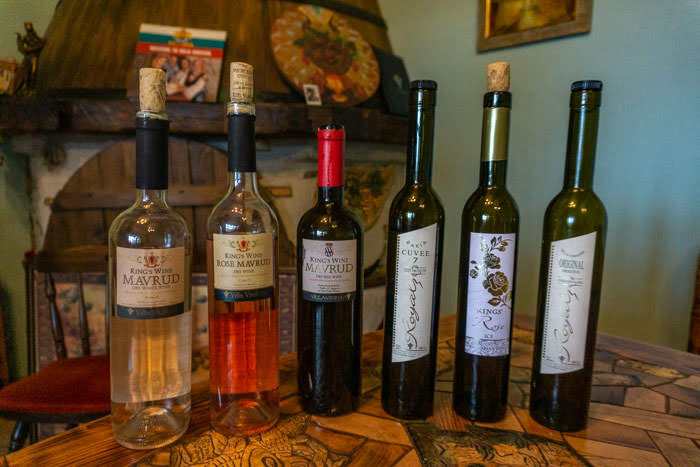
Entertainment Prices in Bulgaria
The last and most discretionary factor of your overall Bulgaria trip cost is going to be the cost of entertainment in Bulgaria, or how much it costs to go to a show or out for a drink in this Balkan nation.
Well, fortunately enough for the budget backpacker, the price of beer in Bulgaria and Bulgaria alcohol prices, in general, are quite low. In fact, even a craft beer, which will certainly be more than a pint of the local lager, will rarely clock in more than around €3, which is excellent when comparing it to the price of beer in other countries like England , Australia, or the USA .
Wine, which the country produces prolifically, is also inexpensive, especially if you opt for local vintages or even homemade wine. The quality can be surprising and it is well worth sampling the local drinks when in Bulgaria.
If you’re interested in visiting the theatre, opera, or ballet while in Sofia in particular, this can be an affordable evening activity as well. If you book in advance, you can expect tickets to be as little as €10 and even the best seats in the house can come in around €25-30.
All in all, if you aren’t a heavy drinker but want to take in a show or cultural event, expect to spend about €5-10 per day on entertainment in Bulgaria.

Average Prices in Bulgaria
As evidenced above, it is incredibly possible to travel in Bulgaria on even the tightest of budgets and still have your money go a very long way. These costs are listed per person per day and assuming that some costs (like accommodation or a car hire) are split between two people.
Accommodation : €10-70 / night
Transportation : €5-15 / day
Food : €10-20 / day
Activities : €5-15 / day
Entertainment : €5-10 / day
All in all, depending on your travel style and habits, plan to spend between €35-130 per day if you want to travel on a tight budget but still allow for the occasional splurge.
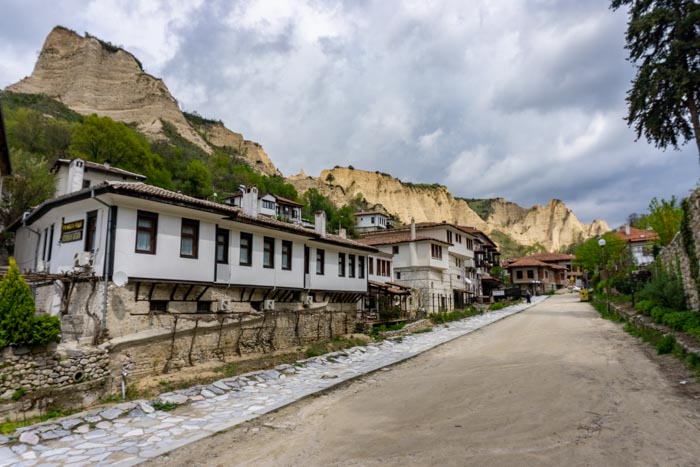
Prices in Bulgaria can be incredibly affordable for travellers from Western European countries, North America, or Oceania which makes it an excellent destination for budget-minded travellers.
Are you planning a Bulgaria travel budget? Have any questions? Let us know in the comments!

Related Posts:

How to Get From Sofia to Thessaloniki by Bus, Train or Car

What To Do in Plovdiv: A 1 or 2 Day Itinerary

The Perfect 1, 2, or 3 Days in Sofia Itinerary

About Maggie Turansky
Maggie is a co-founder and writer for The World Was Here First. Originally from the US, she has lived in five different countries and has travelled to dozens more, both solo and with her partner, Michael. She particularly loves exploring Spain and spending time in the Caucasus and the Baltics. Read more about Maggie
Will be there in September 2023 for the 4th time love the country and the people
Visiting Bulgaria is in my bucket list when pandemic will be under controlled.
Hope you’re able to make it there soon! It’s a really lovely country to visit.
Great information, but what about languages, can you do any of those activities ( guided tours, shows, ordering in a restaurants etc) if you only speak English? Thanks
Hi Roger, I don’t speak Bulgarian and have had absolutely no problem getting around and having a fulfilling time in the country! As with anywhere, it’s always good practice to learn a few words/phrases in the local language but you should have no problem getting by with only English so long as you’re respectful! Hope you’re able to have a great trip 🙂
We can’t wait to visit in 2023!
Hi there I have spent time And looking at pictures From your country,I was born In Denmark but live in the USA I would love to visit your Country when we get the everything under control Regards Erik Jensen
Hope you’re able to visit Bulgaria soon! 🙂
Leave a Comment Cancel reply
- South Africa
- Philippines
- Travel Resources
- Work With Us
- House Sitting Enquiries
How Much Does It Cost to Travel in Bulgaria on a Budget? [Infographic]
![travel costs per day bulgaria How Much Does It Cost to Travel in Bulgaria on a Budget? [Infographic]](https://charlieontravel.com/wp-content/uploads/2016/04/Snowy-street-in-Plovdiv-Bulgaria-Charlie-on-Travel.jpg)
Looking for cheap travel destinations in Europe for a winter break? Let me tell you how much it costs to travel in Bulgaria.
We booked our flights and set off on our winter adventure to Bulgaria after learning that there’s good skiing for bargain prices and that the cost to travel in Bulgaria is low. We weren’t disappointed by Bulgaria and travelling on a budget — even while skiing — was very doable. I have to be honest though and say that although the cost to travel in Bulgaria was good, it was even cheaper to travel in Macedonia.
Our travel budget for Bulgaria includes budget accommodation for two, 3 meals per day, local transport and activities including a 2-day ski trip. This travel budget does not include flights.
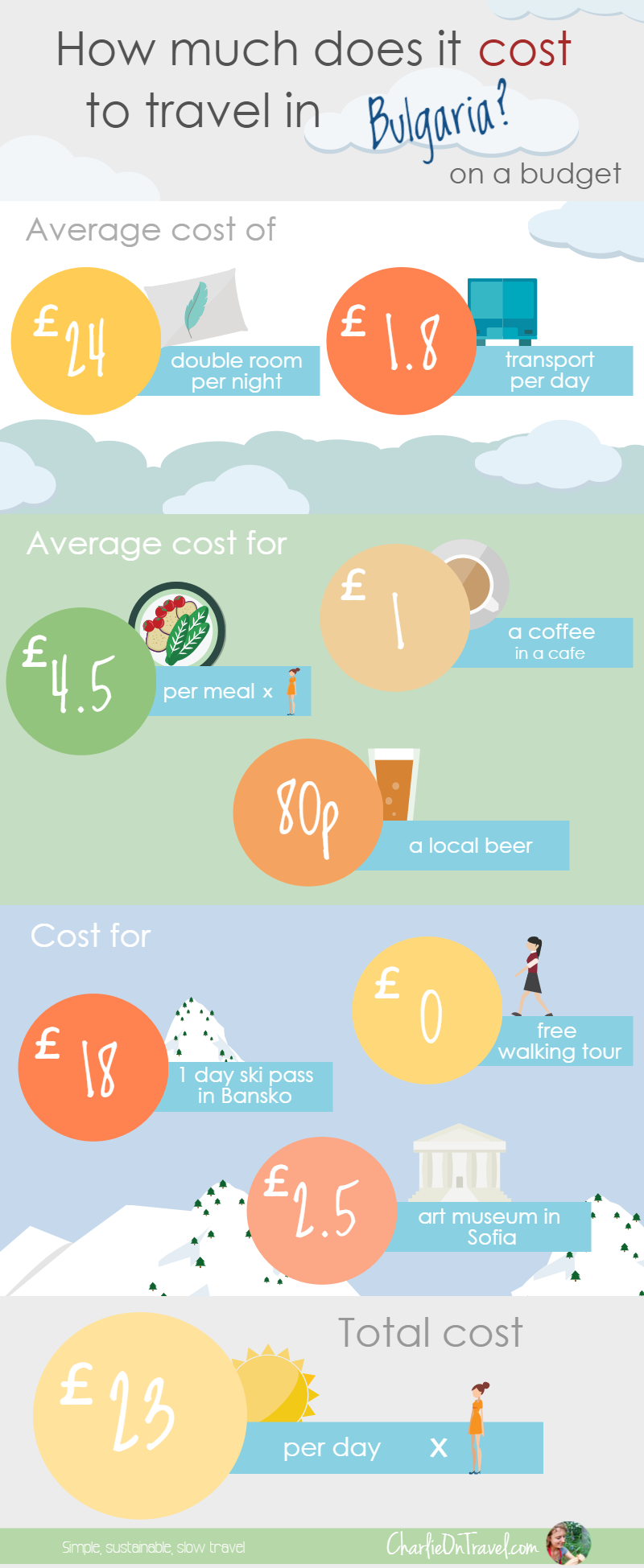
Where we Travelled
We travelled in Bulgaria for a total of 16 days. We travelled to: Sofia , Bansko and Plovdiv .
We flew from the UK to Bulgaria’s capital city, Sofia, where we stayed for 5 days and mostly walked around and ate a bunch of vegan food. We then headed south to go skiing in Bansko. We stayed in Bansko for 5 days and went skiing on 2 of those days. Our final destination was the historic city of Plovdiv, where we enjoyed another 5 days before spending a day travelling back to Sofia and straight through to Macedonia .
Our travel budget is spread across the total 16 days, including the day we spent travelling by bus to Macedonia. We paid a reasonable amount of attention to our budget though our 2-day ski trip did push our average costs up.
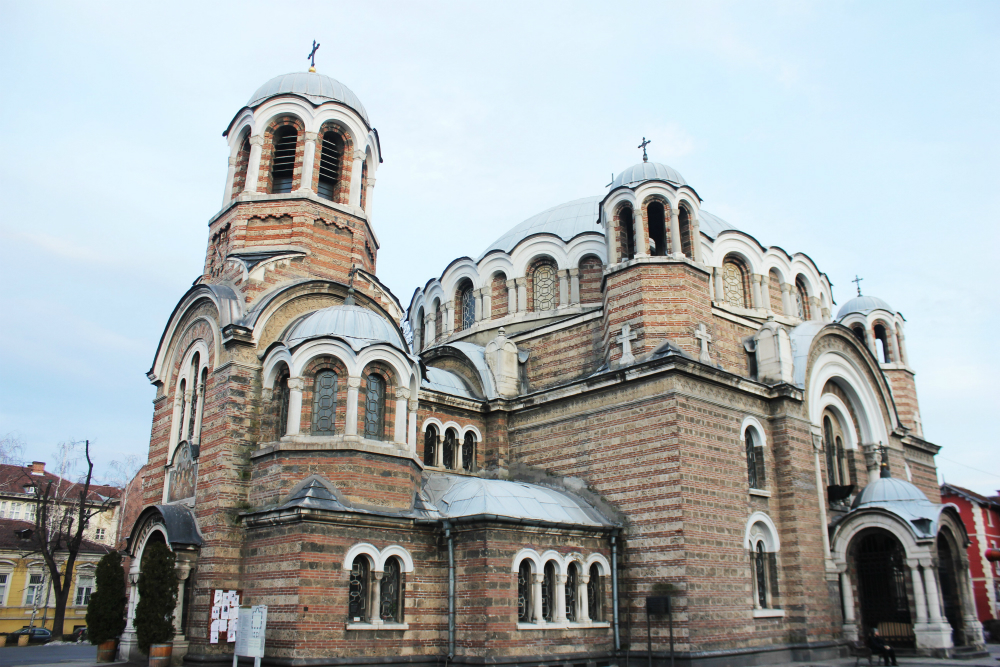
Budget Accommodation in Bulgaria
The biggest cost to travel in Bulgaria definitely came from accommodation, but we still think that we found some pretty good deals. Like all Eastern European countries, you can get dorm beds for pretty cheap in Bulgaria and we met one guy who was staying in a dorm at Hostel Mostel in Sofia for £12 a night including basic meals — if you’re budgeting hard, then check that out for sure.
In Sofia and Bansko, we stayed in cool Airbnb apartments. In Sofia, our shared apartment cost us £23 per night, while Bansko our private apartment came in at the slightly higher price of £24.50 per night. We actually struggled to find cheap accommodation in Bansko because there were so many pricey tourist hotels and package holidays going on and we were skiing DIY style. The apartment we stayed in was the cheapest we could find at the time, though we did admittedly leave it a bit late to book.
When we got to Plovdiv, we opted to stay in a double room in Hostel Old Plovdiv. We’d read so many glowing reviews saying that this hostel was the best place people had ever stayed — and the price as comparable to other accommodation in Plovdiv — so we felt that couldn’t not stay there. The reviews were right, the hostel was amazing. We paid £25 per night, with a breakfast spread included.
Eating in Bulgaria on a Budget
I’m going to be honest and say that we were so taken aback by how little we paid to eat compared to other countries on our first night in Sofia, that we didn’t scrutinise our food spending all that much. We had set ourselves a 31-day vegan travel challenge when we were travelling in Bulgaria, so all of the meals that we ate were vegan.
That first night, we ate at the very lovely vegetarian Sun & Moon Bakery on Gladstone in Sofia. Our meal was all Bulgarian food and two sides, two mains, homemade bread and a glass of red wine cost us just 19lev (£7.32). Incredible, right? Now you can probably see why we didn’t feel the need to budget any harder when it came to eating out.
Local food in Bulgaria tends to be much cheaper than Western food and the same goes for local wine and beer. Avoid eating on the main high streets and instead look for places that are a bit away from the centre. We used Happy Cow to find vegetarian and vegan places — we kept food costs down by looking for restaurants marked as inexpensive.

Don’t forget to grab a local pastry called a banitsa for breakfast, around 3.5lev (£1.40).
Budget Activities in Bulgaria
Thinking about the total cost to travel in Bulgaria, it’s easy to see that we managed to keep our costs down by opting for lots of free activities. Aside from the skiing that is. We joined a free walking tours in both Sofia and Plovdiv , which meant we were able to check out all of the main city sights from the outside and learn a little bit of local knowledge.
Other budget travel activities in Bulgaria included checking out foodie markets in the local areas, as well as museums, churches and ruins. Many of the museums and churches only cost a token amount of lev to enter. If you’re in Plovdiv, definitely don’t forget to go walking up the city’s six hills to catch the sunset.
Skiing was of course the most expensive activity which we did, but skiing in Bulgaria is much cheaper than skiing in the rest of Europe. We discovered later on that skiing in Macedonia is even cheaper! Our 2 days skiing in Bansko worked out reasonably well priced with ski passes costing just 58lev (£18) per day and ski hire 35lev (£14) per day. If you’re a novice skier like me, you can pay just to use the gondola and keep costs down further.

Getting Around Bulgaria on a Budget
When we were in the city, we mostly got around by foot. The cities in Bulgaria are reasonably small so most places are within walking distance. In Sofia, the MRT is really useful and cheap. We stayed in a really central area though, so only used it a couple of times.
When travelling between cities in Bulgaria and out of the country, we always travelled by bus as this tended to be cheapest option. The bus from Sofia to Bansko cost us 16lev (£6.50) each and from Bansko to Plovdiv cost 14lev (£5.70).
The Total Cost to Travel in Bulgaria
After totting up our expenses, the total cost to travel in Bulgaria worked out at £23 per person per day, not including flights. This makes Bulgaria an excellent European travel destination for travellers on a budget. Though, if you think this is cheap, check out how much it costs to travel in neighbouring Macedonia!
Are you travelling to Bulgaria soon? I’d love to hear how much it cost to travel in Bulgaria for you!

Charlie Marchant
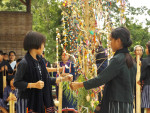
Tai Dam Village in Thailand: The “People Without a Country”
Berlin green travel guide.
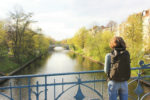
Katie Featherstone
Sounds amazing Charlie, I can’t believe Europe could be this cheap too. Hopefully we’ll get there this summer.
Karianne @ The Good Globe
I really want to return to Bulgaria. I visited Albena, with a day trip to Sofia, with my Mum when I was 16 – but have never made it back! Plovdiv sounds beautiful and we really do need to book ourselves a skiing trip in the next couple of years – maybe Bankso will be a good place to choose. Thanks for the tips!
Charlie on Travel
Hey Karianne – Sofia was amazing, I’d definitely recommend getting back there is you can! Plovidv was also lovely. I was less fond of Bansko (because I’m terrible at skiing) and preferred the much more beautiful Mavrovo in Macedonia (also a ski town, but incredibly beautiful too).
Christine Toda
Good article. We will be in Bulgaria in June…surfing for interesting stories. I like your writing style…feel as though I am right there with you. Thanks.
Leave a reply Cancel reply
About charlie & luke.

We’re Charlie and Luke — UK travel bloggers, adventurers and storytellers. We travel slow and write about sustainable travel . We want to make responsible travel choices and help you do the same. Get to know us .
Subscribe To Our Newsletters
Hand curated travel guides and sustainable travel inspiration straight to your inbox.
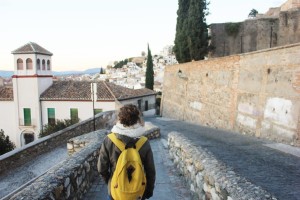

- Bulgaria Travel Tips
Why Bulgaria? Bulgaria is a country in southeastern Europe. While it may not be as well-known as a tourist destination, there is plenty to do and see.
With its beaches, mountain huts, hearty food, historical monasteries, beautiful cathedrals, and Roman ruins, Bulgaria has a lot to offer.
This Bulgaria travel guide will help you plan your next vacation.
Popular Guides
- Places to Visit in Bulgaria
Our Highlight
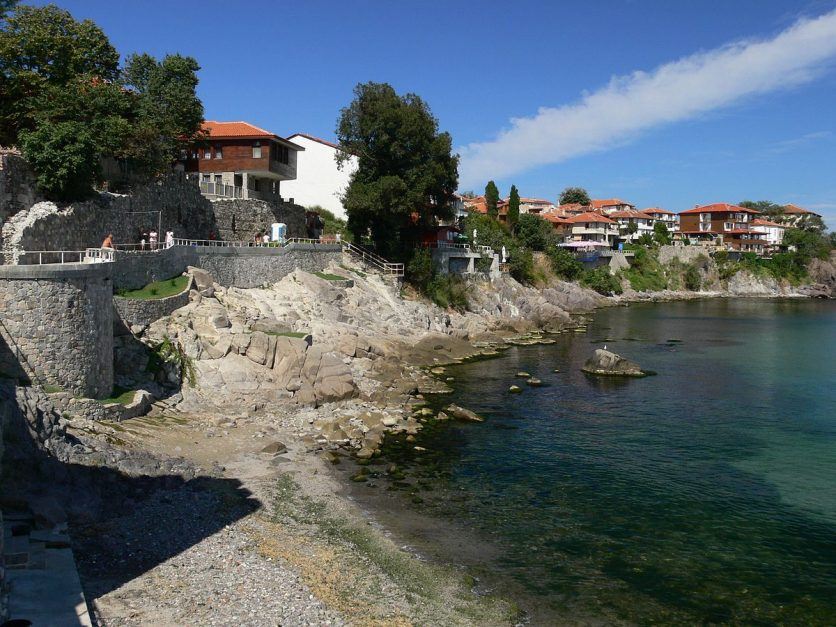
Table of contents
Table of Contents
Fast Facts about Bulgaria
- Power voltage is 230V at 50 Hz.
- The official currency is the Bulgarian lev and 1 lev is equal to 0.57 USD.
- The best way to get around is by car.
- To enter, you will need a U.S. passport valid for three months after entry.
- You do not need a visa if your stay is under 90 days.
- Vivacom, M-Tel, and Telenor are the most popular mobile providers. A prepaid SIM card can be purchased through either of them.
- The sales tax rate is 20%, with a reduced rate of 9% for hotel services.
Things to See and Do in Bulgaria
- Come explore the largest public park in Bulgaria . Located in Varna, the park includes beautiful gardens, a zoo with tigers, kangaroos and bears, and an aquarium.
- National Historical Museum: Come see the largest museum in Bulgaria. Featuring a vast collection of 650,000 historical items, there is plenty to see and learn here about Bulgarian history.
- Alexander Nevsky Cathedral: One of the largest Eastern Orthodox cathedrals in the world, come explore this majestic cathedral in Sofia.Dating back to 1912 and reaching heights of 148 feet, this cathedral holds numerous mosaics, murals, and royal thrones, as well as an Orthodox museum.
- Come see these Roman ruins. Built in the 2nd century AD, these ancient thermal baths were how the Romans once bathed.The third largest Roman ruins complex in Europe, the roman baths are a fascinating glimpse into the past.
Bulgaria Travel Guides
- 10 Places to Visit in Bulgaria This Year
Accommodation
Budget – You can find prices for a hostel for about 18-22 leva. Enjoy dorm-styled or private rooms, free breakfast, storage lockers, and great locations in the city.
Mid Rang e – For mid-range hotels, expect to pay between 60-80 leva per night. Stay in private rooms, workout at the fitness center, dine at the hotel restaurant and bar, and swim in the pool (indoor or outdoor).
High End – Upscale hotels will range from 150-300 leva per night. Take in the best with top-of-the-line service, polished guest rooms with minibars and refrigerators, room service, multiple restaurants and a nightclub, babysitting services, outdoor pools with a pool bar, and more.
Check out our favorite booking platforms Booking.com , Tripadvisor and VRBO for the best deals on accommodation in Australia
Food : The cuisine of Bulgaria favors vegetables, dairy, meat like pork or chicken, seafood, and spices as staples. Shopska salad (tomato and cucumber salad with Bulgarian feta cheese) and tarator (cold yogurt soup) are popular dishes.
If you’re out for breakfast or want a treat, try a banitsa, a pastry with cheese and yogurt. Expect to pay around 10-20 leva per meal for an average restaurant or 30-50 leva for high-quality restaurants.
The Best Ways to Get Around Bulgaria
Getting to bulgaria:.
Getting to Bulgario: The Sofia International Airport is the main airport and is just 6 miles from the center of Sofia, Bulgaria’s capital. Other major cities like Varna and Plovdiv also have their own airport, though only Varna takes flights from the US.
Flights: You can check for the best flights on Skyscanner
Transportation:
Train: Trains, especially overnight trains, are a good way to get a more scenic view of Bulgaria.There are three types of trains express (ekspresen), fast (barz) and slow (patnicheski). Go from the capital Sofia to Varna in 7.5 hours for 25-30 leva.
Buses : Buses are a cheap way to get around and can be found throughout major cities and towns. Fares start at about 1 lev.
Metro: Sofia has its own metro that travels throughout the city, with speeds up to 50 miles per hour. Prices start at 1.60 leva. The metro operates from 5 AM to midnight, with new trains arriving every 7-14 minutes.
Taxis / Uber : Taxis are an alternative way to get around. Most taxis have meters, though rates will vary. You can find taxis with a starting fee of 0.70-0.80 lev and a meter of 0.70 lev per kilometer traveled. Take a taxi from the airport to the city center of Sofia, for example, for about 15 leva.
Car Rental: To rent a car, you need to be at least 21 years old and have a U.S. license as well as an International Driver’s Permit. Prices average around 60 leva per day.
You can also compare prices here
When to go To Bulgaria
The best time to visit is right before or after the summer (April-May or September-October).
In these months, you can find lower prices while still having pleasant weather (about 70-75 degrees Fahrenheit for spring, 65-70 degrees Fahrenheit for autumn) for outdoor activities.
If you are going to Bulgaria to ski, then December-February is the best time, though note that some of the smaller towns will be shut down during this time.
Where to Stay in Bulgaria
Les Fleurs Boutique Hotel : Stay in this trendy four-star hotel in the capital of Sofia. Attractions like the National Palace of Culture and the Alexander Nevsky Cathedral are both just a short trip away. Once you’re done exploring, come back to relaxed rooms with minibars and flat screen TVs, complimentary breakfast, and the hotel’s restaurant.
Ramada Plovdiv Trimontium : Stay in the heart of Plovdiv at this great four-star hotel. Great attractions like the Plovdiv Roman Theater and the ruins of Nebet Tepe are just a 15-minute walk away. The hotel comes with free breakfast and Wi-Fi, an outdoor pool, and a casino.
Grand Hotel Varna : Be right by the Bulgarian Black Sea at this all-inclusive 5-star hotel in Varna. Stay in great rooms with balconies and sea views, head to the gym, swim in the outdoor pool, relax on the private beach, and dine at one of the 3 restaurants. Nearby attractions include the Sea Garden, the Aladzha Monastery, and Evxinograd, the 19 th -century palace.
What to Pack for Bulgaria
- Power Adapter: As the voltage is higher than the US, a power adapter will ensure all of your electronics can be charged properly.
- Walking Shoes: Keep your feet comfortable with a sturdy pair of walking shoes.
- Modest Clothing: If your trip itinerary includes going to monasteries, make sure to bring clothes that cover your knees and elbows
See our packing tips: packing tips
Bulgaria Travel Guide: Best Booking Resources
Whenever we travel to we make sure to start with these companies. We have tried a lot of different ones over the years and all of these have consistently proven to be the best when it comes to offering great prices.
We have used every one of these personally and continue to do so.
- Booking.com : This is our go site to when comparing prices for accommodation. It usually has the cheapest prices, especially in Europe and we love their interface. Not to mention you get free cancellation and you are guaranteed the best price.
- Trip Advisor : What we like about Trip Advisor is that we can look at all the reviews and then book our accommodation. TripAdvisor is where we go when we want to compare prices with multiple accommodation providers.
- VRBO : is the main search engine we use when we are looking for a home or apartment rental. It can sometimes be cheaper than hotels and it is the best way to stay in areas that offer a more local feel.
- Hostelworld : With one of the largest databases of hostels in the world, Hostelworld is the go-to site when you are looking for budget accommodation.
- Skyscanner : This is the first place we check for flights. It consistently comes back with the cheapest and best options. It allows us to compare a lot of airlines to get the best price.
- Rome 2 Rio : If you want to see how to get somewhere by plane, train, bus, ferry or car Rome2Rio lays it all out for you as well as related costs.I love how they show it all to you on a Google Map and it works offline.
- Get Your Guide: For all your day trip and city guide needs, we use Get Your Guide. It has the world’s largest collection of things to do with more than 30,000 activities in 7500 destinations.
- World Nomads Insurance: When traveling to Italy you should always have travel insurance. We have found the best bang for your buck is by far World Nomads.
Bulgaria Travel Guide: Related Articles
Nomadic Matt's Travel Site
Travel Better, Cheaper, Longer
Sofia Travel Guide
Last Updated: August 30, 2023

Sofia is the stylish capital city of Bulgaria , nestled beneath the towering peak of Mount Vitosha. While the mountain is the first thing you’ll notice when you arrive, Sofia has so much more to offer than just the view. The city boasts a rich history, friendly people, cheap drinks, and delicious food.
In short, it’s a budget traveler’s paradise.
Admittedly, when I first arrived, I expected a dreary ex-communist city full of blocky architecture and a lack of personality.
Fortunately, I was way off.
Instead, I found a multicultural, fast-growing, and modernizing European hub popular with the backpacker crowd. In fact, Sofia impressed me so much that I ended up staying a few extra days! It’s a perfect budget-travel destination that sees a fraction of the tourists you’ll find in Western Europe.
This travel guide to Sofia can help you plan your trip, save money, and make the most out of your time in this incredible destination.
Table of Contents
- Things to See and Do
- Typical Costs
- Suggested Budget
- Money-Saving Tips
- Where to Stay
- How to Get Around
- How to Stay Safe
- Best Places to Book Your Trip
- Related Blogs on Sofia
Top 5 Things to See and Do in Sofia
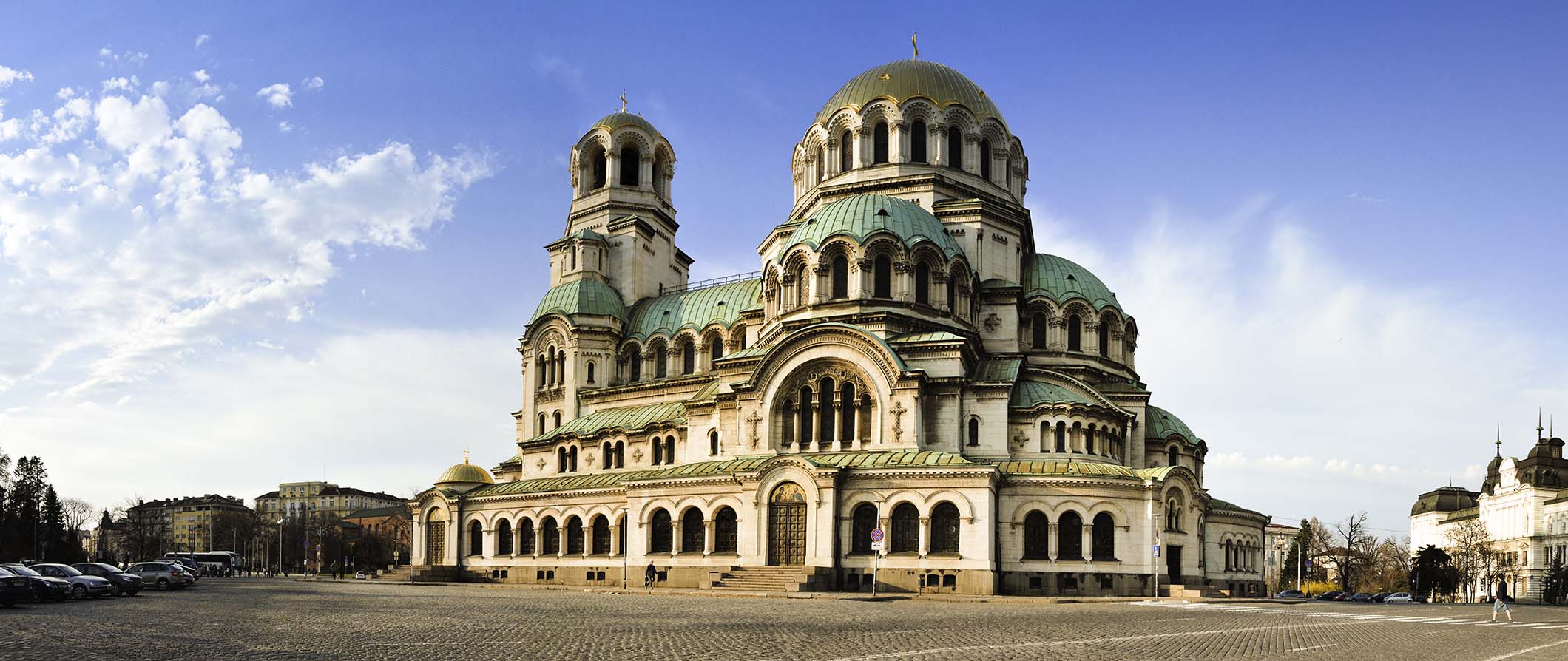
1. Visit the Alexander Nevsky Cathedral
Constructed in the early 20th century, this is one of the world’s largest Eastern Orthodox cathedrals (it’s even made the list of the 50 largest Christian churches in the world). The gorgeous cathedral can hold up to 5,000 people at a time. The cathedral was named after the Russian prince, Saint Alexander Nevsky and was intended to honor the Russian soldiers who lost their lives when fighting in the Russo-Ottoman war during the late 1800s as the war resulted in Bulgaria’s independence from the Ottoman empire. Visitors can explore the stunning interior and the museum of Bulgarian religious icons in the cathedral crypt, famed to hold the most extensive collection of Orthodox religious icons in Europe. Topped with the characteristic gilded domes of the Neo-Byzantine style and with a beautiful Italian marble interior, it’s my absolute must-see here. The bell tower holds 12 bells that weigh 23 tons!
2. See Sveti Georgi Rotunda
Dating to the fourth century, this tiny circular Roman building is the oldest preserved structure in Sofia and sits undisturbed amongst other Roman ruins. The red brick building was built in the 4th century on a site that was believed to be an even older pagan temple. Originally a bathhouse, the interior is painted with magnificent murals that date between the 6th and 14th centuries. In total there are five layers of ornate frescos that were painted over when the church was converted into a mosque during Ottoman rule. They were only uncovered during the church’s restoration in the 20th century. The rotunda and the ruins are surrounded by modern government buildings and preserved in a large courtyard that remains open to the public. The small church holds weekday services so just dress respectfully.
3. Hike Vitosha mountain
Head for a hike to reach the summit and you’ll be treated to incredible panoramic views over Sofia and the surrounding area. The highest summit is Cherni Vrah at 2,290 meters (7,513 feet). Most trails just take a couple of hours. It’s surprisingly easy to reach Vitosha’s trails, all you have to do is take a bus to the Simeonovo ski lift. Once you arrive, you’ll feel worlds away from the hustle and bustle of the city, surrounded by craggy rocks and ancient pine trees. Vitosha mountain is part of Vitosha National Park, which is one of the oldest in the Balkans and includes a massive cave you can explore.
4. Visit the National Gallery Quadrat 500
This enormous gallery contains artwork from both the National Gallery and the former Museum of Foreign Art. Having opened in 2015, Quadrat 500 is the most recent admission to the National Gallery and contains 1,700 pieces of art. Wander through 28 halls and four levels filled with art from around the world and you’ll find works from beloved Bulgarian 19th-20th century artists here (including Georgi Mashev and Vladimir Dimitrov) alongside African tribal masks and sketches from Renoir and Matisse. Admission is 10 BGN. You can receive discounted admission on Thursdays for 2 BGN. The museum also hosts a variety of lectures in both Bulgarian and English throughout the year.
5. Day trip to Rila Monastery
This is the most important Eastern Orthodox monastery in the country, having been a spiritual space for over 1,000 years. Rila was founded in the 10th century by Saint John of Rila. Then a simple hermit, the site of the monastery was believed to be the place where he lived and died. After his death, they were converted into a monastery that was a center of spiritual and social activity during the medieval period. The original building was destroyed in a fire in the early 19th century and later rebuilt in the Bulgarian Renaissance style in the mid-1800s. You’ll find stunning religious art and colorful architecture, including golden domes and striped archways. Entrance to the monastery is free.
Other Things to See and Do in Sofia
1. take a free walking tour.
The first thing I do in a new city is take a free walking tour. It’s the best way to see the main sights on a budget and connect with a local guide who can answer all your questions. Free Sofia tour runs regular free walking tours that cover all the main highlights. Just be sure to tip your guide at the end!
2. See the Presidency and the Guard Ceremony
The Bulgarian president’s office lies within the eastern end of the same building that houses the Sheraton Hotel. The office isn’t open for public viewing, but the changing of the guard occurs every hour. The stomping march of the uniform-clad men can be heard all around the area. It doesn’t take long but it’s worth stopping by to see.
3. See what’s on at the National Palace of Culture
Usually referred to as the NDK, this building has 15 separate halls, making it the largest cultural complex in the country. During the summer, there is a regular schedule of various events and a diverse range of shows to check out, including concerts, dance performances, and theater. Check out their website to see what’s on during your visit.
4. Attend an event at the Red House
Home to political debates, poetry readings, and dramatic performances, the Red House is an independent cultural center that’s not as mainstream as the NDK. The building itself is a mansion from the early 20th century that once belonged to Bulgarian sculptor Andrey Nikolov. Events are usually free, and often in English. Check their website to see what’s on during your visit.
5. Have fun in Kokolandia
This is an outdoor adventure activity center located inside Borisova Gradina park. There are all sorts of fun challenges here including rope climbing, rock climbing, mini-golf, and a tree-top obstacle course. This adventure park is considered kid- and adult-friendly (though it’s mostly for kids; there are trampolines and bouncy castles too). Activities cost 6 BGN per person.
6. Go paintballing
Paintballing has become increasingly popular throughout Sofia. There are over half a dozen different places you can go that offer equipment rentals, paintballs, and both indoor and outdoor gaming areas. It’s super fun and a great way to spend a couple of hours! Reservations are usually required and sessions cost 90 BGN.
7. Stroll Vitosha Boulevard
This is a high-end pedestrian street filled with fashionable boutiques and designer shops, but it’s worth the stroll for the view of snow-capped Vitosha Mountain. Art Nouveau buildings line the street, and there are several small sidewalk cafes where you can grab a coffee and relax. Come here to browse, people-watch, and take in the local pace of life.
8. Check out the Museum of Socialist Art
This museum in Sofia showcases art from when the country was under Communist rule (1944-1989). A large outdoor sculpture park contains everything from a giant statue of Lenin that once stood in the center of the city to the red star that topped the socialist party headquarters. Inside you’ll find propaganda paintings, documentary videos, photographic galleries, and more. Admission is 6 BGN.
9. See the National Museum of Military History
This is one of the most visited museums in Sofia. There are three floors, each featuring detailed exhibits on warfare in Bulgaria from antiquity and the Middle Ages to World War II. You’ll see rebel flags, military uniforms, and artifacts, including the personal effects of actual soldiers. There’s also a collection of vehicles, including tanks and fighter planes. Admission is 8 BGN.
10. Visit the Archaeological Museum
This museum is located inside a former mosque that dates to the 1400s. The museum is home to a collection of Roman and medieval items, including a delicate mosaic floor from the Church of Sveta Sofia. Other artifacts come from the Thracians, a group of Indo-European tribes living in the area since the 8th century BCE. The incredibly detailed Thracian gold burial mask from the 4th century BCE has an especially impressive life-like appearance. Admission is 10 BGN.
11. Tour the Sofia History Museum
Housed inside the former Central Mineral Baths from the Ottoman era, the history of Sofia — from prehistory to the modern day — is on full display here. The museum spans two floors and includes rooms dedicated to the Bulgarian royal families of the 19th and 20th centuries. These rooms provide a glimpse of the lavish lives they lived. There’s even a horse carriage from Marie Antoinette here. Admission is 6 BGN.
12. Go skiing
If you’re here during the winter, hit the slopes on Vitosha. Unlike in much of Western Europe, skiing is super affordable here. You can get a lift pass for as little as 50 BGN, making this one of the most affordable winter sports destinations on the continent!
For more information on other cities in Bulgaria, check out these guides:
- Plovdiv Travel Guide
- Varna Travel Guide
- Veliko Tarnovo Travel Guide
Sofia Travel Costs
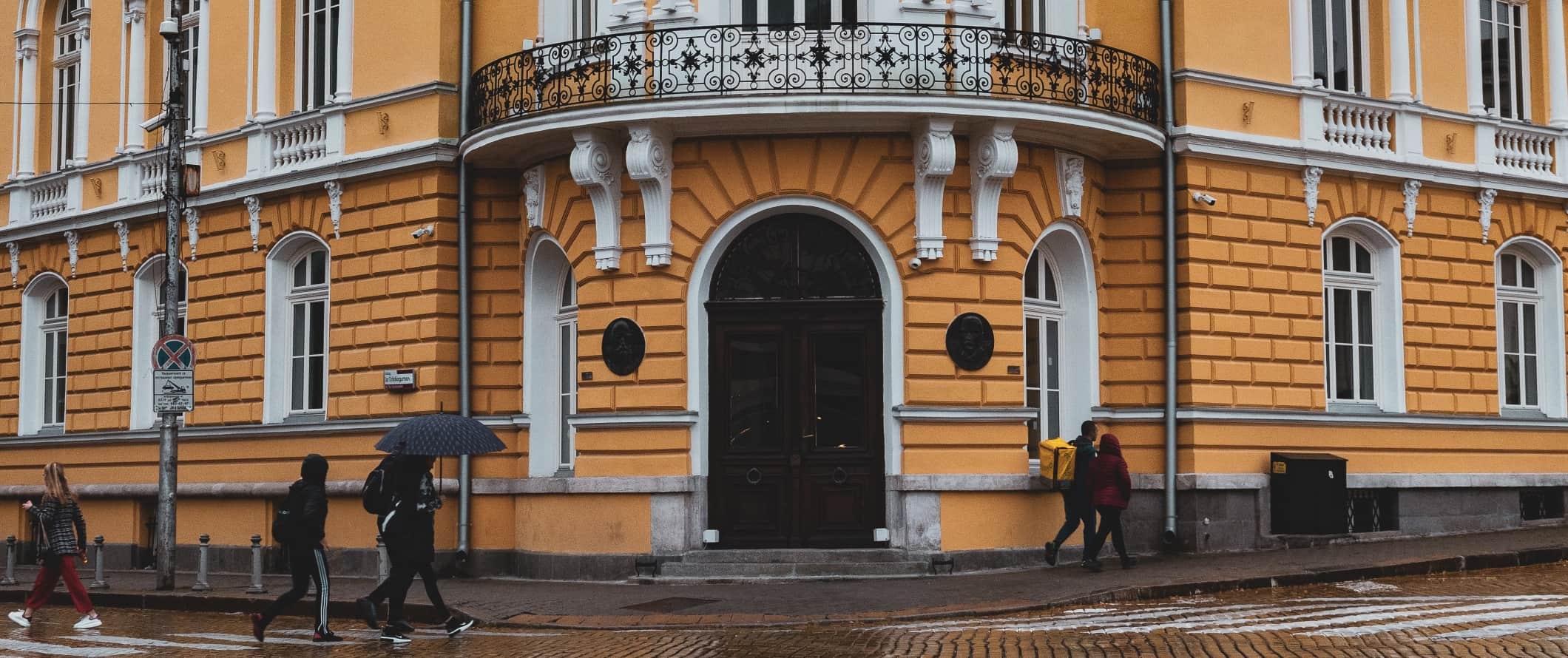
Hostel prices – A bed in a hostel dorm with 4-6 beds costs between 12-25 BGN per night. For a private room in a hostel, expect to pay between 35-75 BGN per night. Free Wi-Fi is standard and most hostels also have self-catering facilities.
If you’re traveling with a tent, wild camping is illegal in Bulgaria. There are campgrounds outside the city, however, you can’t book online or find prices in advance so you’ll need to check on arrival.
Budget hotel prices – Budget two-star hotels cost around 40-65 BGN per night. Expect basic amenities like TV and free Wi-Fi.
Airbnb is available all over the city, with private rooms starting at 30-55 BGN per night. Entire homes and apartments start around 55 BGN though prices average double that.
Food – Bulgarian cuisine is hearty and similar to that of its Balkan neighbors. Meaty stews with lamb, goat, or chicken are common, as are sausages and all kinds of yogurts (dairy products are big here). Popular dishes include kebapche (grilled mincemeat), shopska salad (a salad with tomato, cucumber, and cheese; similar to Greek salad), and moussaka.
You can find foods like banica (cheese pastry) for as little as 1.50 BGN, or you can pick up a hearty shopska salad or kebab for about 5 BGN. Pizza slices and hot dogs are usually no more than 4 BGN, while a sandwich is between 4-5 BGN.
A combo meal at McDonald’s costs 12 BGN while a meal at a mid-range restaurant with a drink shouldn’t cost more than 15-20 BGN.
If you want to splash out, a three-course dinner with a glass of wine at an upscale restaurant ranges from 35-50 BGN.
Beer is around 4 BGN while a latte/cappuccino costs around 3.70 BGN. Bottled water is 1.60 BGN.
Grocery shopping is incredibly affordable here, costing around 50-65 BGN per week for basic staples like rice, pasta, seasonal produce, and some meat.
Backpacking Sofia Suggested Budgets
If you’re backpacking Sofia, expect to spend about 60 BGN per day. On this budget, you’ll be staying in a hostel dorm, cooking your meals, limiting your drinking, taking public transportation to get around, and sticking to mostly free activities like free walking tours and hiking. If you plan on drinking, add 5-10 BGN to your daily budget.
On a mid-range budget of 150 BGN per day, you can stay in a private Airbnb, eat out for most meals at cheap fast food joints, enjoy a couple of drinks, take the occasional taxi to get around, and do more paid activities like visiting museums and attending performances.
On a “luxury” budget of 275 BGN or more per day, you can stay in a hotel, eat out for all your meals, drink more, rent a car or take more taxis, and do whatever tours and activities you want. This is just the ground floor for luxury though. The sky is the limit!
You can use the chart below to get some idea of how much you need to budget daily, depending on your travel style. Keep in mind these are daily averages — some days you’ll spend more, some days you’ll spend less (you might spend less every day). We just want to give you a general idea of how to make your budget. Prices are in BGN.
Sofia Travel Guide: Money-Saving Tips
Since Sofia is the capital city of Bulgaria, prices are a little higher here when compared to other parts of the country. However, it’s still incredibly affordable as there are so many cheap and free things to do. Here are some ways to save money in Sofia during your visit:
- Stay with a local – If you look early, you can likely find a Couchsurfing hosts in Sofia. This not only gets you free accommodation but you’ll connect with a local who can share their insider tips and advice.
- Take a free walking tour – Walking tours are a great way to get familiar with the city and its culture while on a budget. Just be sure to tip your guide at the end!
- Look for free events – There are always free events and festivals happening in Sofia (especially in the summer). Be sure to ask your hostel staff or host about what’s going on during your visit.
- Bring a water bottle – The tap water here is safe to drink so bring a reusable water bottle to save money and reduce your plastic use. LifeStraw is my go-to brand as their bottles have built-in filters to ensure your water is always clean and safe.
Where to Stay in Sofia
Sofia has several fun, clean, and affordable hostels. They fill up fast during the summer so book early. Here are my suggested places to stay in Sofia:
- Hostel Mostel
- Hostel Ivory Tower
- Park Hsotel Sofia
How to Get Around Sofia
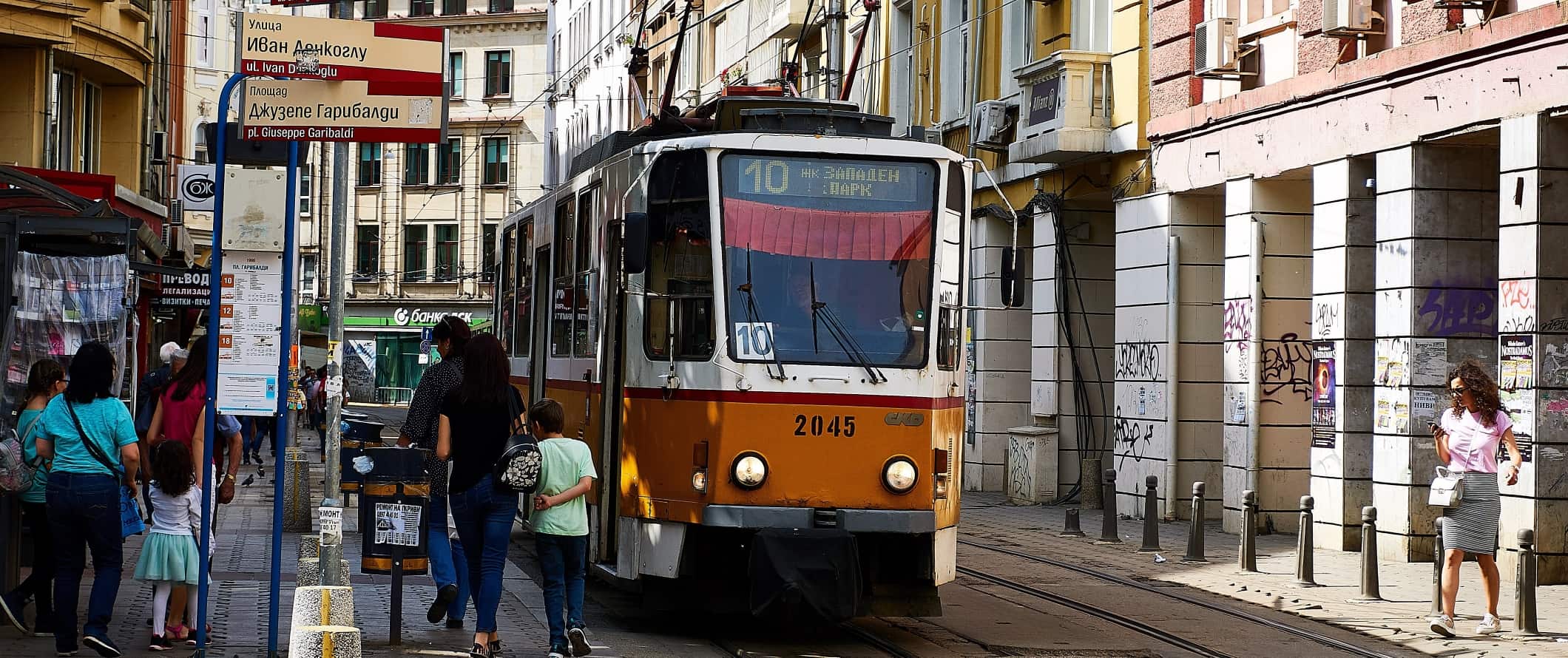
Public transportation – Sofia’s metro has two lines connecting the city center and the airport, as well as the central bus and train stations. Individual tickets are 1.60 BGN each, but they can’t be used on the buses, trams, or trolleybuses.
However, you can purchase a day pass for 4 BGN or a three-day pass for 10 BGN with unlimited rides on all public transportation. Use the official website (sofiatraffic.bg) to look up schedules and routes. This is by far the best deal for getting around the city.
Sofia’s bus system is extensive and can get you just about anywhere you need to go using it. You can use the sofiatraffic.bg website or the Moovit app to help plan your journey. You’ll need the exact change to buy a ticket from the driver on board the bus. Tickets are 1.60 BGN and you can purchase a 10-ride pass for 12 BGN.
Taxi – The normal start rate for a taxi in Sofia is 2 BGN, and then an additional 1-2 BGN per kilometer. The rate at night is 1.99 BGN per kilometer. While affordable, they can add up fast if you use them often so stick to public transportation if you can.
Bicycle – There are lots of bicycle rental services in Sofia. You can rent a bicycle for one full day for about 20 BGN. Sofia Bike Rental and Rent a Bike Sofia are two good options.
Car rental – Car rentals are super affordable here, costing as little as 25 BGN per day. You don’t need one to get around the city, however, if you want to explore the region a car might be helpful. Drivers need to be at least 21 years old and have an IDP (International Driving Permit).
When to Go to Sofia
Sofia has four distinct seasons, of which summer (June-August) is the busiest. June can be quite rainy, but otherwise, the daily temperature is usually over 30°C (86°F). Keep in mind that this is the most expensive time to visit, as prices for hostels and hotels increase.
I personally think the best time to visit is spring (April-May) or fall (September-October). Both seasons have pleasant temperatures, fewer tourist crowds, and lower prices. The foliage around Mount Vitosha is spectacular during the fall, making for some excellent hiking. Temperatures range from 5-21°C (41-70°F) in the spring and 6-17°C (42-62°F) in the fall.
Winter (December-March) is the quietest time of year to visit, as temperatures drop below freezing. The weather can be snowy and unpredictable during this time. If you like winter sports, this is the best time to visit for skiing Mount Vitosha or nearby Bansko. Accommodations are cheapest during this time as well. If you’re not coming for winter activities, though, I’d skip a visit during the winter.
How to Stay Safe in Sofia
Sofia is very safe. Scams and petty crimes like pick-pocketing are the most common danger you’ll face, but those are rare. Nevertheless, always keep your valuables secure and out of sight just to be safe.
Solo female travelers should generally feel safe here, however, the standard precautions apply (never leave your drink unattended at the bar, never walk home alone intoxicated, etc.).
When it comes to scams, if a stranger stops to talk to you out of the blue, be aware that they may be working in a team to try and grab your wallet. The best thing to do is ignore them and keep walking. Some taxi drivers have been known to overcharge their customers, so make sure your driver has a metered cab before you get in it.
You can read about common travel scams to avoid right here .
Pedestrian safety can be a concern as some drivers do not give pedestrians the right of way. Take caution when crossing the street.
If you experience an emergency, dial 112 for assistance.
Always trust your gut instinct. Make copies of your personal documents, including your passport and ID. Forward your itinerary along to loved ones so they’ll know where you are.
The most important piece of advice I can offer is to purchase good travel insurance. Travel insurance will protect you against illness, injury, theft, and cancellations. It’s comprehensive protection in case anything goes wrong. I never go on a trip without it as I’ve had to use it many times in the past.
Sofia Travel Guide: The Best Booking Resources
These are my favorite companies to use when I travel. They consistently have the best deals, offer world-class customer service and great value, and overall, are better than their competitors. They are the companies I use the most and are always the starting point in my search for travel deals.
- Skyscanner – Skyscanner is my favorite flight search engine. They search small websites and budget airlines that larger search sites tend to miss. They are hands down the number one place to start.
- Hostelworld – This is the best hostel accommodation site out there with the largest inventory, best search interface, and widest availability.
- Booking.com – The best all around booking site that constantly provides the cheapest and lowest rates. They have the widest selection of budget accommodation. In all my tests, they’ve always had the cheapest rates out of all the booking websites.
- HostelPass – This new card gives you up to 20% off hostels throughout Europe. It’s a great way to save money. They’re constantly adding new hostels too. I’ve always wanted something like this and glad it finallt exists.
- Get Your Guide – Get Your Guide is a huge online marketplace for tours and excursions. They have tons of tour options available in cities all around the world, including everything from cooking classes, walking tours, street art lessons, and more!
- The Man in Seat 61 – This website is the ultimate guide to train travel anywhere in the world. They have the most comprehensive information on routes, times, prices, and train conditions. If you are planning a long train journey or some epic train trip, consult this site.
- Rome2Rio – This website allows you to see how to get from point A to point B the best and cheapest way possible. It will give you all the bus, train, plane, or boat routes that can get you there as well as how much they cost.
- FlixBus – Flixbus has routes between 20 European countries with prices starting as low 5 EUR! Their buses include WiFi, electrical outlets, a free checked bag.
- SafetyWing – Safety Wing offers convenient and affordable plans tailored to digital nomads and long-term travelers. They have cheap monthly plans, great customer service, and an easy-to-use claims process that makes it perfect for those on the road.
- LifeStraw – My go-to company for reusable water bottles with built-in filters so you can ensure your drinking water is always clean and safe.
- Unbound Merino – They make lightweight, durable, easy-to-clean travel clothing.
- Top Travel Credit Cards – Points are the best way to cut down travel expenses. Here’s my favorite point earning credit cards so you can get free travel!
Sofia Travel Guide: Related Articles
Want more info? Check out all the articles I’ve written on backpacking/traveling Bulgaria and continue planning your trip:
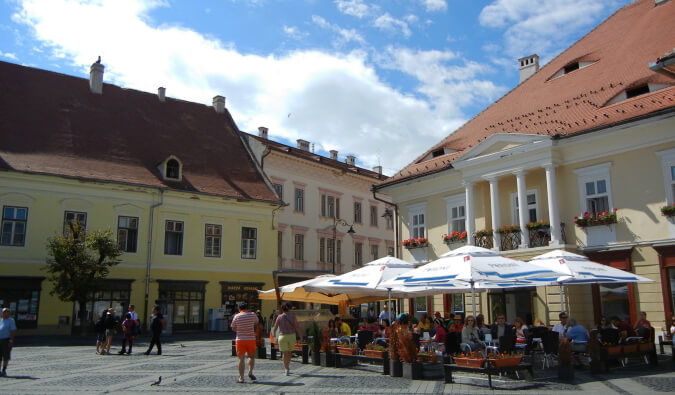
The Cost of Traveling Far Eastern Europe
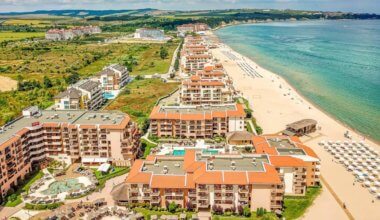
I Despise Sunny Beach. Here’s Why You Should Not Visit There
Get my best stuff sent straight to you, pin it on pinterest.
- Where To Stay
- Transportation
- Booking Resources
- Related Blogs
Cost of a Trip to Sofia, BG & the Cheapest Time to Visit Sofia
The average price of a 7-day trip to Sofia is $1,111 for a solo traveler, $1,995 for a couple, and $3,741 for a family of 4 . Sofia hotels range from $28 to $87 per night with an average of $55, while most vacation rentals will cost $80 to $280 per night for the entire home. Average worldwide flight costs to Sofia Airport ( SOF ) are between $714 and $1,092 per person for economy flights and $2,241 to $3,427 for first class. Depending on activities, we recommend budgeting $21 to $47 per person per day for transportation and enjoying local restaurants.
See below for average , budget , and luxury trip costs. You can also look up flight costs from your airport for more tailored flight pricing.
The Cheapest Times to Visit Sofia, BG
On average, these will be the cheapest dates to fly to SOF and stay in a Sofia hotel:
- January 1st to April 1st
- September 10th to December 16th (except the week of September 17th)
The absolute cheapest time to take a vacation in Sofia is usually mid January .
Average Sofia Trip Costs
Average solo traveler.
The average cost for one person to visit Sofia for a week is $740-$1,618 ($106-$231 per day)
Food, Travel, and Sightseeing : $21 to $47 per day for one person’s daily expenses
Flights : $407 to $983 for economy
Lodging : $31 to $51 per night for one 2 or 3-star hotel room
or $33 to $41 per night for a 1-bed vacation rental
Average Couple’s Trip
The average cost for a couple to visit Sofia for a week is $1,908-$3,148 ($273-$450 per day)
Food, Travel, and Sightseeing : $42 to $94 per day for two people’s daily expenses
Flights : $814 to $1,966 for economy
Average Family Vacation
The average cost for 4 people to visit Sofia for a week is $2,492-$5,860 ($356-$837 per day)
Food, Travel, and Sightseeing : $84 to $188 per day for four people’s daily expenses
Flights : $1,628 to $3,932 for economy
Lodging : $62 to $102 per night for two 2 or 3-star hotel rooms
or $46 to $62 per night for a 2-bed vacation rental
Traveling Cheap to Sofia
How cheap can you make a vacation to Sofia? The cheapest trip to Sofia is about $86 per person per day for travelers willing to take standby flights, deal with inconvenience, and otherwise limit travel expenses. About 11% of rentals are available in the $0 to $100 range for an entire place, and vacation rentals can be booked for as low as $20 per night. These inexpensive rentals must be booked as early as possible and may not be in the most desirable areas. 1-star hotels are more likely to be available, with rooms starting at around $24.
Even cheaper trips are possible depending on where you live and whether you can drive. Check the cheapest times to fly for more saving ideas.
Budget Solo Traveler
The lowest cost for one person to visit Sofia for a week is $604-$1,504 ($86-$215 per day)
Food, Travel, and Sightseeing : $11 to $23 per day for one person’s daily expenses
Lodging : $24 to $28 per night for one 1-star hotel room
or $20 to $60 per night for a 1-bed vacation rental
Budget Couple’s Trip
The lowest cost for a couple to visit Sofia for a week is $1,088-$2,648 ($155-$378 per day)
Food, Travel, and Sightseeing : $22 to $46 per day for two people’s daily expenses
Budget Family Vacation
The lowest cost for 4 people to visit Sofia for a week is $2,116-$5,152 ($302-$736 per day)
Food, Travel, and Sightseeing : $44 to $92 per day for four people’s daily expenses
Lodging : $48 to $56 per night for two 1-star hotel rooms
or $30 to $96 per night for a 2-bed vacation rental
Overall it is very easy to travel to Sofia cheaply.
The Cost of a Luxury Sofia Trip
There is no true ceiling on the cost of a luxury trip, so our estimates are based on what most people do in Sofia.
Luxury Solo Traveler
The high-end price for one person to visit Sofia for a week is $1,602-$6,531 ($229-$933 per day)
Food, Travel, and Sightseeing : $38 to $89 per day for one person’s daily expenses
Flights : $904 to $2,212 for first class
Lodging : $72 to $87 per night for one 4 or 5-star hotel room
or $280 to $616 per night for a preferred vacation rental
Luxury Couple’s Trip
The high-end price for a couple to visit Sofia for a week is $2,772-$9,366 ($396-$1,338 per day)
Food, Travel, and Sightseeing : $76 to $178 per day for two people’s daily expenses
Flights : $1,808 to $4,424 for first class
Luxury Family Vacation
The high-end price for 4 people to visit Sofia for a week is $5,544-$16,512 ($792-$2,359 per day)
Food, Travel, and Sightseeing : $152 to $356 per day for four people’s daily expenses
Flights : $3,616 to $8,848 for first class
Lodging : $144 to $174 per night for two 4 or 5-star hotel rooms
or $392 to $862 per night for a preferred vacation rental
Sofia Hotel Prices
The cost of staying in Sofia is much lower than the average city. On average hotels are less expensive than vacation rentals. Luxury vacation rentals are more expensive in Sofia due to very high property costs. The graphs below show how much cost can vary depending on the type of experience you’re looking for.
Sofia Lodging Cost by Star Status
The average price for the class of hotel is on the (y) axis. The hotel class (out of 5 stars) is on the (x) axis.
Prices are based on Sofia hotel averages and may not reflect current prices. In some cases, we extrapolate prices to estimate costs, and hotels with your desired star rating may not be available.
Vacation Rental Prices
The percent of vacation rentals in the price range is on the left (y) axis. Price range is on the bottom (x) axis.
There are a healthy amount of vacation rentals serving all budgets in Sofia.
Flight Costs to Sofia
Averaging flights around the world, prices go from a high of $1,092 average in mid December to a low of $714 in mid January. Median flight price is $918. These prices are based on millions of flights. For Sofia our data includes 211 originating airports, and 118 airlines. The area has average variance in price compared with other locations. Flying to Sofia from an airport like Stewart International ( SWF ) in Newburgh/Poughkeepsie, NY (the United States) for an average $10,071 trip fare will obviously cost a lot more than from an airport like Eleftherios Venizelos International ( ATH ) in Athens (Greece) at an average of just $100.
Average Flight Cost by Season
Average flight cost by day of week.
The cheapest day to fly in is typically Wednesday, and the cheapest day to fly back is usually Wednesday. Click here to see data for the cost of flights from your airport. In Sofia, the difference between the cheapest and the most expensive week is about $378, so you can easily save about 53% simply by using our free flight guides and booking in advance.
Daily Expenses Budget
Daily vacation expenses vary more based on what you’re interested in doing. A fine dining restaurant with drinks around Sofia can easily cost $170 per person or more, while a standard nice meal might be about $11 per person. Private tours can cost $343 per day, but self-guided tours to see the outdoor sights can be free. Costs vary wildly, so recommendations are made based on the cost of living and averages we see for this type of vacation.
Other Sofia Guides
Travel costs nearby.
- Sofia City Center, Bulgaria
- Central Bulgaria, Bulgaria
- Samokov, Bulgaria
- Borovets, Bulgaria
- Dupnitsa, Bulgaria
- Pravets, Bulgaria
- Blagoevgrad, Bulgaria
- Bansko, Bulgaria
- Razlog, Bulgaria
- Velingrad, Bulgaria
Travel Costs in Popular Places
- Chiang Mai, Thailand
- Mace, France
- Christchurch, New Zealand
- North Carolina
- Puerto Rico
- South Dakota
- National Parks
- United States
- Czech Republic
- Philippines
- Year Long Honeymoon
- Budgets & Travel Costs
- Hotel Reviews
One Week Bulgaria Itinerary (+Travel Tips & Costs!)

Bulgaria is a beautiful and interesting country in the Balkan region in Southeastern Europe. It shares some characteristics from nearby Slavic and former Soviet countries but still remains wholly unique. Follow my one week Bulgaria itinerary to discover this alluring country for yourself!
I traveled through Bulgaria for one week, which was the perfect amount of time to see all the main highlights including Sofia, Plovdiv and Rila Lakes.
Bulgaria isn’t on the typical European tourist route, but my husband and I were on our “ Year Long Honeymoon ” traveling around Europe and Asia and we stopped in Bulgaria before taking a bus to Istanbul. I’m so glad we did as I absolutely loved my week in Bulgaria, and I hope this day by day itinerary will inspire you to visit too!
Table of Contents
Day 1. arrive in sofia.
Sofia is the capital and largest city in Bulgaria. It also has the countries largest airport, so it’s likely where your Bulgarian journey will begin. This itinerary has you spending three nights in Sofia which is the perfect amount of the to see all the city’s main highlights plus take a day trip outside of the city.

How to Get from the Airport to Downtown Sofia
Depending on where you’re staying in Sofia, you can either take the Metro Line M2 or busses 84 or 184 from the airport. We took the bus and you can easily tap a contactless credit card on the bus to pay for your ride. Google maps has the full Sofia public transit system integrated in the app so it’s easy to navigate.
If you arrive by bus or train you’ll already be close to the downtown area. There are numerous trams, busses and metro lines to get you to your destination.
Get Dinner in Sofia
There are many delicious and affordable restaurants in Sofia. I wish I had had the opportunity to try more of them, but one that I enjoyed was Mi Casa.
It’s not Spanish or Mexican food like the name implies, but a mix of Bulgarian and Western European cuisines. I had a delicious chicken and halloumi salad when I went.
There also happens to be two thousand year old Roman ruins right next to the restaurant. There are Roman ruins all over Bulgaria but it’s so cool seeing them every time!

Day 2. Explore Sofia
Free walking tour.
Free Sofia Tour offers a wonderful free walking tour every day at 11am and 2pm. We had a knowledgable and fun tour guide and I felt like we really learned a lot about the history of Bulgaria and Sofia specifically.
The walking tour will take you past many Roman ruins, churches, and communist era government buildings. It really is the perfect introduction to Sofia.

The tour lasts approximately two hours. The starting point is at the Palace of Justice and the tour ends by the Alexander Nevsky Cathedral.

Go Local for Lunch at Supa Star
Soup is a big part of the Bulgarian cuisine and it makes for a delicious and affordable lunch. My husband and I ate at Supa Star twice during our three day stay in Sofia because it was so good and the options change every day. They have a selection of soups everyday and a few different pre-made salads.

Explore the Churches, Mosques, and Synagogues
The walking tour will take you by several gorgeous cathedrals and a mosque and synagogue. You can admire them from the outside during the tour but you don’t go inside any of the building. After your lunch break circle back and wander into some of the religious building that interest you.

We went into the Sofia Synagogue and it was stunning inside. The ceilings and windows are just incredibly beautiful. There is an entrance fee of 5 Lev per person and a security screening process to get inside.

We attempted to go inside the St. Sofia church but there was a funeral going on inside. We also didn’t get into the ancient St. George cathedral because there was a service going on in there too. We were just unlucky during our day I guess!
Day 3. Take a Day Trip

Rila Monastery and Rila Lakes National Park
The two most popular day trips outside of Sofia are to either the Rila Monastery or to Rila Lakes National Park. I wanted to go to both but I didn’t see any tours that included both in one day. If you are comfortable renting a car and driving yourself, I would recommend doing that so you can visit both.
Ultimately because we couldn’t visit both, we picked an Airbnb Experience that took us hiking in Rila Lakes National Park. Our tour met near Alexander Nevsky Cathedral and drove us out to the park. The drive takes about 2 hours and we made a pit stop for snacks and a bathroom break.

Once we got to the park we had to take a ski lift up to the 7 Rila Lakes hiking area. The elevation is a bit high; we started the hike at 6,900 ft (2,100 m) and got up to 7,600 ft (2,300 m.) The hike might be difficult if you aren’t used to hiking at elevation. We didn’t even make it to the highest peak and the others in our group weren’t up to it.
The first mile of the hike was difficult and straight up hill, but the rest was relatively easy. We hiked 3.65 miles (5.8k) in total. After the hike we took a brief break to eat some snacks then took the ski lift back down the mountain.

If hiking isn’t your thing, then I recommend choosing a tour to Rila Monastery. The monastery itself is very beautiful but the surrounding nature is also incredible and worth seeing.
Day 4. Travel to Plovdiv
Plovdiv is Bulgaria’s second largest city. It’s a charming walkable town filled with Roman ruins and beautiful architecture. This itinerary has you spending four nights in Plovdiv.

Try a Popular Bulgarian Chain Restaurant for Dinner
After your travel day, keep it simple for dinner and try Happy Bar & Grill . This restaurant has many locations throughout Bulgaria and the best way to describe it is as “Bulgarian Applebee’s.” They have a huge menu with local and international cuisine.
The prices are reasonable and it’s popular with locals. Both times we went the restaurant was packed. We ate at this location and they had a nice outdoor patio area.

Day 5. Explore Plovdiv
The same company that provides free walking tours in Sofia has free walking tours in Plovdiv as well. On the tour you will walk by Roman ruins and walk through the Kapana neighborhood and the Old Town.
My favorite part of the tour was seeing all the old buildings in the Old Town. It was some of the most unique architecture I’d seen in Europe, and I was in Europe for four months!
Similar to the one in Sofia, the tour lasts about two hours. It starts in front of Plovdiv City Hall and ends by the Ancient Theater of Philippopolis .

Explore the Roman Ruins

Two thousand years ago there was a Roman city named Philippopolis under present day Plovdiv. There is a well preserved and still used to this day theater.
There is also a stadium from Philippopolis that is only partially uncovered right in the middle of the main walking street through town. The old Roman Forum from Philippopolis is free and open to the public to explore and walk through.

The walking tour makes stops at the theater and the stadium, but there are many more ruins in Plovdiv to explore.
One of the most unique things about Plovdiv is that you can visit parts of an ancient Roman stadium in…. wait for it….. and H&M clothing store! That’s right, the H&M located on the main walking street was built on top of the Philippopolis stadium.
You can see parts of it for free just by walking in the store or pay for a ticket to explore the stadium further.
Day 6. Day Trip
Explore bulgaria's wine country.
People have been producing wine in Bulgaria for over 6,000 years. The Thracian Valley near Plovdiv is full of wineries that offer tastings and tours. Book a wine tasting day trip through Viator, Get Your Guides, or Airbnb Experiences.
During my trip to Bulgaria I was on a tight budget because I was traveling for a full year. I ultimately decided against going on a wine tour for cost reasons and I hope I can come back one day and go on one. I love visiting wineries in other countries and learning about the local wine making process.
Day 7. Urban Hiking in Plovidv
Hike up the city's seven hills.
One of Plovdiv’s nicknames is “The City of Seven Hills.” There are actually only six hills now because they used the dirt from one hill for building materials. Three of the hills are in the Old Town and you will probably climb them unintentionally.
The other three hills are much higher and you will definitely know you’re walking up them, trust me! My husband and I decided to hike up all three of the hills not in the Old Town in one day and we had so much fun doing it! In total we walked around 5.5 miles (8.8k) and gained 850 feet (260m) of elevation to get to the top of and between the three hills.

We started our hike on the walking street and starting going uphill at the stairs of the “Kamenica.” From there we walked up our first hill to the Clock Tower .

We walked down the west side of the hill and towards our second hill, Bunardzhika Hill. This hill is in a gorgeous park and you get stunning views of Plovdiv from the top.
Finally, head southwest after leaving Bunardzhika Hill and head toward the final and tallest hill, Youth Hill. The trail to the top was filled with local families out for a stroll when we went. It was quite pleasant and we felt very accomplished after reaching the top!

Have a Night out in Kapana
Kapana is one of the oldest neighborhoods in Plovdiv. Kapana means “the trap” because there are many small and windy streets that it’s easy to become lost. But don’t worry, the neighborhood is very small and you can’t actually get too lost!
The neighborhood is know for its nightlife and restaurant scene. During the day there are also a lot of coffee shops and boutique stores.

We ate dinner at Brick House – Kapana . It was on one of the main busy streets in the neighborhood. I really enjoyed the food and the price wasn’t bad either. We had a goat cheese bruschetta for the appetizer and I had a white fish fillet served over vegetable risotto for my entree.
There are many other restaurants in Kapana that were busy the night we were there, so check out whatever looks good to you!
After dinner there are several bars where you can grab a drink. There were a few loud clubby bars but we opted for a cute and quiet wine bar.

Local Transportation in Sofia and Plovdiv
How to take the bus/tram/metro in sofia.
There are card readers on all the buses and trams, so just tap your credit card when you get on board. We never had our “tickets” checked so I’m not sure how that process works.
The charges didn’t show up on our credit cards right away and took a few days to posts. The charges eventually rang up as $0.81 USD per ride.
How to Take the Bus in Plovdiv
The only public transportation in Plovdiv are buses, but there are a lot of routes and the buses run frequently. Use Google Maps to plan out your route; all the Plovdiv bus routes are integrated into Google.
You don’t need to buy tickets beforehand, you buy one onboard. Generally there will be someone selling tickets in the front or middle of the bus, but occasionally it will be the bus driver selling tickets. One ticket costs just 1LEV ($0.50 USD.) You don’t need to have exact change, but having smaller bills is better than attempting to pay with a larger bill.
Where to Stay in Sofia
If it’s in your budget, I highly recommend the Hyatt Regency Sofia. It’s a new hotel that opened in 2020 and the first Hyatt brand hotel in Bulgaria. I used Hyatt points to book a room with club access and it was one of the nicest hotels I stayed at during my whole “Year Long Honeymoon.”
If you have Hyatt points, it’s a great use of points because it’s a category 1 hotel meaning you can book a standard room for 5,000 points a night or a club room for 7,000 points a night.
The Hyatt Regency Sofia is in a great location near the Alexander Nevsky Cathedral. There are multiple buses, trams, and metro stops within walking distance.

If you’re on a budget, I recommend finding an Airbnb. I have heard that hostels in Sofia aren’t the nicest and the online reviews seem to back that up.
Where to Stay in Plovdiv
We stayed at the Holiday Inn Plovdiv during our time in Plovdiv because I had IHG points to use. It seemed like the rooms haven’t been updated in awhile but we were comfortable enough and didn’t have any complaints.
It’s located about 1.5 kilometers from the main tourist area of town but we didn’t mind the walk at all. There are also several bus stops near the hotel. If you want to stay closer to the action there are several hotels just north of the Maritsa River that would be nice to stay in.
If you have status with or value Hilton points, the Double Tree Plovdiv Center would be a great option. There are also several small, locally owned hotels even closer to Kapana and the Old Town if that is more your style.
One Week in Bulgaria Budget
Airbnbs in Sofia typically run about $25-$50 per night. Hotels will run around $50 for a budget hotel to $200 for very nice hotels, with an average around $100.
Airbnbs in Plovdiv seem a tiny bit higher; around $30-$60. Hotels in Plovdiv are slightly cheaper than hotels in Sofia. You should be able to stay in a decent hotel for around $80 per night.
Like anywhere else, there are food options for any budget. Luckily for Americans or Western European travelers, Bulgarian food will seem very cheap and affordable! One of our favorite meals was from a kebab stand in Plovdiv (pictured below) that sold meals for $2.50!
We spent $23.50 USD or 47 Lev per day per person on food. I would say this is a good average however you could spend a lot more or a lot less depending on your preferences.
A cheap lunch like soup or a kebab should set you back between $2.50-$5 and a nice sit down meal should cost between $6-$10 for an entree. Our most expensive meal in Bulgaria was at the Brick house in Plovdiv, but we only spent $44 for an appetizer, two entrees, beer, and wine.

Transportation
If you follow this itinerary to a tee, budget for $12 USD per person for the whole week . Sofia and Plovdiv are both very walkable cities, and the public transportation is very affordable.
The bus ticket from Sofia to Plovdiv costs 15 Lev or $7.50 per person. A single bus/tram ride in Sofia costs $0.80 when using a credit card, and a bus ride in Plovdiv costs 1 Lev or $0.50. We took one bus ride and one tram ride in Sofia and three bus rides in Plovdiv.
I highly recommend going on both of the free walking tours in Sofia and Plovdiv. We tipped $5 (10 Lev) per person for each tour. We had very large tour groups both times or I probably would have tipped a bit more.
Our tour to Rila Lake National Park cost $52 per person. The wine tours will cost between $50-$100 per person depending on if you do a half or full day tour.
The total for the week will be between $70-$170 per person. Of course you could choose to go on more tours if you’d like.
Budget: $40-$50 per person per day. This is assuming you are eating from casual to-go places and grocery stores and staying in a cheap Airbnb or hostel.
Mid Range: $60-$80 per person per day. With $60-$80 you should be able to eat at least one nice sit down meal per day and stay in a nice Airbnb or cheap hotel.
High End: $80-$150 per person per day. With around $100 per day you can stay in a nice hotel and eat pretty much whatever you want (assuming double occupancy on hotel rooms.)
More Travel Tips for Bulgaria
- Bulgaria uses the Cyrillic alphabet, which is the same alphabet Russia uses. It combines some Latin letters and Greek letters. It can be confusing at first, but each Cyrillic letter corresponds to a Latin letter.
- Learning a bit of the Cyrillic alphabet will go a long way in helping you get around. Most people speak a bit of English but learning a few Cyrillic letters will help you immensely when reading signs. Not all street signs and store names are listed in English.
- Sofia is pronounced with the emphases on the “O” instead of on the “I” like in the American pronunciation
- The currency used in Bulgaria is the Bulgarian Lev. The exchange rate fluctuates but typically 1 Lev is around $0.50 USD or .50 Euro.
- Avoid Taxis – personally we didn’t take any taxis when we visited because we did not need to. Public transportation is cheap, safe, and reliable. I have heard taxi drivers scam tourists, but again, I did not experience that but it’s best to be safe.
Pin this post to save it for later!

You Might Also Like

Year Long Honeymoon – August 2022 Update

2022 Travel Year in Review

2 Weeks in Thailand: My Exact Budget Breakdown
Gorgeous, and the food looks so delish!
Leave a Reply Cancel Reply
Notify me of follow-up comments by email.
Notify me of new posts by email.

© 2023 - All Rights Reserved. Kailyn Travels.
50 Things you should know before traveling to Bulgaria
So, you are thinking about traveling to Bulgaria? Don’t worry we have you covered!! Here you’ll find all the things you should know before traveling to Bulgaria.
This is a 50 Bulgaria travel tips list where we cover all about the Bulgarian people and the most interesting facts about it! You’ll also discover all the top destinations , what to eat in Bulgaria , how to travel around the country, and how much this will cost you!
This is the ultimate Bulgaria travel guide, with 50 things to know before traveling to Bulgaria!
Page Contents
Bulgaria and the Locals
#1 Bulgaria is located in southeastern Europe, in the Balkans Region. It is bathed by the Black Sea, and it is bordered by Romania to the north, Serbia and Macedonia to the west, and Greece and Turkey to the south.
#2 Bulgaria has been an EU member since 2007, however, it isn’t part of the Schengen treaty. Together with Romania, they are the only EU countries that aren’t part of it yet!
This means that even if you are from the EU, you’ll need your ID to enter Bulgaria. Anyway, the visa requirements for Bulgaria are similar to other EU countries; check here for further details!

#3 Bulgaria is the poorest country in the EU. Although it has been growing fast in more recent years, it still really shows in some parts and infrastructures. Furthermore, we can see some visible poverty, like beggars and homeless people.
There are some elderly people selling flowers and other things in the streets, which is heartbreaking. It isn’t as bad as in Georgia or Armenia , but still surprising to see it in an EU country.
#4 The climate in Bulgaria is similar to Central European countries, with cold, wet winters and hot and dry summers. The seasons in Bulgaria are very distinct; while in the Winter, there are regular snowfalls, particularly in the mountains, in Summer the temperatures go well beyond 30º making the Black Sea a great beach destination .

#5 Nearly one-third of Bulgaria is covered in forests which isn’t a surprise because the country is very mountainous with over 40 mountains on its territory.
Needless to say, they are great for skiing, mountaineering, and hiking. On the other hand, the rest of the territory is made up of vast plains which are used to produce corn and sunflowers.

#6 Bulgarian is perfectly unintelligible to almost anyone outside the country. However, that’s not the worst… Bulgarians use the Cyrillic alphabet, making everything even more difficult for us Westerners.
We can’t really read or understand anything if it is written only in Bulgarian, not even the name of places or towns.
#7 Even though most Bulgarians speak very little English, particularly the older generations, It is still probably the best language for you to get around. On the other hand, in the more touristy areas, more people speak English, and you’ll communicate better.
#8 Although communication is often difficult you will quickly notice that Bulgarians are usually very nice and attentive to tourists and travelers. They take their time to explain correctly and give good information. They want you to like Bulgaria, which makes us feel very welcome.

#9 While visiting Bulgaria, you will certainly notice one thing very quickly… Bulgarians are good looking! Both men and women are easy on the eyes, and they really know how to present themselves.
#10 Modern-day Bulgaria stands in the region where the ancient Thracian civilization (famed for their gold-making, fierce warriors, and the gladiator Spartacus) lived before the Roman Empire conquered them and later the Ottoman. You can still find over 15 000 Thracian tombs spread through Bulgaria.

#11 Bulgaria is the biggest producer of Rose oil in the World. In fact, it produces more than 80% of the world’s Rose Oil and Rose Water. All the oil is produced in only one region, called Rose Valley, and it is regarded as the best in the world.
The Rose Water also makes an excellent souvenir or gift to someone back home, as it is one of the things Bulgaria is famous for.
#12 Is Bulgaria Safe to Travel? In one word, YES! Bulgaria is a very safe country to travel around. Like in any other touristic country, unfair individuals want to take advantage of distracted tourists, hence the most common crimes are pick-pocketing, bag snatching, and other financially driven offenses…
Violent crime is rare but exists. However, we never experienced this, and furthermore, we always felt perfectly safe in Bulgaria.

#13 One thing Bulgaria needs to improve is littering. We particularly noticed cigarette buts all over the place, particularly on the beaches. I’m not sure if it’s the tourists, the locals, or both, but it really needs to be improved. The country is absolutely gorgeous, and there’s no reason not to take good care of it!

Travel in Bulgaria and top tourist attractions
#14 Bulgaria is home to 10 UNESCO Heritage Sites, 7 of them are cultural, and the other 3 are natural sites. Click here to find out more about them!

#15 Bulgaria has been growing as a tourist destination in the last few years. The coast has always been a hotspot, particularly for Eastern Europe vacationers. However, lately, there are more and more Westerns in Bulgaria.
#16 Along the Bulgarian coast, there are several beaches to choose from, but luckily they aren’t that far away from each other, and you probably can do many of them in the same vacation! There are two major beach destinations, one around Varna and the other around Burgas.
#17 Varna is the 3rd biggest city in Bulgaria, and it has some good urban beaches around it. It is a good place to stop for a day or two on a road trip.
However, if you are looking for beach resort vacations, you’ll want to go to golden sands beach, a few km north. There you have a great beach, full of people and restaurants, bars and everything you’ll need!

#18 On the other hand, Burgas contains a quaint waterfront, nice parks, and a pedestrianized city center. We found the urban beach in Burgas to be superior to the ones in Varna and surprisingly uncrowded. I mean, it has tourists, but we thought it would be much, much more.
Furthermore, Burgas has one big advantage over Varna, it is significantly closer to Nessebar and Sozopol.

#19 Both Nessebar and Sozopol are ancient port towns built in a beautiful setting in rocky peninsulas, with the black sea around. While Nessebar is right next to the huge beach resort of Sunny Beach and is very, very touristy, Sozopol is a few Km south of Burgas and is a bit quieter. Both are nice!

#20 While the beaches of Bulgaria are pretty amazing and deserve at least a few days of relaxing, swimming, partying, and people-watching, we strongly suggest you also give the interior a shot! It has marvelous old towns, fortresses, monasteries, waterfalls, lakes, and mountains that you won’t forget easily!
#21 Veliko Tarnovo is one of those places… It was the capital of the Second Bulgarian Empire, and it was built in a unique canyon.
The setting of Veliko Tarnovo is incredible, and the cobbled, steep streets give this small town an irresistible charm, but what makes it a must-do destination is the Tsarevets, a medieval fortress & palace built on a hill.

#22 Plovdiv is one of the oldest cities in the world, with a history spanning nearly 8 Millenium! The old town of Plovdiv is very pleasant, with narrow streets full of historical buildings.
However, it is a much bigger city (the second in Bulgaria) with many things to do, and it’s the European Capital of Culture in 2019.

#23 Both Plovdiv and Veliko Tarnovo make an excellent base for a day trip to the Rose Valley and some of Thracians Tombs, which are located in Karlovo or close to it.
The Thracian tomb of Karlovo is a UNESCO site, but there are others close to the Valley. Also, you can’t visit the original tomb, which has been sealed forever! You can only visit the exact replica next to it.
Note that the Rose Valley is only worth it during Rose Season between May and June. During the rest of the year, you won’t see many Roses. Apart from this, Karlovo doesn’t really have anything else interesting.

#24 Sofia is located in the east part of the country, and it’s the capital and biggest city in Bulgaria.
Sofia isn’t the most exciting capital city in Europe, but it has some impressive tourist attractions like the Alexandar Nevski Cathedral, the Synagogue, the Market Hall, and the ancient Boyana Church, only 5km from central Sofia.

#25 Believe it or not, we left our favorite part of Bulgaria to the end… Rila National Park with its two main attractions, the Rila Monastery and the 7 Rila Lakes.
Rila Monastery was our biggest surprise in Bulgaria. We knew it was good; we had high expectations but still managed to surpass them… The 7 Rila lakes and the chairlift to them are just a great way to enjoy the mountains and their beauty. If you have time, this is one of the best hiking areas.

What to eat in Bulgaria
#26 If there’s one thing Bulgaria is above the average, really above the average is its food. The ingredients used are just incredibly good! The tomatoes, cucumbers, cheese, yogurt, and fish are some of the best we have ever tried!
#27 Besides being very tasty, Bulgarian food can be healthy! There’s a huge variety of salads!
Our favorite (and almost everyone’s) is the Shopska Salad, made from tomatoes, cucumbers, onion/scallions, raw or roasted peppers, sirene (white brine cheese), and parsley. It’s as simple as it’ great! The Shopska Salad is available in every restaurant you’ll go to.

#28 Besides the Salads, you can also go for a variety of soups! There are many ordinary soups, but among the soups, we need to highlight Tarator and the Shkembe, mainly because they are so different one has to try them!
Tarator is a yogurt and cucumber soup… Yap, you read it right! Think of it as a watered-down version of the Greek sauce tzatziki… It’s very fresh and a Summer favorite among the locals.

Shkembe is a tripe soup with a strong, spicy flavor. It’s usually combined with salt, garlic, and vinegar in a separate cup.

#29 Bulgarian Yogurt is smooth, creamy, and delicious! It’s sometimes said to be the best in the world because it only uses a combination of two strains: Lactobacillus Bulgaricus and Streptococcus Thermophilus.
Yogurt is a staple food in Bulgaria, it’s used everywhere and eaten with almost everything… (even soups…:) ) It’s definitely something you need to try.
#30 I wasn’t expecting to eat much fish in Bulgaria… I love great fresh fish but only if it’s really good, so I don’t really experiment much with fish. However, I gave a try at the trouts in Rila National park, and they were very good!
After that, I discovered that If you like fish, you are in for a treat! The grilled sea bass, sea bream, fried scat and red mullet, the calamares , it only ranged from good to exceptional!

#31 One of the most famous Balkan (and Bulgarian) food is the Kebapche, which is grilled minced meat with spices in a cylindrical form (like a hot dog, I guess).
The meat used is pork or beef, and the preferred spices are black pepper, cumin, and salt! If you like cumin, you’ll love this! Note that Kyufte is very similar to Kebapche but it’s rounded (like meatballs…?) and includes onions and parsley.

#32 Finally, we get to the banitsa… the famous Balkan pastry! We had already tried the Croatian version, and it didn’t disappoint in Bulgaria. You’ll recognize banitsa quickly due to its unique spiral form.
Banitsa is made with eggs, filo pastry, filled with eggs, and baked in the oven. The filling has many variations: salty (spinach, leeks, cabbage) and sweet (apple, pumpkin with sugar, walnuts).

#33 Bulgarians must love coffee! I mean, they can’t live without it… I don’t think I have ever seen so many coffee vendor machines! They are everywhere, so you won’t have trouble finding coffee in Bulgaria. Furthermore, it was very, very cheap!
#34 One thing I liked about Bulgarian restaurants is that they disclose how much the dish weighs.
This is very useful for tourists, as you can have an idea of how much food you are ordering! Particularly because it’s always so cheap, you may assume that the portions are small… Usually, you would be very wrong 🙂
Money and Costs of Traveling to Bulgaria
#35 The official currency of Bulgaria is the Lev (code BGN). Many businesses have prices in Euro and may even accept Euros at a nice rate, however, ask politely beforehand.
The Lev is pegged to the Euro at a rate of 1.95583 Leva = 1 Euro! You can easily withdraw money from an ATM or change it in any of the hundreds of bureau de change .
#36 Is Bulgaria cheap to travel to? Bulgaria is the cheapest country in the European Union and the cheapest country we have ever traveled to in Europe! A couple can easily spend less than 40 Euros per day!

#37 This is possible because Bulgaria is an all-around inexpensive country . Actually, I can’t think of anything that’s priced above the average.
Food and accommodation are extremely cheap, petrol is less expensive than in any developed country. Even most tourist attractions are free (Rila monastery, for example) or very cheap.
#38 Usually we advise people to buy some supermarket foods and try to cook, but in Bulgaria, it really isn’t necessary! Restaurants are really cheap, however, if you still want to cook some meals, note that supermarkets are even cheaper. 🙂

#39 Most shops, restaurants, and bars will accept credit and debit cards; however, we strongly suggest you always carry LEV with you! Surprisingly, the exceptions are the tourist attractions, as many wouldn’t accept cards…
Furthermore, there aren’t ATM costs in Bulgaria, but be aware you may have to pay your home bank fees, particularly the foreign currency fee.
#40 Finally, we found Bulgaria so cheap that we would tip and round up bills regularly, as we thought it was too cheap. Note that we are budget travelers. This doesn’t happen very often! That’s how cheap we found it.

How to travel in Bulgaria
#41 Public transportation is reasonable, particularly if you consider that this is the poorest country in the EU.
The railway network is big and can take you to every major (and smaller) city, and you can even reach the nearby countries through it. However, they are very slow! If you have the time, it’s a cool option, if you don’t, you are better off using your own car and buses.
Important note: Smaller train stations don’t sell international tickets, only national!

#42 Within Sofia you can easily use only public transport, an occasional taxi and walking. However, if you have a car, Sofia is probably one of the easiest big cities we have ever traveled to. Note that Uber and other ride shares don’t work in Bulgaria.
#43 If you don’t have enough time, you want to travel around Bulgaria, particularly to the more remote locations, then a car is the way to go! It’s fairly cheap to rent, and fuel costs are as low as possible in an EU country! You can rent a car for 160 Euros a week, insurance included.
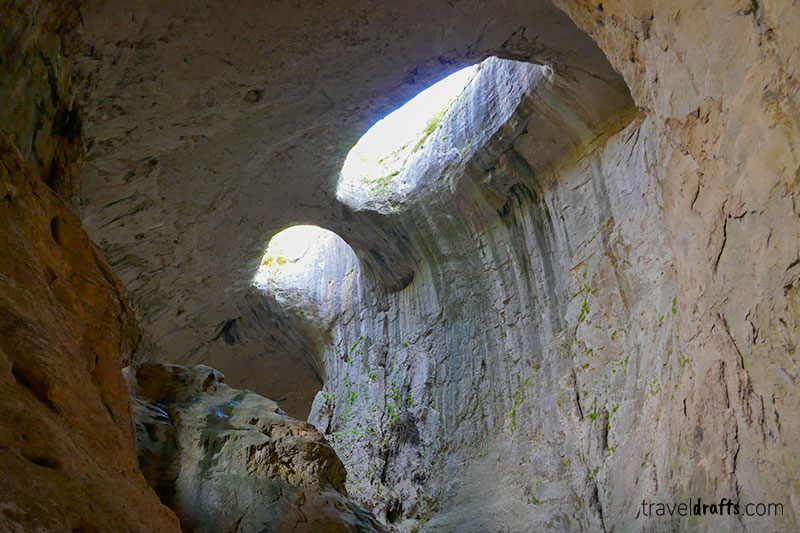
#44 Renting and driving a car in another country can be stressful, but our experience in Bulgaria was very smooth. Drivers in Bulgaria drive reasonably well, very different from Georgia and Armenia for example. They are slightly in a hurry in the bigger towns, but that happens almost everywhere nowadays.
Furthermore, we never had big traffic jams in Bulgaria, not even in Sofia, Plovdiv, or close to the beach. Maybe we are very lucky, but that’s definitely a big plus!

#45 One of the things you need to know before traveling to Bulgaria is that the roads are pretty bad. Not as bad as Armenia, but if that’s the term of comparison, it’s a very bad sign :). But seriously, be careful because you can get into potholes anywhere.
Are you enjoying this guide? Check the 50 things you need to know before going to Armenia!
#46 Nonetheless, while driving in Bulgaria, you should note a few important things:
- Many roads don’t have any markings, which is weirder than anything else.
- Even rare than Road markings are the speed limit signs… you can spend hours driving without seeing one 🙂
- If you travel by your own car, a road vignette is mandatory not at motorways but on all main roads too. It costs €8 for 7 days, and you can purchase it at the border or gas stations. It can’t be purchased online. You’ll see tons of signs advising about this.
- There aren’t highway tolls in Bulgaria, apart from the two bridges − New Europe Bridge and Danube Bridge, both at Danube border crossings to Romania.
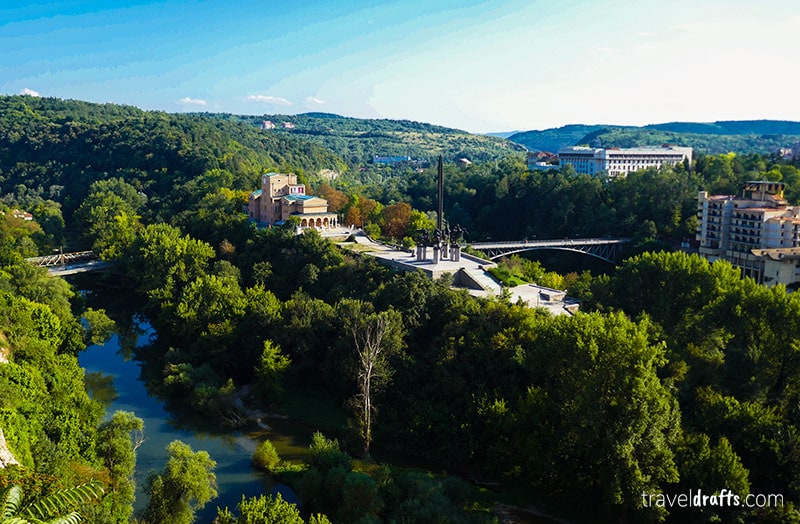
#47 Parking is usually a nightmare when traveling by car, particularly in city centers and highly touristy zones. However, in Bulgaria, it was fairly easy and/or inexpensive.
Most places had free parking, and when it wasn’t free it was cheap. Furthermore, finding a parking spot was always very easy.
Other useful information about traveling in Bulgaria
#48 You won’t have any problems getting WIFI in Bulgaria. Most restaurants, bars, and hotels have it for free. Also, if you have an EU sim card, you can use it for free, so you’ll also have a data sim card.

#49 Which vaccines do I need to go to Bulgaria? There is no mandatory vaccination to enter Bulgaria, but some are recommended. The CDC and WHO recommend vaccination against hepatitis A, hepatitis B, rabies, and influenza.
#50 Our final Bulgaria travel tip is: Buy local! It’s cheap, and you’ll help the locals. One of the best ways to buy locally in Bulgaria is from road vendors in the countryside. You’ll see people selling fruits, veggies, honey, nuts, and so on…
Do you remember what we said about the ingredients? They are crazy good! Believe me, you won’t regret it!
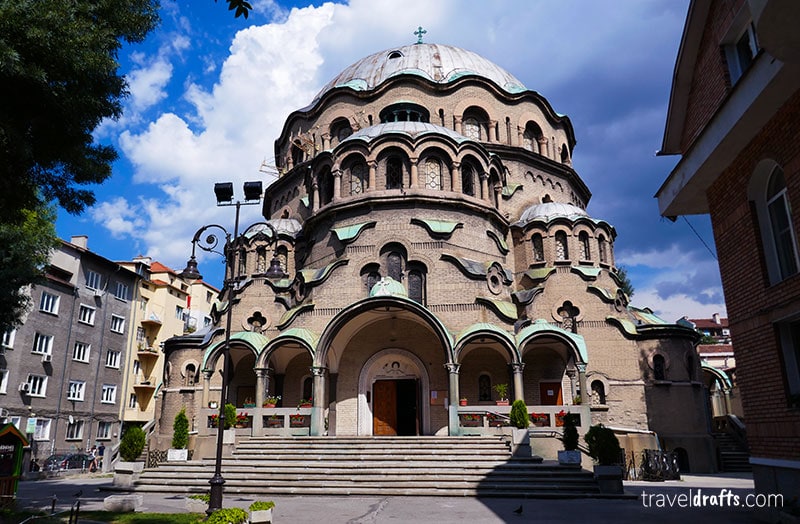
Our Recommended Travel Guide Books For Bulgaria
Our recommended Bulgaria travel Guide is the Bulgaria and Romania guide from Lonely Planet , which is particularly useful if you are visiting both Bulgaria and Romania.
Pin for later

Sharing is caring!
- Meet the Team
- Work with Us
- Czech Republic
- Netherlands
- Switzerland
- Scandinavia
- Philippines
- South Korea
- New Zealand
- South Africa
- Budget Travel
- Work & Travel
- The Broke Backpacker Manifesto
- Travel Resources
- How to Travel on $10/day
Home » Europe » Backpacking Bulgaria – EPIC Budget Travel Guide for 2024!
Backpacking Bulgaria – EPIC Budget Travel Guide for 2024!
Bulgaria – what’s that?
Well, it’s about to be the country on top of your travel wishlist, that’s what it is.
With endless mountainscapes, picturesque roads just begging for roadtrips, cheap AND moorish food, and countless Insta-worthy towns, Bulgaria is absolutely stunning.
It’s an adventure but a safe one: you won’t find the same craziness here as in other Balkan countries. Bulgaria doesn’t need thrills and frills to steal your heart. It does that by simply being awesome.
If you’re reading this, chances are you’ve already decided on a trip to the big B. Maybe you’re hectically reading this article on the aeroplane trying to figure out where you’re headed. Or maybe you’ve heard of Bulgaria once upon a time and now you’ve decided hey, maybe I wanna check it out.
Well, you’re in the right place: this post has all the deets and digs you need to know for backpacking Bulgaria, and even a few secret pots? Maybe, but you’ll have to keep reading to find out.
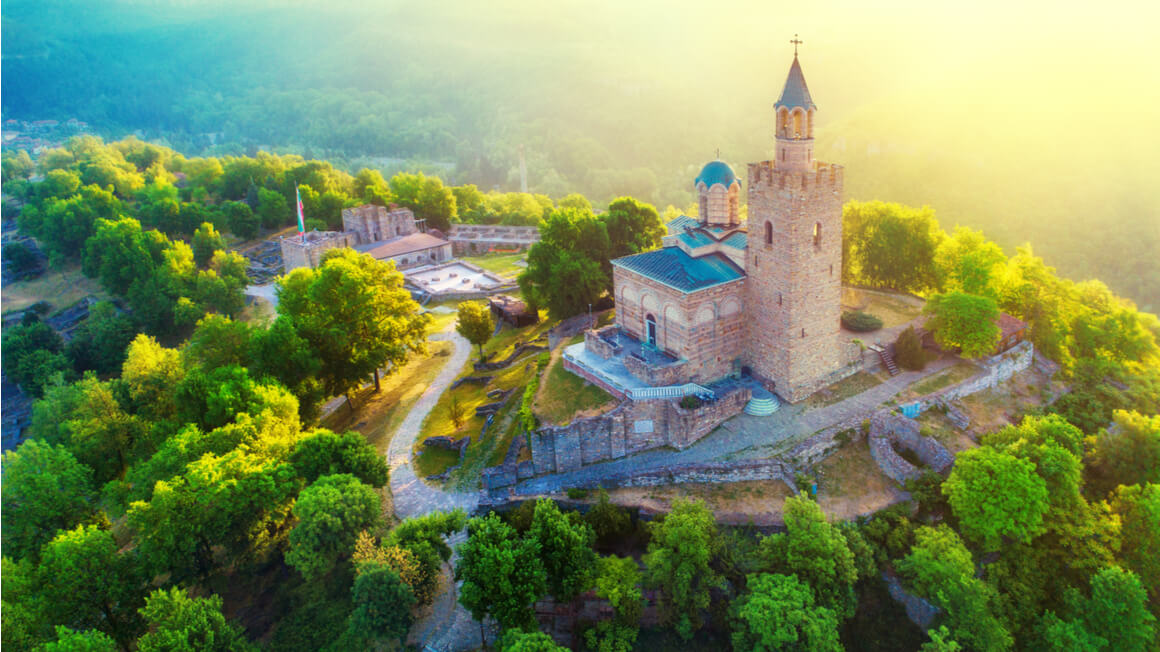
Why Go Backpacking in Bulgaria?
Good question. Why visit Bulgaria ? Because Bulgaria is AWESOME, that’s why.
Bulgaria is a mixture of the best of two worlds. It has the look, safety, and pretty cities of Central Europe. At the same time, its mountains, quirky attractions, and lovely but hard-to-read people are a true Balkan trademark.
It’s an excellent starting point for a Balkan backpacking adventure if you’re not quite ready to hit avant-garde spots like Serbia or Bosnia yet – and it’s the perfect place to head if all the Pragues and Budapests of the general European backpacking trail are starting to feel a little dull.
Bulgaria is a beauty, and you don’t need to be an instagrammer to appreciate it. I’m not even only talking about the awesome mountains (even though I’m always talking about mountains).
Bulgaria also has some incredibly beautiful towns, waterfalls, a pink lake, clear starry skies, and fields upon fields of sunflowers – usually flanked by equally expansive rows of baby-purple lavender.

And another great thing (maybe the best?) is that Bulgaria is SO cheap. Add it immediately to your list of destinations if you’re planning a cheap-ass trip to Europe !
I mean, saving money in itself is nice and all, but it’s all about what you can do when you don’t have to watch your spending too much. You can still gorge yourself on incredible Bulgarian food and order a second (or fifth) glass of wine. You don’t have to pick between two attractions, you can go see both. And you can travel all over the country – the only dent will be in your hours, not your budget.
Best Travel Itineraries for Backpacking Bulgaria
Best places to visit in bulgaria, top 10 things to do in bulgaria, backpacker accommodation in bulgaria, bulgaria backpacking costs, best time to travel to bulgaria, staying safe in bulgaria, how to get into bulgaria, how to get around bulgaria, working in bulgaria, bulgarian culture, some unique experiences in bulgaria, faqs about backpacking in bulgaria, final advice before visiting bulgaria.
Backpacking Bulgaria is chock full of all sorts of wonderful things to discover and experience. If I was you, I’d spend at least 2 weeks there to get to take in all parts of the country in peace. But if you’re mostly interested to just check out the important tourist attractions in Bulgaria, one week is enough time.
Here are some ideas for a backpacking Bulgaria itinerary!
1-Week Travel Bulgaria Itinerary
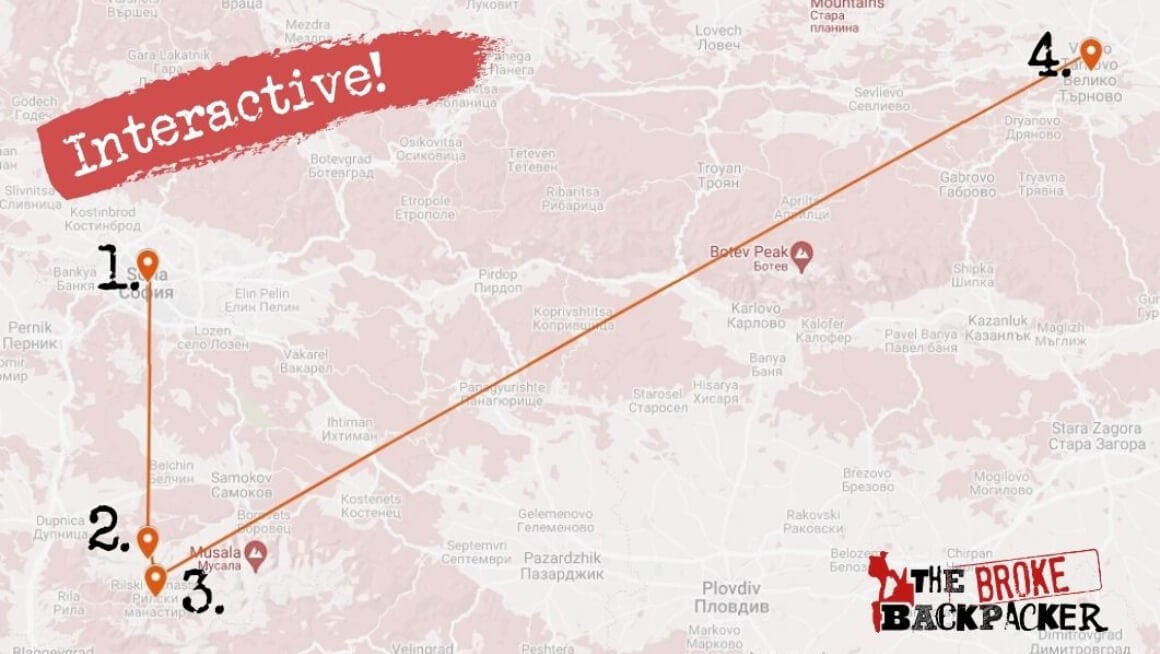
This one-week Bulgaria itinerary is perfect if you want to check out the best places to visit in Bulgaria in one go!
Our travel in Bulgaria starts from its famed capital, Sofia. The city is full of architectural gems and museums, so if you’re feeling hungry for some good old culture, this is the place for you. Sofia is also a good base for some day trips around the area.
From there, our hero’s journey continues to one of the most beautiful places in Bulgaria – the Rila Mountains.
The first stop is Seven Rila Lakes , a group of glacial lakes set among gorgeous mountains and wildflowers. If you want to spend more time hiking around the area, you can stay overnight at the Rilski Ezera hut.
The next pit stop is Rila Monastery. It’s the most important spiritual centre of Bulgaria and actually still active!
You could split the visit between the lakes and monastery over two days. However, even though these are literally two of the most visited tourist attractions in Bulgaria, public transportation connections are not great. Unless you’re renting a car, they’re best visited on an organised day trip from Sofia.
Anyway, you’ll have to return to Sofia to catch a bus or train to our last stop – Veliko Tarnovo. This medieval capital is my favourite place in Bulgaria and well worth a couple of days of exploring!
2-Week Travel Bulgaria Itinerary
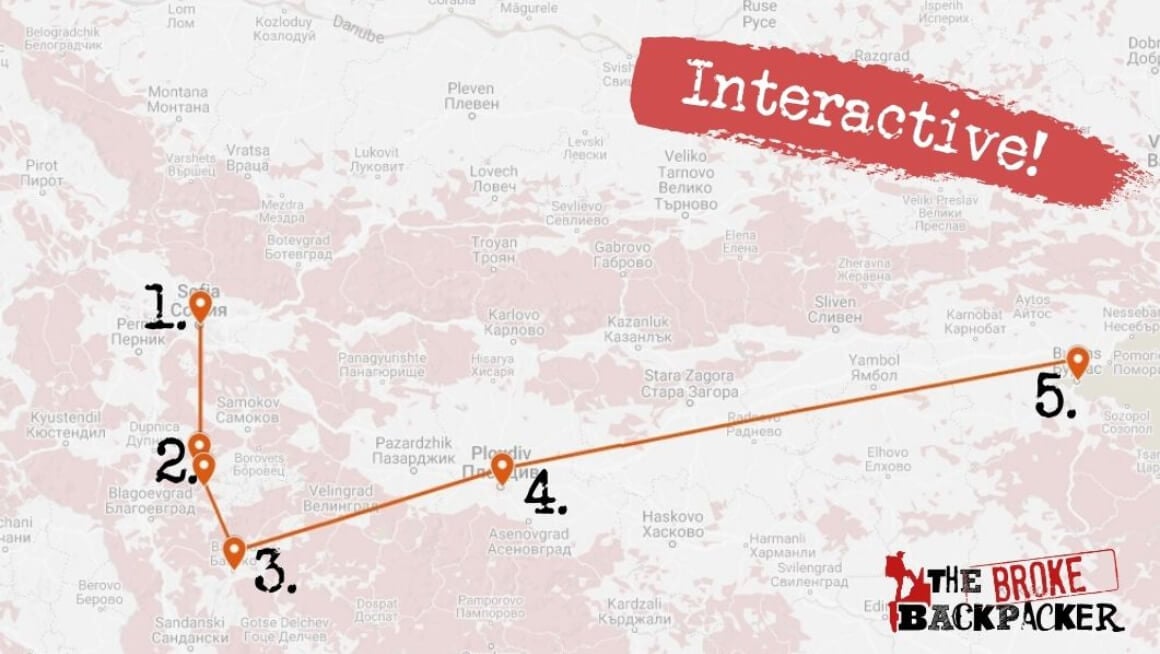
All righty – there’s lots we can do with two weeks.
Let’s start in Sofia again. Do the first few days of Itinerary #1, AKA the grand tour of Sofia and the Rila Lakes + monastery. From there, it’s easy to continue southward – towards Bansko and the Pirin mountains.
Hiking in Bulgaria is great, so spend a couple of days doing that and testing out Europe’s longest waterslide. In the winter, polish off your skis or take a dip in hot springs. There is a lot to see and do in this region, so make sure to stay in Bansko for a couple of days to explore all of the attractions there.
From Bansko, we’ll continue on to Bulgaria’s second city, Plovdiv ; the bus journey from Bansko should take about 4 hours. Alternatively, you can catch the famous old narrow-gauge train. The 6-hour journey through the mountains is quiet and at times pretty.
Get familiar with Plovdiv for a few days – and trust me, you’ll want a few days to spend here. The old town and the Roman ruins are obviously gorgeous, and the food? Absolutely impeccable.
From Plovdiv, we’re headed to the last part of the trip – the Black Sea coast. Get to Burgas where you can spend a few last days lounging on the best beaches in Bulgaria, exploring the nearby town of Nessebar, and floating around in a pink lake.
Burgas has an airport which makes it easy for you to jet off to your next adventures!
1-Month Travel Bulgaria Itinerary
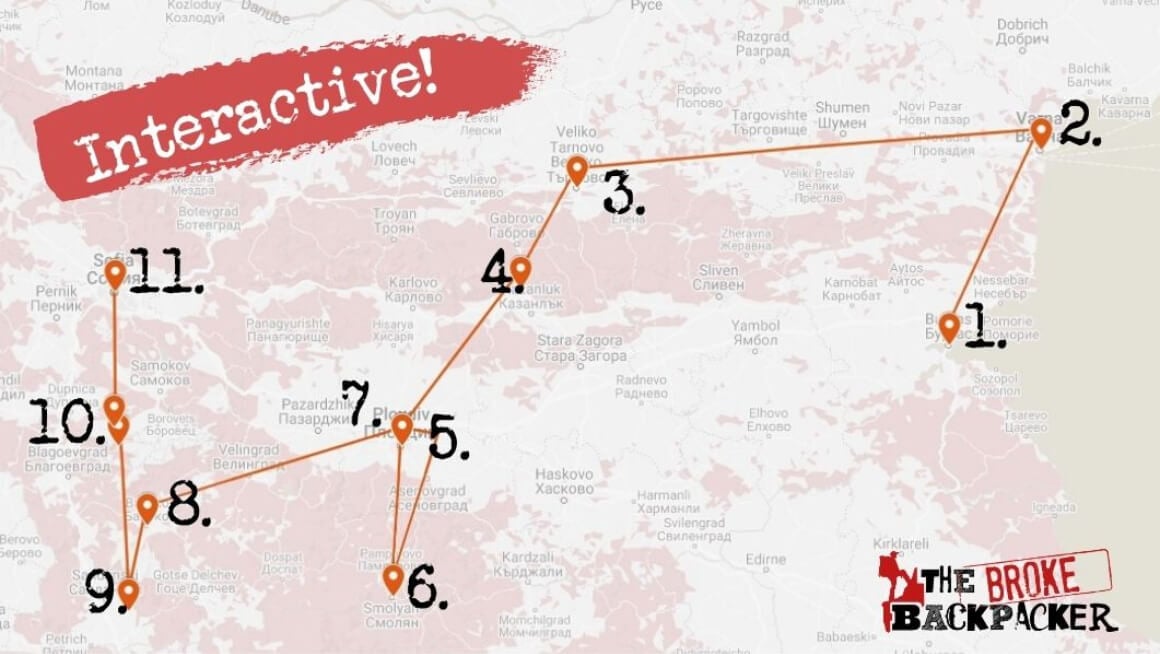
Simply can’t get enough of travel in Bulgaria? Spend an entire month there soaking in all the Balkan goodness.
Start your trip from the coast of the Black Sea. Burgas is a natural starting point with an airport and a nearby overland connection to Turkey.
From Burgas, traipse up the coast to Varna for bona fide Black Sea parties and to explore Sozopol, a tiny historic town next to Varna.
Next, catch a bus to Veliko Tarnovo, a medieval capital and the prettiest town that ever roamed the lands of Bulgaria. With all the little attractions surrounding it, you can easily spend a couple of days there.
From there, getting to the town of Shipka takes a few hours. This is your launchpad to see the Buzludzha Monument, a truly weird and off-the-beaten-path attraction that’s only accessible by car or taxi. Alternatively, you can also stay in Kazanlak that’s the closest town to the monument and also has some accommodation options.
After that, the next stop is again Plovdiv.
From Plovidv, we start exploring the Rhodope Mountains. Take a bus to the town of Smolyan , a starting point for hikes in the area (and in the winter, a big ski destination). Soak in the hot springs in nearby Devin or check out the picturesque town Shiroka Laka.
You’ll need to get back to civilisation from there so return to Plovdiv and take a bus or train to Bansko to the Pirin Mountains.
From Bansko, take a day trip or spend a night in Melnik, the smallest town in Bulgaria that’s famed for its wine. From there, travel through Rila monastery and Seven Rila Lakes to Sofia where this Bulgarian adventure ends.
What to see in Bulgaria, then? The country is a mixture of old, picture-perfect cityscapes, vast mountain ranges, and peaceful seaside. Take your pick between them – or visit all 3 landscapes. Bulgaria’s not that big that this option would be off the books.
Here are the best places to visit in Bulgaria.
Backpacking Sofia
The capital of Bulgaria is a metropolis of 1+ million inhabitants and still doesn’t feel too busy. It’s a very walkable city with lots of patches of green dotting the street grid and attractions and old buildings aplenty to gawk at.
Sofia has a very similar vibe to other big, historical cities in Central and Eastern Europe . Its most famous attraction is the Alexander Nevsky Cathedral , a cathedral erected in honour of the soldiers that fell in the Turkish-Russian war defending Bulgarian independence from the Ottomans.
But Christians are not the only people residing in this city of cross-sectioning cultures. Europe’s second largest synagogue is located here, and you’ll also spy plenty of mosques.
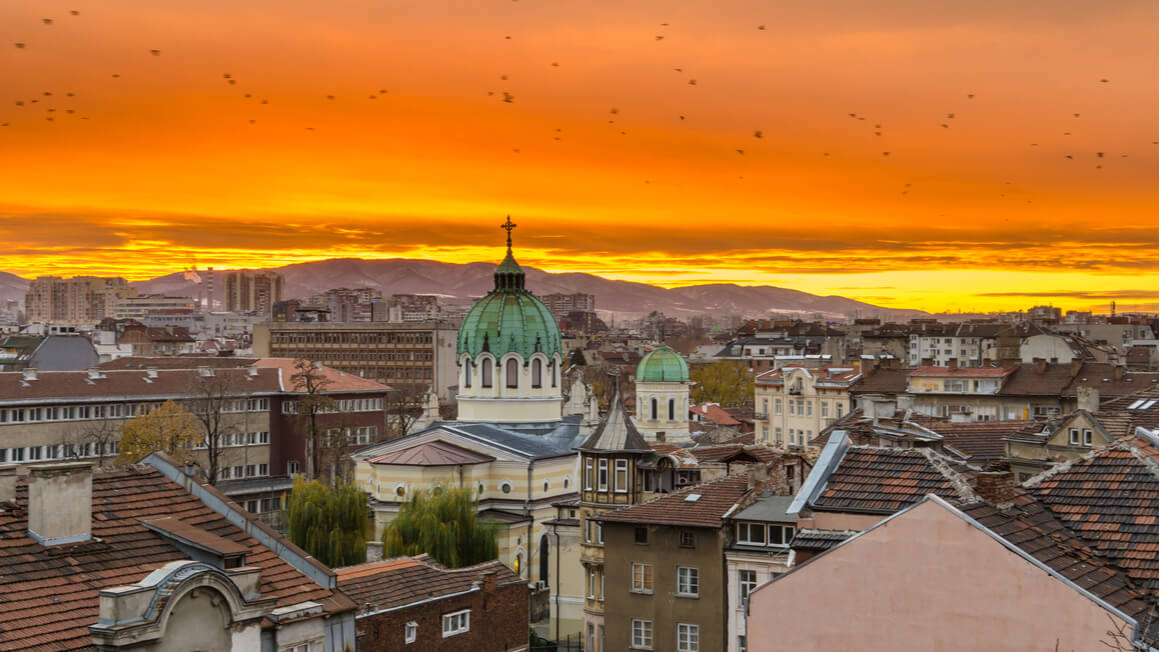
And like most capital cities, it also has a host of cool museums to check out. Sofia History Museum is located in an old bathhouse building so on top of great exhibitions, you’re also literally surrounded by history!
The main shopping street Vitosha Boulevard gets pretty busy so it’s great for people-watching or replacing your tattered backpacker’s wardrobe.
I highly recommend joining the free walking tour to get the best perspective of the Bulgarian capital.
Best day trips from Sofia:
- Vitosha Peak: The closest hike you can do near the capital! Take a bus from the city to explore the churches on the hill and blow yourself away with incredible panoramic views of Sofia.
- Belogradchik Fortress: This well-preserved fortress built into natural rock can only be described with one word: spectacular . It’s a 3-hour journey from Sofia but since there isn’t much else going around the fortress area otherwise, it’s worth the day trip if you have a day loose in your itinerary.
- Seven Rila Lakes and Rila Monastery: Best visited with an organised tour but definitely unskippable if you’re in Bulgaria! Rila monastery is the country’s most famous monastery, and the Seven Rila Lakes is maybe its most breath-taking natural area.
Backpacking Plovdiv
If Sofia is the capital of Bulgaria’s historical culture, then Plovdiv is surely the capital of its contemporary culture.
Despite the fact that the entire city is built on ancient Roman ruins – more on that later – the current mood in Plovdiv is that it’s cool and hip. (Are kids these days still saying “hip”?)
Plovdiv was named the Cultural Capital of Europe in 2019, and not for nothing. The city is filled with gorgeous street art and graffiti, galleries, and statues . My favourite is the statue of Milyo, who was literally just some guy that people knew and liked, so he got a statue in his honour. Apparently, if you whisper your wish in his ear, it comes true. (Results still pending.)
The free walking tour of Plovdiv is excellent, and they also do one that dives into the street art around the city.
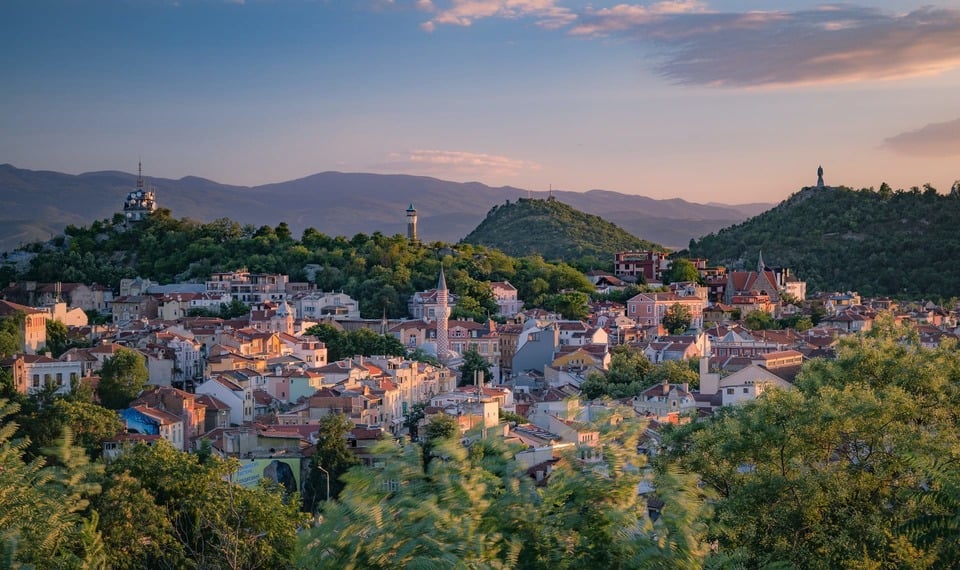
Well, onto the Roman times, as promised. Plovdiv’s long history in the intersection of cultures has left it with brutalist Soviet architecture, Viennese-style colourful old houses – and Roman ruins scattered all over the city. You can literally walk into an H&M and gaze down at some ancient stones under the floor.
The most famous Roman monument is the amphitheatre in the Old Town.
This is also where you’ll find the BEST food and drink in Bulgaria! From craft beer bars to artisanal gelato, there’s so much goodness here. (Also, the best coffee shops in the country!)
Plovdiv is, in my books, almost the best city in Bulgaria (but the race with Veliko Tarnovo – coming up – was very, very close). So definitely don’t skip it!
Popular day trips from Plovdiv:
- Bachkovo Monastery and Assen’s fortress: Less than an hour south from Plovdiv, the second-biggest monstery in Bulgaria and the 13th century castle are definitely worth checking out.
- Koprivshtitsa: Often hailed as the best small historical village in Bulgaria, Koprivshtitsa is basically just one big town-shaped museum (and SUPER pretty!)
- Shipka and Buzludzha Monument : A little further off, but Plovdiv is your best base for a peek at Shipka’s gorgeous Memorial Church and the nearby UFO-shaped Soviet monument.
Backpacking Burgas
Burgas is a natural gateway to your Black Sea holiday – or a start of an epic backpacking trip in Bulgaria. With great bus connections and an international airport, arriving there is easy. Leaving? If you fall in love with it, maybe not so easy.
Burgas is steeped in history. Check out Aquae Calidae (the ruins of a historical bathhouse), the ethnographical museum, and the seaside Sea Garden . The Sea Garden is also home to the annual Sand Festival which brings together sand artists from all over, creating sand sculptures from waterproof sand (apparently that’s a thing) that can be up to 8 m tall.
And don’t miss the boat trip to St Anastasia Island. The tiny island has a 15th century church and convent and a small hilltop garden, but more interesting than that are probably the pirate legends. I’m not gonna say I believe in ghosts… but a hidden treasure guarded by a ghost of a pirate is a pretty badass story.
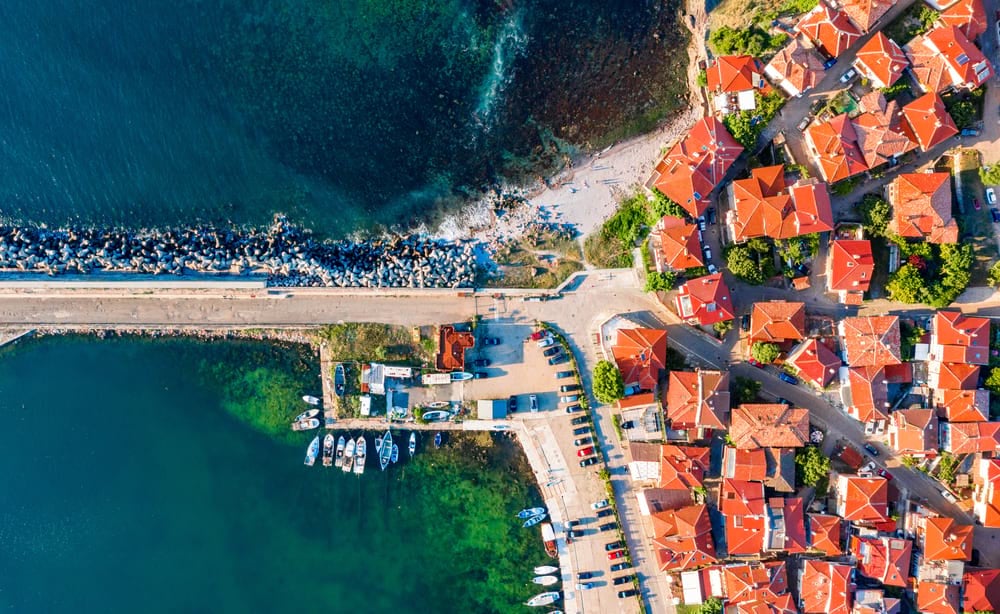
You can also visit Lake Atanasovsko , a lake that’s so close to the city that you can see its silhouette as you bathe in the healing mud and pink waters. The colour is completely natural – and actually pink!
And considering it’s by the sea coast, you’ll also some of the best beaches in Bulgaria around here.
Right by Burgas, you’ll find two historical port towns that the Bulgarians I met absolutely loved: Nessebar and Sozopol.
Nessebar has an incredibly gorgeous Old Town, an architectural museum, and ruins of old fortresses. If you’re not scared of screaming kids running around you, you can also spend the day at the waterpark there.
A little ways up from Nessebar, check out the stellar sunset point at the end of Cape Emine.
Sozopol, in turn, is the oldest town in Bulgaria. In short, it’s just an incredibly pretty old seaside village.
Backpacking Varna
Varna is known as the Bulgarian seaside capital. It’s the biggest city on the Black Sea so this is where you should head if you’re looking for some late-night parties!
Varna is very much a summer city so a visit there is probably not too exciting if you’re in Bulgaria for a ski holiday. For a summer stint, though? If you’re wondering where to go in Bulgaria for a beach holiday, wonder no more. This is where you’ll find some of the best beaches in Bulgaria so pack up your beach bag .
It’s not all booze and pleasures, though. There’s also some cool-ass history! Check out the Archaeological Museum, Roman Baths and most importantly, the Varna Necropolis. The gold treasure that was found there is actually the oldest processed gold in the world.
And of course, the beaches . The beaches!! The whole reason you’re probably by the Black Sea! There are tons to choose from, although you might want to travel a bit up or down the coats to find one that you love. And stay the fuck away from Sunny Beach – rumours tell it’s the absolute worst, overrated tourist trap that no backpacker would ever want to fall into.
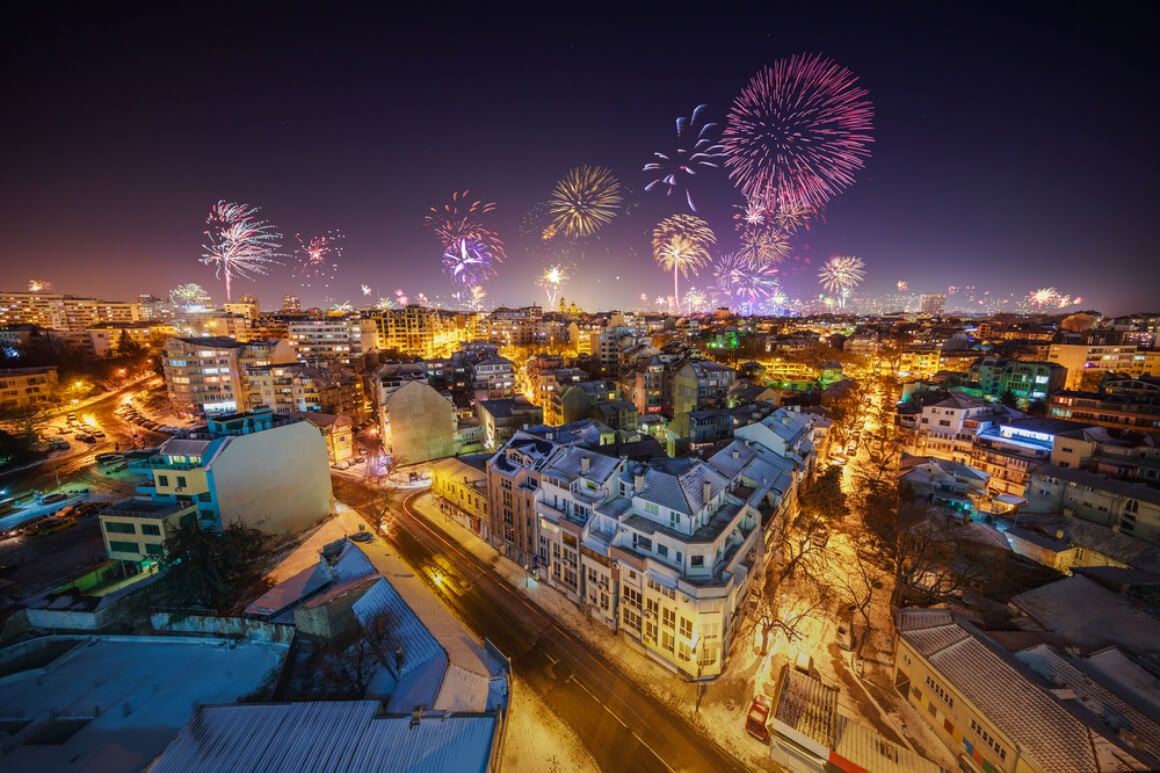
In general, the Varna town is just really pretty. I feel like no one warned me it would be like that. There is really no shortage of utterly beautiful cities to visit in Bulgaria, I guess. It’s a very pleasant city to just walk around without a rush, eat ice cream, and sample seafood.
And lastly, take a day trip to the Stone Desert. Just 20 km away from Varna, it’s one of the most unique natural attractions in Bulgaria.
Just one last thing: if you find more lists of things to do in Varna, you’ll probably run into the Varna Dolphinarium. Apparently it’s a famous one. I’m sure a very small percentage of readers of The Broke Backpacker would actually be the type to visit a dolphin show, but in case you’re thinking about it, I highly encourage you to read up on ethical animal tourism and skip the visit.
Backpacking Veliko Tarnovo
Veliko Tarnovo is, simply put, the best city in Bulgaria. It’s an old, medieval capital, best known for its colourful houses built in layers on the hill and the romantic, cobbled streets. If you’ve ever dreamed of European old towns, I can guarantee that Veliko Tarnovo is what you’ve pictured.
The biggest attraction is the Tsarevets Fortress. It’s mostly in ruins now but grants some great views over the town, especially if you climb the tower of the Ascension Cathedral. Oh, about the cathedral – it’s not an actual cathedral anymore. When it was restored a few decades ago, its frescoes were repainted, and the result could be described as a homage to Bulgarian Soviet art or complete sacrilege. These frescoes were the reason the cathedral couldn’t be re-consecrated (AKA made holy) but they sure are something to see.
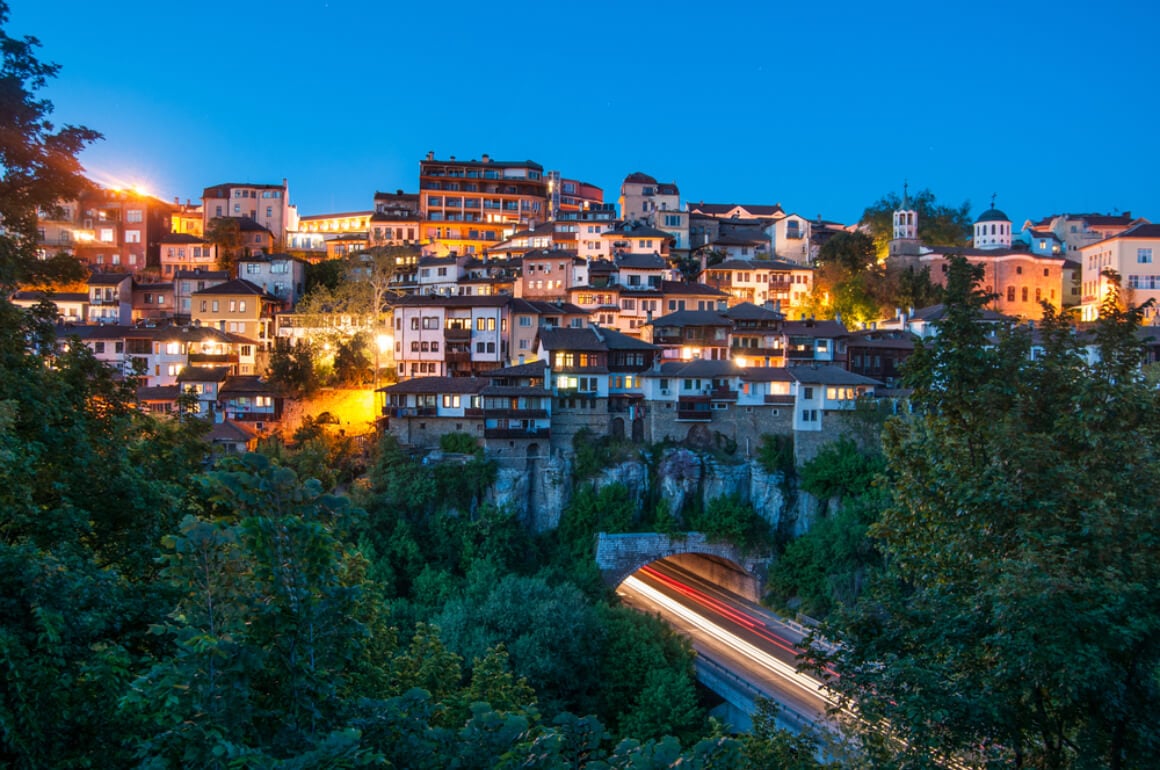
Try to time your visit to catch the light show at the fort. It’s free to see but you have to snatch up a ticket beforehand!
The Old Town is made for slow meandering on an afternoon and stopping to browse roadside arts and crafts. The best place to see the famous view of the cityscape on the hill is the Monument to Assen Dynasty with the State Art Gallery next to it.
Veliko Tarnovo is also an excellent pitstop if you’re getting a lil’ tired of endless cities to visit in Bulgaria; maybe you’re the one to crave a touch of Mother Nature. You can spend an afternoon walking in the Sveta Gora park (rumour has it, the views are great!)
For a longer walk, you can track the 4 km path to the Transfiguration Monastery which, honestly, has the most beautiful frescoes I saw in Bulgaria. The walk is easy but make sure you’re following a map app like Maps.me since the waymarkers are really poor!
Backpacking Bansko and the Pirin Mountains
I’m not even going to pretend like I’m not biased – I fully am. Bansko is AWESOME.
This tiny mountain town on the foothills of the Pirin Mountains is one of your best bases for exploring the area and all the goodies it has to offer. As a town, it doesn’t have that many attractions: pretty much just a museum church in the middle of the town.
But you come to Bansko for the atmosphere. The old town is all cobbled streets, traditional restaurants and friendly cats. Even the tourist hotels don’t clash with the cityscape since their style will remind you of old-school Alpine postcards.
As tiny as it is, during the peak summer season there’s always something going on: marathons, jazz and hard rock festivals, even Latin parties. The town might be devoid of backpacker hostels (boo) but it’s always teeming with digital nomads, meaning that the general aura of the town is young, fun, and lively.
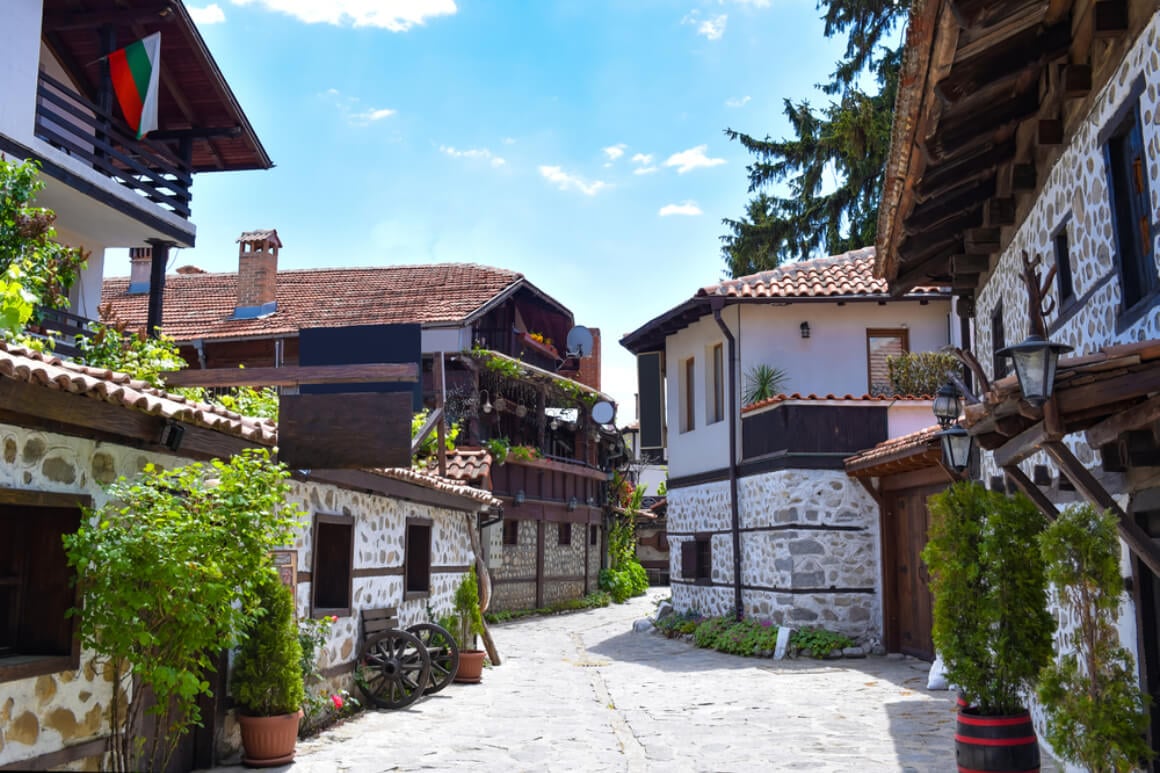
But the real draw of Bansko is its nature: score for trekkers, campers, and mountain bikers. During the summer, you can hike up to Vihren – the highest peak of the Pirin mountain range – or take any of the other trails around the peaceful mountains.
There are many trails even for beginner hikers . Even if you’re not a hiker, the two gondolas take you up to some pretty spectacular view points.
The longest waterslide in Europe is also located here. Goggles highly recommended!
In the winter, Bansko truly blooms to life as one of the top winter sport destinations. That combined with the atmosphere in the colder months makes the best skiing and snowboarding in Bulgaria.
Plus, after you’re done for the day, you’re just a 10 minute drive from the town of Banya where you can dip yourself in natural hot springs.
I’d highly recommend a day trip to the nearby town of Melnik , too. Officially the smallest town in Bulgaria is super beautiful, and one of the best places to sip on some prime Bulgarian wine.
Backpacking Pamporovo, Smolyan, and the Rhodope Mountains
Listen, lemme just bundle this whole area up in one bunch, since it’s difficult to point out just one main point to explore around here.
The Rhodope Mountains are one of the biggest mountain ranges in Bulgaria – and for other Ancient Greek mythology nerds like me, you might know it as the birthplace of the poet Orpheus. I found that the points of interest around the area are pretty well scattered. The best way to explore the Rhodopes is to rent a car to get from point to point.
The main towns you should check out are Pamporovo and Smolyan.
Both are mainly winter towns popular for skiing and snowboarding in Bulgaria. Smolyan also has some nice houses and museums, and both are good places to stay if you want to visit the picturesque village of Shiroka Lake.
Unless you’re interested in skiing in Bulgaria in winter, these towns are mostly a point for hiking around the Rhodopes.
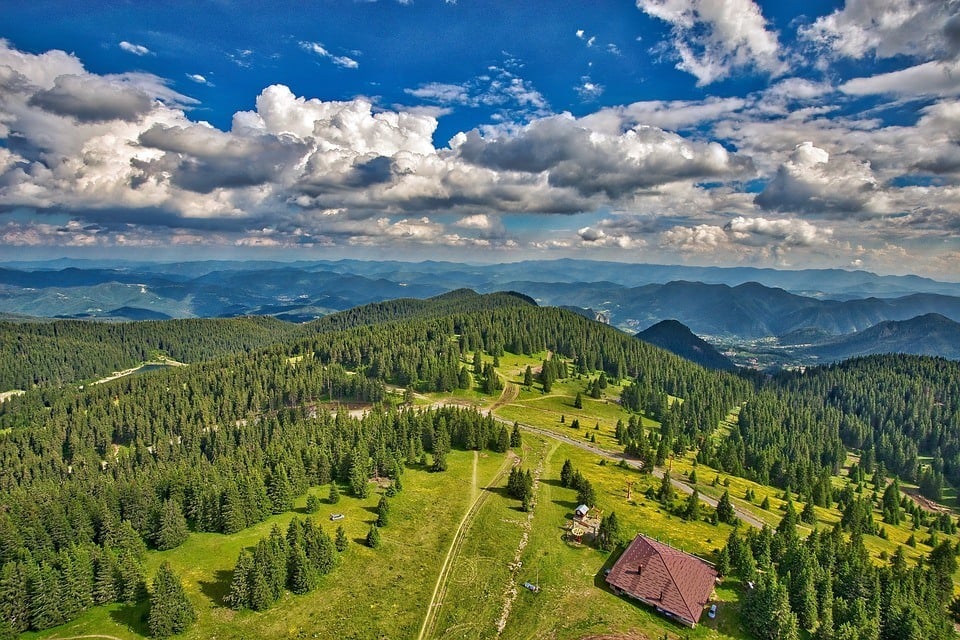
That brings me to my second point: hiking in the Rhodopes. I was trying to find a good multi-day trek through the region but since I didn’t have my tent, I was kinda struggling with that. Instead, for hikers, I recommend multiple day trips around the area.
You could check out these unique sights:
- Wonderful Bridges: unique rock bridges
- Orlovo oko, or Eagle’s Eye: lookout point over mountain valleys
- Devil’s path (near Borino): a short but demanding (and fun!) hike through the Khatak Dere River gorge.
- Devil’s Bridge: Unique round stone bridge
Getting Off the Beaten Path in Bulgaria
Bulgaria’s not quite Italy or Germany yet – but it’s starting to get there. International tourists have been coming to the Black Sea coast for years. Even if the main crowds still like to mostly move between there, Sofia, and Plovdiv, Bulgaria as a whole can get pretty touristy in places.
If you want to get off the beaten path in Bulgaria, head to the countryside. Chances are you’ll still run into some Bulgarian tourists – they know how beautiful their country is – and they dutifully explore it. But you’ll avoid most of the masses of foreign travellers. The tiny little towns that have preserved the look of old Bulgaria are the most beautiful places in Bulgaria.
One town that’s hailed as THE place to get a glimpse into the past is Koprivshtitsa where it feels like you’re literally inhaling history. Also check out Lovech which is en route to the Krushuna Waterfalls.

Ruse , a town dubbed “Little Vienna” sitting by the Romanian border, is an excellent point to stop overnight if you’re headed north anyway.
Then there’s Gabrovo which is going straight on my list of things to visit next time since it combines my two favourite passions: gorgeous old houses and weird museums. Check out The House of Humor and Satire, and the Interactive Museum of Industry.

We’ve tested countless backpacks over the years, but there’s one that has always been the best and remains the best buy for adventurers: the broke backpacker-approved Osprey Aether and Ariel series.
Want more deetz on why these packs are so damn perfect? Then read our comprehensive review for the inside scoop!
Still wondering what to see in Bulgaria? You won’t be short of things to do while Backpacking Bulgaria. If anything, there is too much to see on a short trip!
Here are some of the best things to do in Bulgaria:

1. See the Seven Rila Lakes
Even if you’re not much of a hiker, the Seven Rila Lakes is potentially the best nature site in Bulgaria. It’s easy to visit with minimal hiking. The seven glacial lakes are gorgeous, and the gondola to the top of the hill makes sure your feet won’t get too tired!
2. Check out the Alexander Nevsky Cathedral
Emblematic to Bulgaria for many reasons: Alexander Nevsky Cathedral is one of the most famous tourist spots in the country. It was built in honour of the soldiers that fell fighting against the Ottomans in the Turkish-Russo war for Bulgaria’s independence.
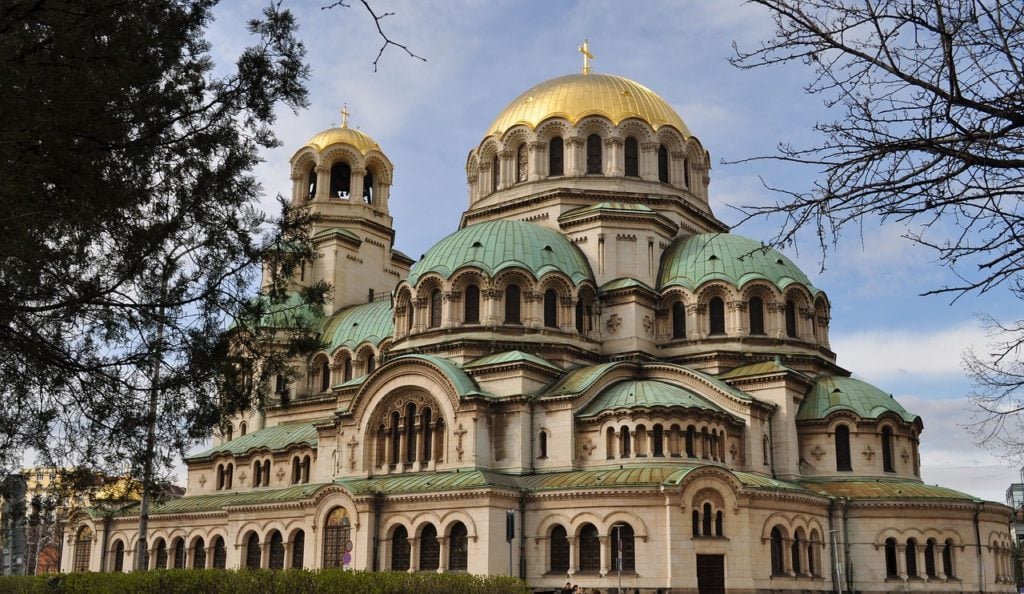
3. Chase Down Street Art in Plovdiv
Plovid is hip and fun, and honestly unmissable if you like quirky cities. It’s most famous for having been built on top of Roman ruins but for me the biggest pull is the art.
Strolling around Plovdiv is one of the most fun things to do in Bulgaria! Take the daily free walking tour to get a local perspective on the art pieces and an explanation of Bulgaria’s Soviet history.
4. Soak in Sun and History on the Black Sea
The Bulgarian coastline is awesome if you feel like a break from your busy itinerary. Filled with white-sand beaches and historical towns, the whole area is super picturesque!
Some of the best beaches in Bulgaria are found around Burgas and Varna. Just avoid Sunny Beach unless you feel like getting trampled by hordes of tourists.
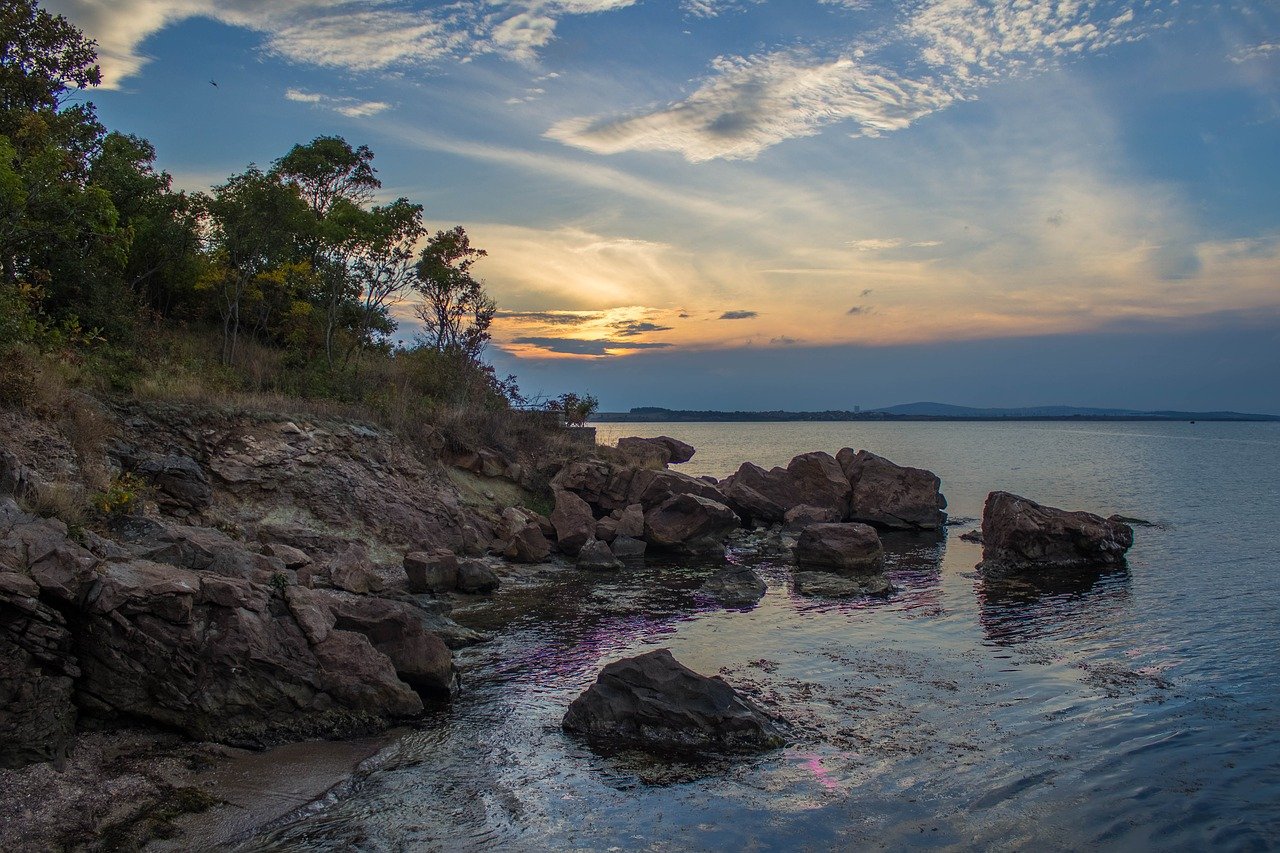
5. Fly Away on a Soviet UFO
Okay, the Buzludzha Monument is not a real UFO, but you can’t tell me it doesn’t look like one! This now-decrepit monument was once a triumph to Soviet Bulgaria and now one of the weirdest tourist attractions in the country.
6. Get Religious at Rila Monastery
In a country overrun with monasteries, Rila Monastery is the most famous – and the most beautiful? Guess you’ll just have to decide on that yourself.
The entrance to the monastery is free. Then, there are some exhibitions that cost a couple of bucks to see.
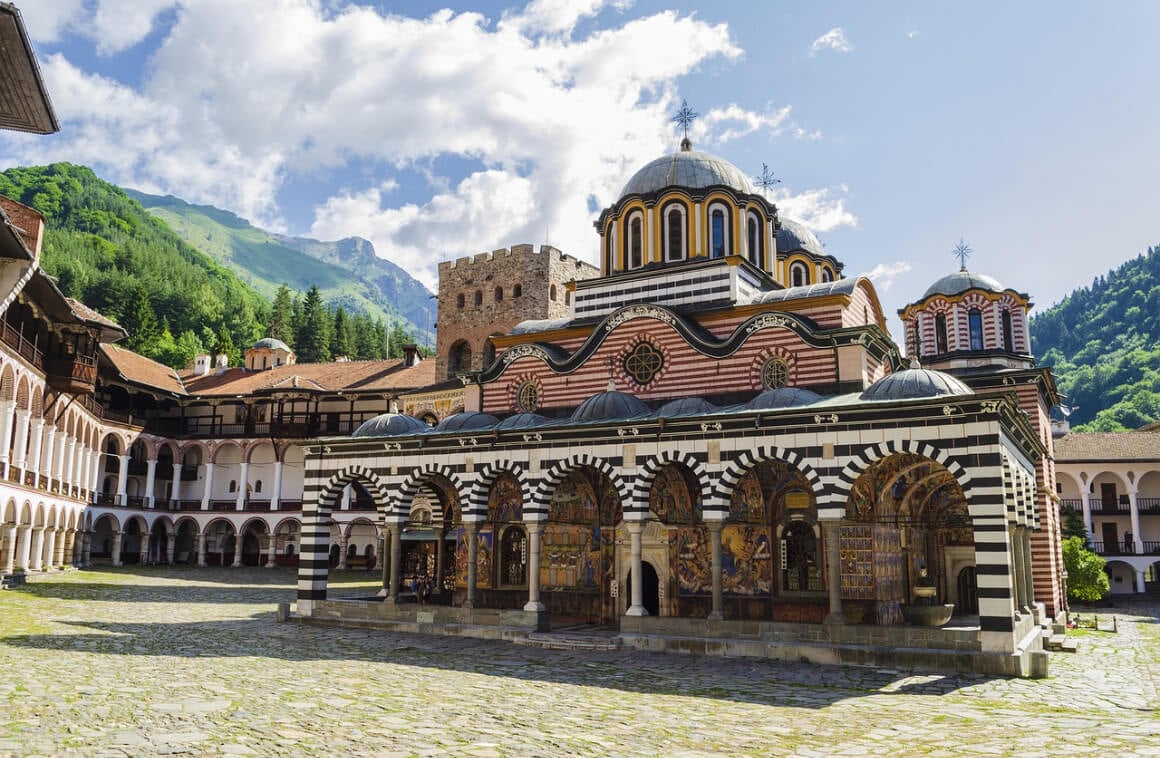
7. Chill in Natural Hot Springs
Especially if you’re touring Bulgaria in the winter, you’ll love these hot springs. Bulgaria is #2 in the number of hot springs in Europe, right after Iceland. You’ll find these springs and adjacent mud baths everywhere in the country.
8. Eat Everything in Sight
Bulgarian food is DELICIOUS. Filling, warming, cheap, and hearty – you’ll never have to go hungry. Wash that all down with some delish Bulgarian wine. But more on food later…
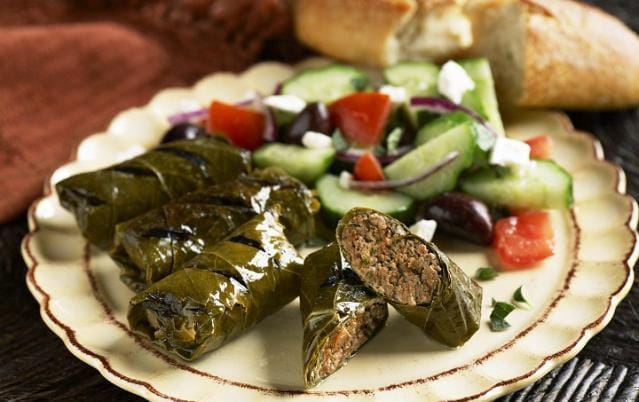
9. Get the Best Views in Veliko Tarnovo
Veliko Tarnovo is easily the prettiest town in Bulgaria. Spend some time hanging around the Assen Dynasty monument listening to buskers and taking in the best perspective of Veliko Tarnovo’s houses built on the hill.
10. Climb the Highest Peak in the Balkans
Hiking in Bulgaria gets to epic proportions after you’ve conquered this peak, and this is legit one of the best hikes in Bulgaria. At 2,925 metres, Musala is the highest peak in Bulgaria AND the highest peak in the Balkans!
The best part is that it’s easy to hike even without specific mountaineering experience. If you’re moderately fit, you can do it as a day trip.
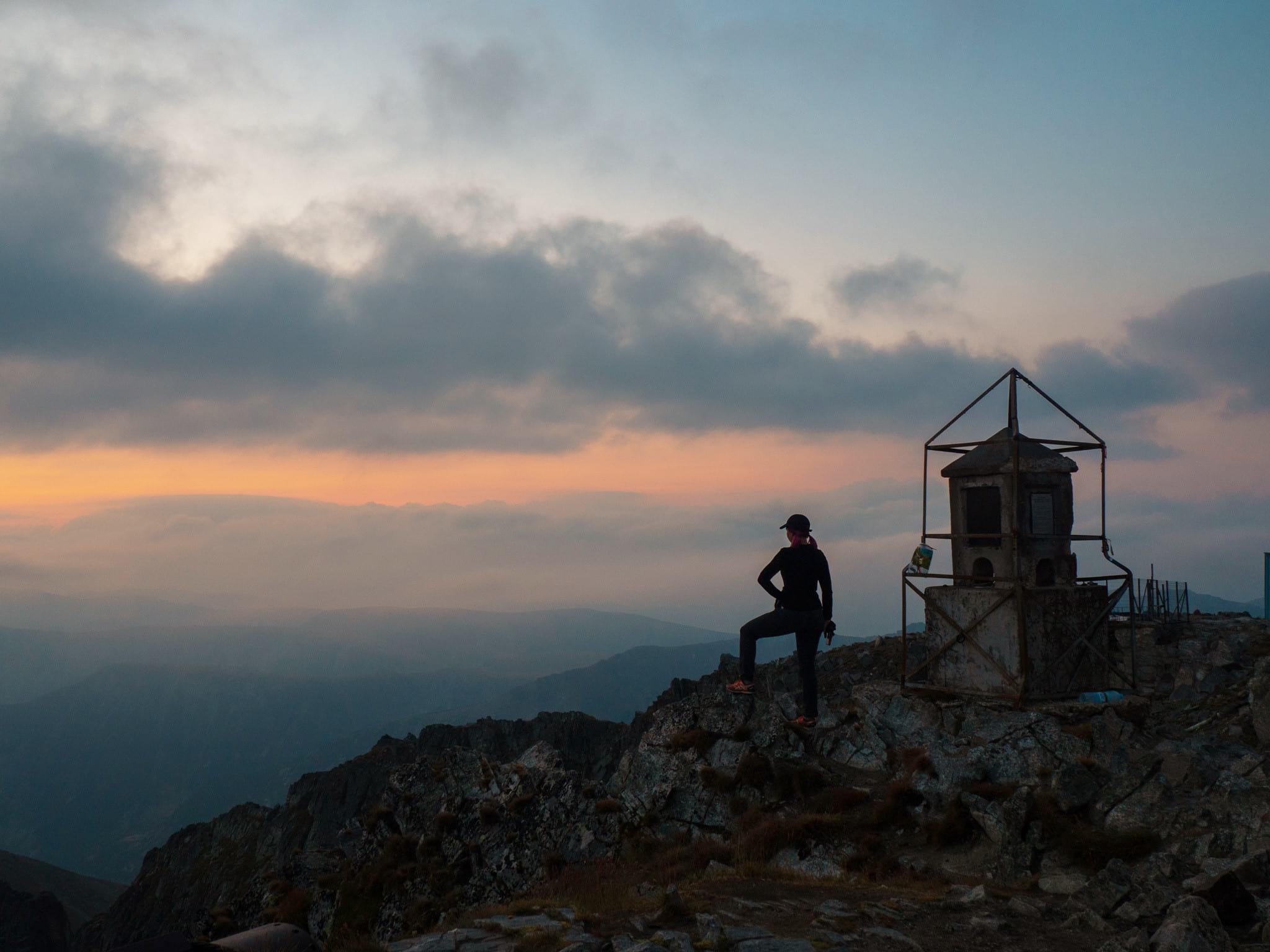
Wanna know how to pack like a pro? Well for a start you need the right gear….
These are packing cubes for the globetrotters and compression sacks for the real adventurers – these babies are a traveller’s best kept secret. They organise yo’ packing and minimise volume too so you can pack MORE.
Or, y’know… you can stick to just chucking it all in your backpack…
Being a backpacker in Bulgaria is kinda fifty-fifty. On the one hand, there are heaps of great hostels that, at the best of times, are super social and awesome places to meet other travellers.
On the other hand, these backpacker hostels are very unequally divided between the biggest backpacker destinations.
You’ll find some especially great hostels in Sofia and Plovdiv, where the biggest crowds tend to be. There are also some nice ones on the Black Sea and in Veliko Tarnovo.
Hostels in Bulgaria, in general, are cheap, well-kept, and cool places to stay. Wherever you find them, you’ll be sure to experience the sweet, sweet hostel life!
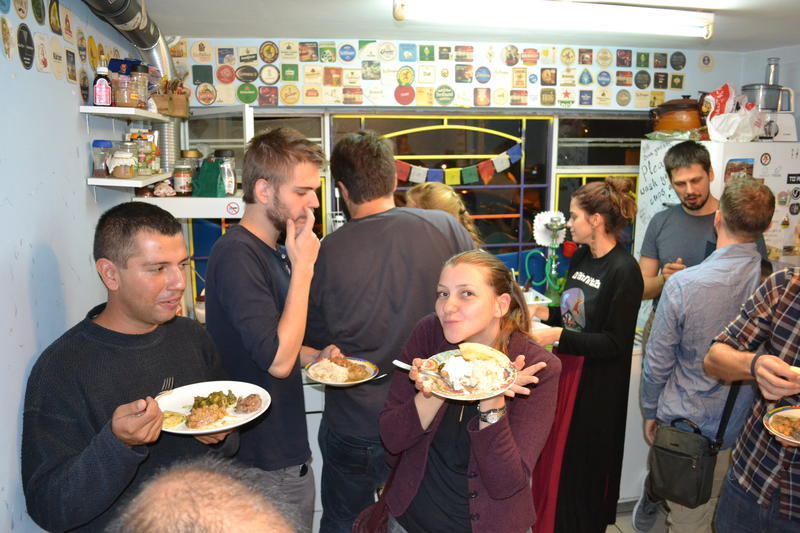
Everywhere else, broke backpackers (or introverts) can still get by fine since there are tons of ultra-cheap guesthouses and small hotels. Obviously, staying in a private room doesn’t help much with socialising, but maybe you can just find a quiet place to sleep and find your friends elsewhere – perhaps through a travel app?
When you’re on the hunt for cheap private accommodation, the best time to backpack Bulgaria is in the summer. In the winter, prices in small towns and in the mountains can easily double. Airbnbs in Bansko are quite reasonable though!
The Best Places to Stay in Bulgaria
Bulgaria travel costs are incredibly cheap – which shouldn’t be surprising, considering it’s located deep in Eastern Europe. However, it is also in the European Union. Considering how steep it is usually to travel around its union brothers, backpacking around Bulgaria is an absolute steal.
The cost of travel in Bulgaria is very low; it’s one of the cheapest countries in Europe . I might even go as far as calling it the cheapest country in the European Union if it wasn’t for Romania – maybe you should combine the two into an ultimate off-beat budget experience?
Food: Avoid touristy restaurants and opt for crummy-looking local ones instead. They usually have absolutely delish grandma-style cooking for half of the price. For Bulgaria, the rule of “if you can’t read the menu, you’re in the right place” is very much true.
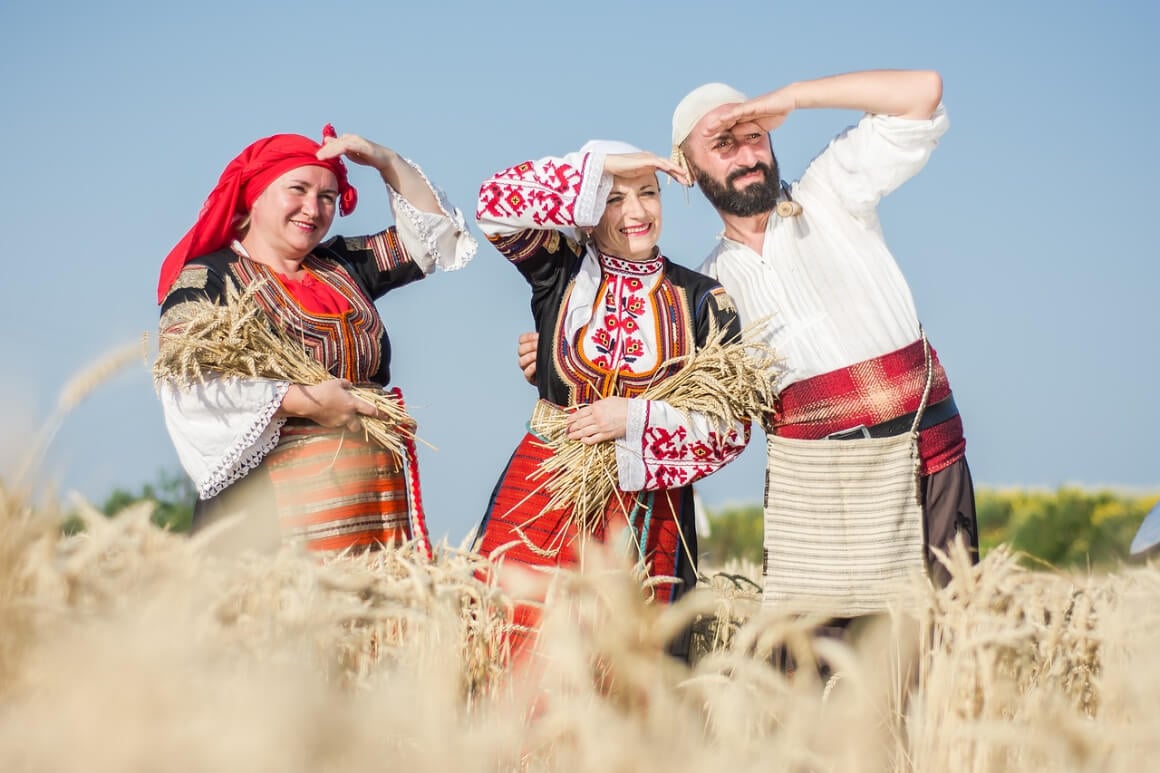
Transportation: Train travel is cheap AF: a ticket is just a few levas . A bus ticket is slightly more but still doesn’t break the bank. A bus for a few hours is typically $6-10, and to travel all the way across the country from Sofia to Varna is less than 20 bucks. For the brokest backpackers, hitchhiking is still a good free travel option.
Accommodation: You can easily find a bed in a hostel in Sofia for 10 bucks a night – or rent a whole apartment for a month for $200. In the winter, prices shoot up in popular ski destinations, but summer and shoulder seasons are really affordable times to be traipsing around Bulgaria.
Activities: Best case scenario? If your fun is wandering around cities looking at pretty things and hiking through mountain ranges, the cost of travel in Bulgaria is gonna be real cheap. However, since public transportation can be, uh, a little all over the palace, many travellers on a time crunch opt for organised day trips. These are still not ultra-expensive – a day trip from Sofia to Rila Monastery runs at about $20 pop – but obviously, they add to your budget.
A Daily Budget in Bulgaria
Money in bulgaria.
Bulgaria hasn’t got around to adopting the euros yet, so you’ll still be operating in levas .
Luckily, you don’t have to strain your math brain too hard since the exchange rate makes counting prices pretty simple. The rate is about 1 BGN = 0.57 USD / 0.51 EUR / 0.43 GBP. This means that if you divide the leva price by two, you’ll get a more-or-less accurate price estimation.
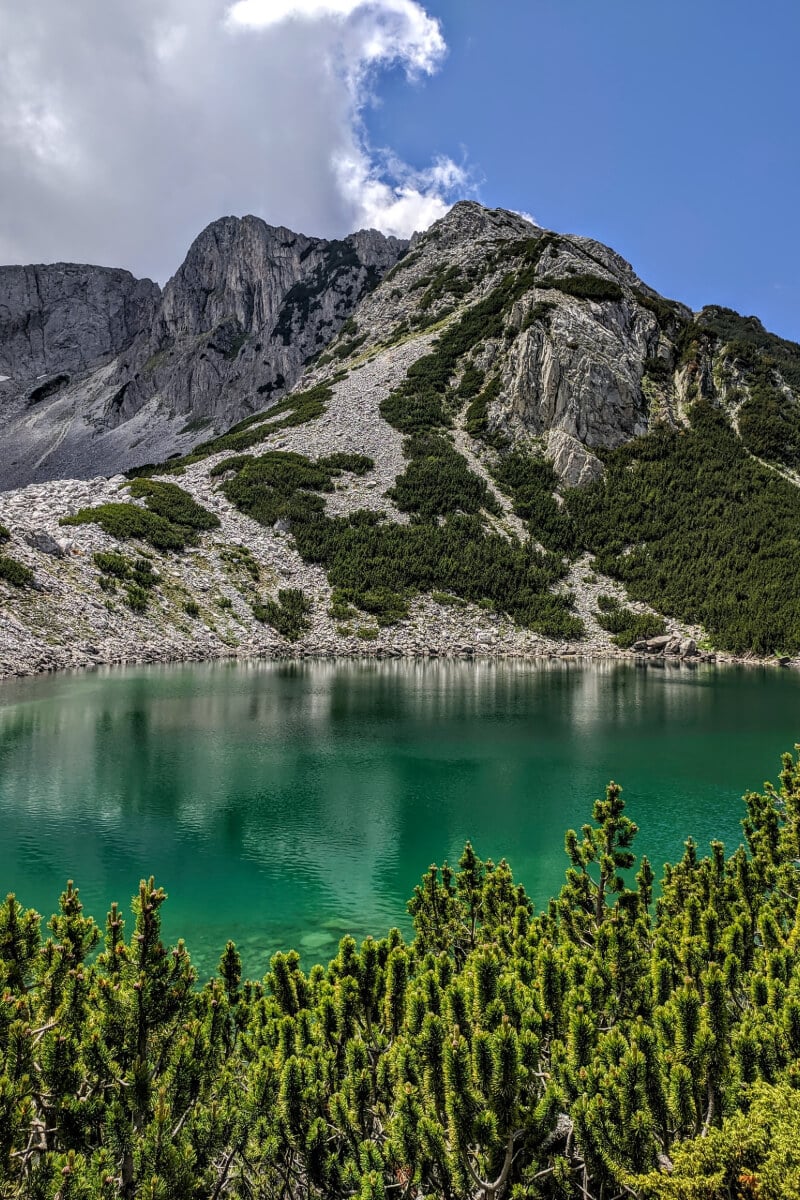
Tons of places in Bulgaria take credit cards but I would still carry cash around. Mountain huts, roadside stalls and family restaurants still mostly operate on dolla dolla bills.
Paying cash also makes it easier to tip. To be honest, in my two months in Bulgaria I never got completely clear on if you’re supposed to tip or not. Generally, I guess the rule is 10%, but this didn’t seem to be expected for small purchases like coffees or in small, local restaurants.
A good rule of thumb is to always leave a few levas or round up. The cost of travel in Bulgaria is low anyway so you’ll have some coins to spare. But only if the service has been good. (Which is not a given in Bulgaria – in case of terrible service, feel free to not tip..)
You can pretty easily find ATMs in most cities and towns. Bank fees and ATM charges CAN stack up, though, so get a grip of your travel banking before your trip. Speaking of…
For all matters of finance and accounting on the road, The Broke Backpacker (and me personally!) strongly recommend Wise – The Artist Formerly Known as Transferwise! Our favourite online platform for holding funds, transferring money, and even paying for goods, Wise is a 100% FREE platform with considerably lower fees than Paypal or traditional banks. But the real question is… is it better than Western Union?
Yes, it most certainly is.
Travel Tips – Bulgaria on a Budget
Bulgaria is a dreamland for cheap-ass backpackers. However, there are tricks to make your pennies go EVEN further! Try out these budget tips, tested and tried by years of budget backpacking :
- Go camping. Taking a good backpacking tent with you saves a night’s accommodation. If you’re wilderness-minded and travelling Bulgaria in the summer, wild camping is not only allowed but also encouraged! All the cool kids are doing it.
- Cook your own food. Bulgarian food is cheap, but travel there is even cheaper if you cook for yourself. I’d highly recommend getting a good portable stove . It saves your ass in hostels that don’t have a kitchen. And if you’re gonna get your hike on, you’ll need it in the mountains!
- Hitchhike! Finding a ride in Bulgaria is fairly easy, and thumb-travel is a very cheap (and adventurous) way to see the lands unknown.
- Surf a couch. Couchsurfing is a fantastic way to get to know locals and local life while saving money. Plus, getting to know some locals means finding out about all the secret spots that are bound to be way cheaper than the places tourists go to…
- Travel with a water bottle. The sexiest travellers help combat the world-wide plasticapocalypse by avoiding single-use plastic. Get a reusable bottle and fill up anywhere – tap water in Bulgaria is drinkable.
Why You Should Travel to Bulgaria with a Water Bottle
Plastic washes up on even the most pristine beaches… so do your part and keep the Big Blue beautiful
You aren’t going to save the world overnight, but you might as well be part of the solution and not the problem. When you travel to some of the world’s most remote places, you come to realise the full extent of the plastic problem. And I hope you become more inspired to continue being a responsible traveller .
Plus, now you won’t be buying overpriced bottles of water from the supermarkets either! Travel with a filtered water bottle instead and never waste a cent nor a turtle’s life again.

Drink water from ANYWHERE. The Grayl Geopress is the worlds leading filtered water bottle protecting you from all manner of waterborne nasties.
Single-use plastic bottles are a MASSIVE threat to marine life. Be a part of the solution and travel with a filter water bottle. Save money and the environment!
We’ve tested the Geopress rigorously from the icy heights of Pakistan to the tropical jungles of Bali, and can confirm: it’s the best water bottle you’ll ever buy!
The best time to visit Bulgaria kinda depends on what you want to do once you get there. Bulgaria gets full-on 4 seasons – so take your pick!
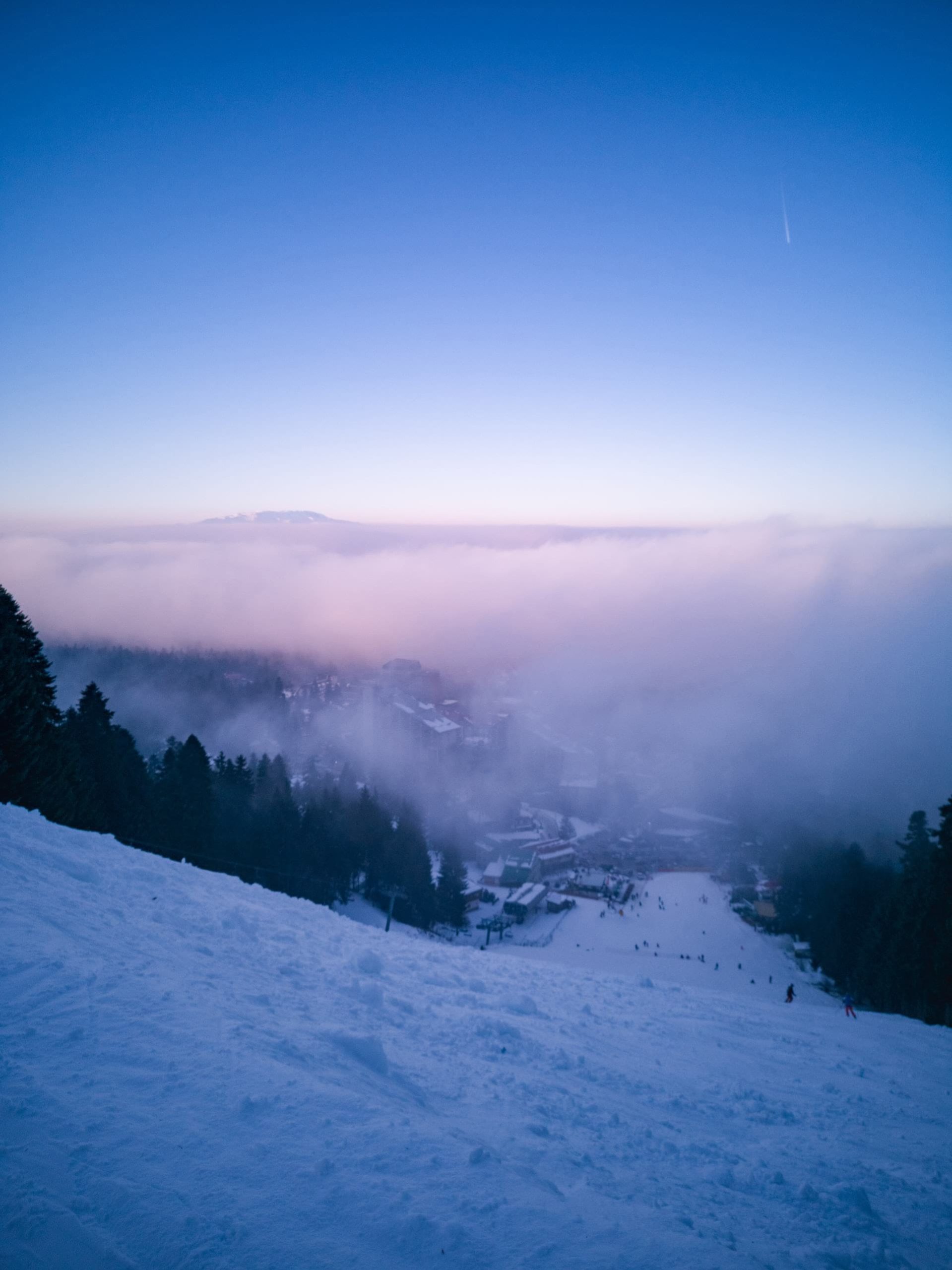
The weather in Bulgaria in the summer is lovely, not (usually) too hot: around 25 degrees Celsius. It also doesn’t rain too much, which is nice if you’re headed out to the mountains.
The cities can be stifling hot during the hottest month, August. So you might want to hide away in the tiny mountain towns that are way cooler (in both meanings of the word).
Another advantage of summer is that it’s festival season . Wherever you are, there’s usually some kind of a festival going on. There’s stuff dedicated to music, arts, sports – Sofia even hosts a board game festival.
Summer is also peak tourist season which every experienced backpacker knows can be… bleh. If you want the warm weather but are trying to avoid masses, time your trip to the shoulder season in May-June or September-October.
For hikers, the best time to visit Bulgaria is in the summer or early autumn. It can take a while for snow to melt so all trails might not be accessible in the spring! Summer also means lots of other people with sufficient free time in their hands to ruin your wild-and-free-and-alone trail experience…
If you’re planning to stay overnight in a mountain hut, give them a ring beforehand if you can and see if you could reserve a bed. In bigger huts just showing up is not usually a problem but especially in the weekends, huts may be at capacity.
And then there’s winter – for me that’s a swear word. (I’ve gone through enough growing up in Finland!) But for lotsa folks, it’s the reason they come to Bulgaria.
Winter is peak season for skiing and snowboarding in Bulgaria, so if you’re into snow sports, winter is an awesome time to come. Just know that prices in ski towns go up by 30-50% during ski season!
What to Pack for Bulgaria
There are a few things that are always good to have on your backpacking packing list .
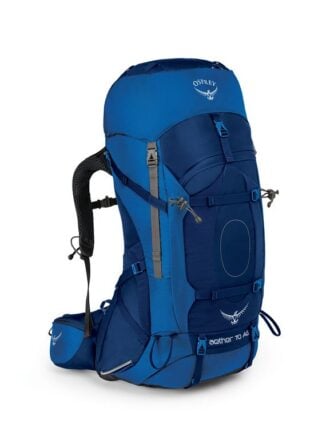
Osprey Aether 70L Backpack
Ya can’t go backpacking anywhere without a blasted backpack! Words cannot describe what a friend the Osprey Aether has been to The Broke Backpacker on the road. It’s had a long and illustrious career; Ospreys don’t go down easily.
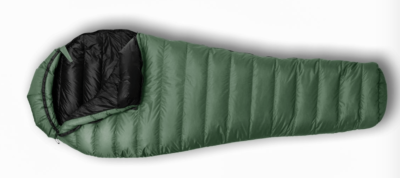
Feathered Friends Swift 20 YF
My philosophy is that with an EPIC sleeping bag, you can sleep anywhere. A tent is a nice bonus, but a real sleek sleeping bag means you can roll out anywhere in a and stay warm in a pinch. And the Feathered Friends Swift bag is about as premium as it gets.
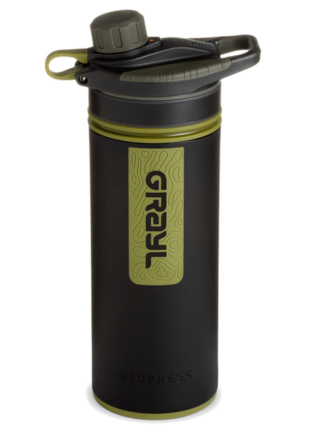
Grayl Geopress Filtered Bottle
Always travel with a water bottle! They save you money and reduce your plastic footprint on our planet. The Grayl Geopress acts as a purifier AND temperature regulator – so you can enjoy a cold red bull, or a hot coffee, no matter where you are.
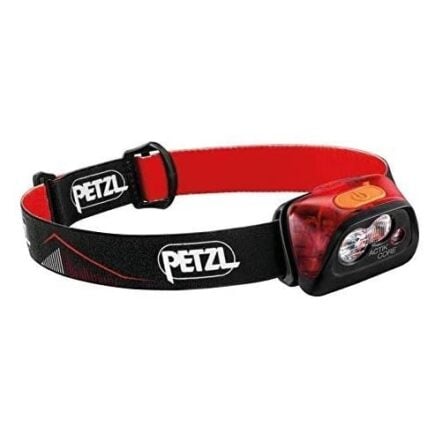
Petzl Actik Core Headlamp
Every traveller should have a head torch! A decent head torch could save your life. When you’re camping, hiking, or even if the power just went out, a top-quality headlamp is a MUST. The Petzl Actik Core is an awesome piece of kit because it’s USB chargeable—batteries begone!
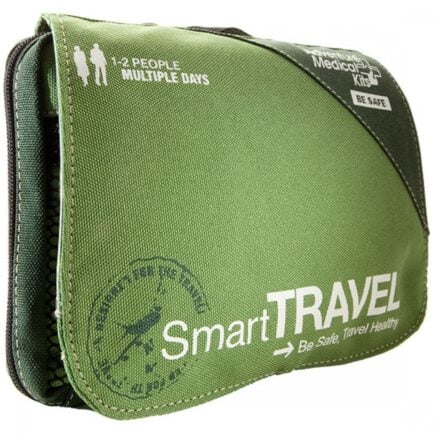
First Aid Kit
Never go off the beaten track (or even on it) without your first aid kit! Cuts, bruises, scrapes, third-degree sunburn: a first aid kit will be able to handle most of these minor situations.
Honestly? I can’t think of much that would put you in danger there. Bulgaria’s a really safe country with few security risks.
Corruption is still partly a problem but not one that tourists would have to encounter too often, luckily!
Just as everywhere else, keep your eyes open in bigger cities and take care of your valuables. You can wear a money belt to make sure no one can snatch your cash or passport.
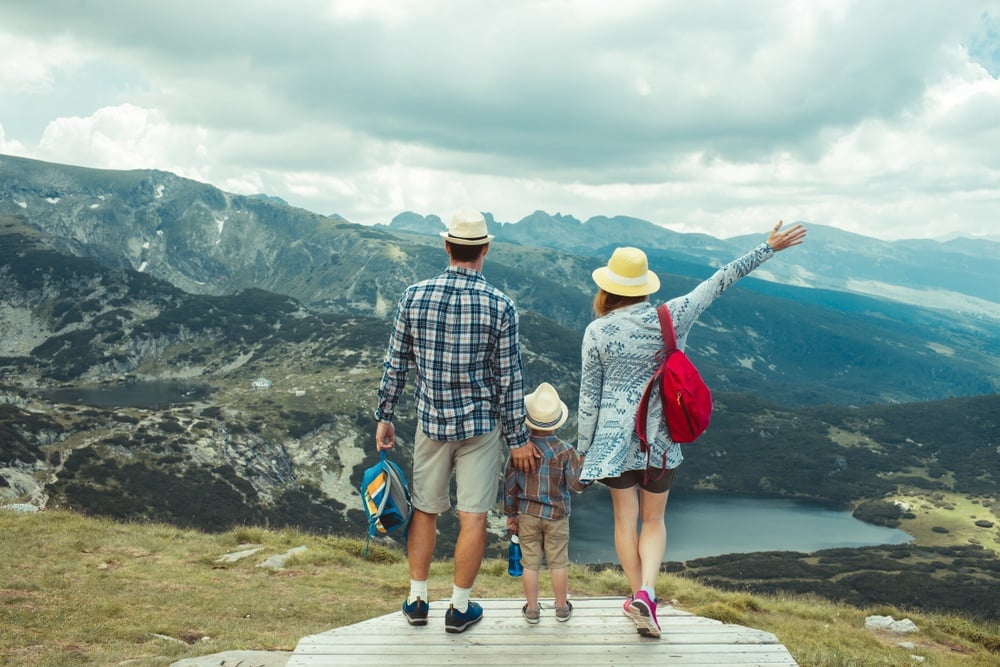
The dodgiest part of Bulgaria is probably the Black Sea coast – that’s where most tourists go, so the scammers follow. Avoid falling victim to a common travel scam and watch out for pickpockets and scammy taxis, especially in that area.
And of course, for such a mountainous nation you have to also take mountain safety into account. Most of the trails that I traipsed were pretty popular, so I didn’t worry much about getting lost or being beyond help – but take all the necessary precautions.
Check the weather forecast although luckily the weather in Bulgaria is usually not super dramatic. Carry enough water and food and wear sturdy hiking shoes . In the winter, make sure you’re dressed warmly enough.
Sex, Drugs, and Rock ‘n’ Roll in Bulgaria
I personally didn’t date during my time in Bulgaria – sometimes a girl’s gotta have a break from all the sex and love on the road , you know?
In general, though, it seems that the cultural differences are not that big that they would really get in the way of having a good time. Bulgarians – all of them – are gorgeous people so I recommend you get your Tinder out and start swiping!
Bulgarian women love to spoil their partners but they expect the same in return – and getting on with the family is a must. I may not be the best authority on this, from not being Bulgarian at all, but that’s what this girl says about dating Bulgarian girls .
Bulgarian men can seem very forthcoming if you’re from Northern Europe-style culture; and pretty normal if you’re from a Southern Europe-style culture.

Bulgaria’s not for those who like to dabble with drugs on the road. They’re extremely strict on drugs, and even weed is classified in the highest risk category.
Da Bulgarian lyfe isn’t short of vices and temptations, though. I mean, let’s look at the drinking culture: wine flows freely and aplenty, and it’s goddamn delicious. Thought I should mention that again in case you’ve skipped any of the previous sections where I’ve praised it.
And to true Eastern European style, Bulgaria is also very familiar with their hard stuff. The booze of choice is called rakia . You might be familiar with it if you’ve already got a few Balkan countries under your belt.
Rakia is a fruit brandy and while the store-bought version is usually a “measly” 40%, the best kind of rakia is homebrew – and with that it’s anyone’s guess just how strong it is.
Travel Insurance for Bulgaria
No matter where you are or what you do, you’re always at risk to slip in the shower or throw out your back out partying too hard in the clubs in Sofia.
A savvy backpacker should always consider getting a comprehensive travel insurance policy before leaving home. This covers you from little boo-boos to 127 hours-style predicaments.
ALWAYS sort out your backpacker insurance before your trip. There’s plenty to choose from in that department, but a good place to start is Safety Wing .
They offer month-to-month payments, no lock-in contracts, and require absolutely no itineraries: that’s the exact kind of insurance long-term travellers and digital nomads need.

SafetyWing is cheap, easy, and admin-free: just sign up lickety-split so you can get back to it!
Click the button below to learn more about SafetyWing’s setup or read our insider review for the full tasty scoop.
Bulgaria is very well-connected! Lucky you!
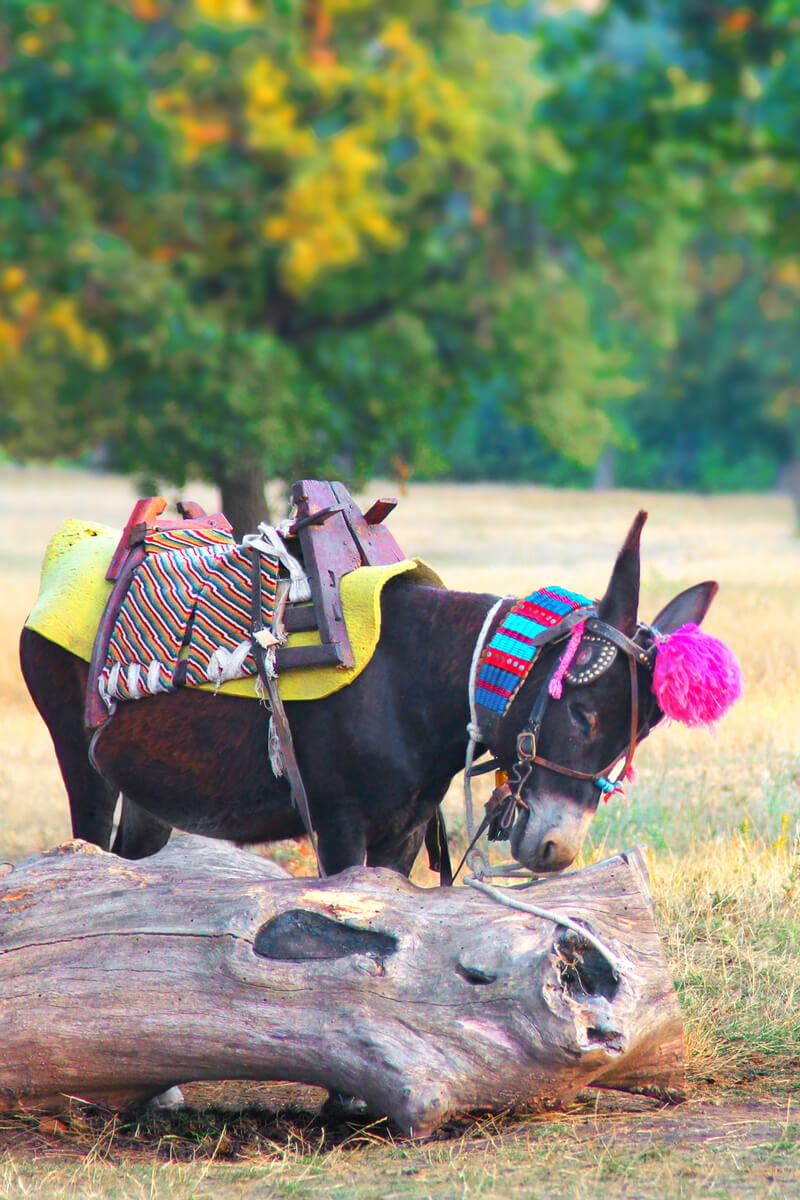
The easiest point of entry is probably Sofia . As the biggest transportation hub, it has the biggest airport, and also the best connections to wherever you’re headed next.
Burgas on the Black Sea also has an international airport. It’s a good option if you’re starting your backpacking trip from the seaside, or if you’re planning to spend your whole time there.
You can also get to Bulgaria overland pretty easily. There are bus connections from Istanbul (Turkey), Thessaloniki (Greece), Skopje (North Macedonia), Bucharest (Romania) and Nis (Serbia).
The Istanbul-Sofia express operates daily, and there’s also a train from Belgrade to Sofia. These seem to be the only direct train connections into Bulgaria.
Entry Requirements for Bulgaria
In general, hopping into Bulgaria is extremely easy: you can stay visa-free for 90 days in a 180-day period.
Bulgaria is not in the Schengen area, which should help ya’ll with foreign passport issues.
If you want to stay longer than the 90 days , you’ll have to apply for a residence permit or a long-stay visa. From what I’ve heard, for EU nationals the process is super simple and can usually be done in a day. For non-EU peeps it’s a little more complicated but not impossible by any means.
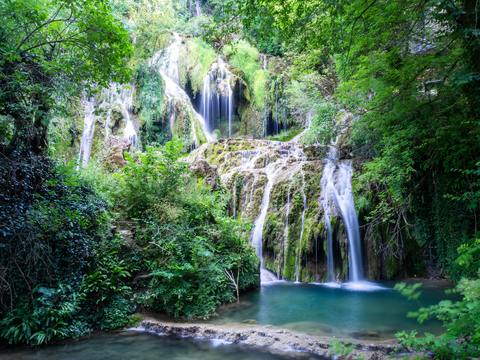
Get 15% OFF when you book through our link — and support the site you love so dearly 😉
Booking.com is quickly becoming our go-to for accommodation. From cheap hostels to stylish homestays and nice hotels, they’ve got it all!
Bulgaria is not a tiny country- so you gotta put aside a few hours every time you want to change the scenery. However, public transportation connections are still good, and travelling around Bulgaria is easy and painless!
The distances are not too long. So even on a shorter backpacking trip, you can hit a few different spots.
I mostly used buses for getting around Bulgaria, and it works fine. Buses are reasonably cheap and the bus network is really extensive, reaching even smaller towns.
HOWEVER – trying to figure out bus schedules is an adventure of its own.
You can easily find tickets for the major routes online, say, Sofia-Plovdiv or Plovdiv-Veliko Tarnovo. Online sites don’t always show all the tickets though, which makes the selection look a lot smaller than it is.
Sometimes online schedules can also show wrong information. Major cities also have multiple bus stations – Sofia alone has four. So… good luck.
Your best bet is to go straight to the bus station and ask the person working the counter what’s going on. They don’t necessarily speak much English but will scribble the time of the next bus on a piece of paper. At bus stations, destination names are also usually written in the Bulgarian alphabet, so google beforehand what you should be looking for.
Taking buses across Bulgaria is not hard, it might just take slightly more planning than you’d expect. Don’t despair – the next bus is always coming.
The train network in Bulgaria is also fairly good, although trains can sometimes be slower and way fewer than buses. It’s an incredibly cheap way to travel, though – just a few levas per ticket – and sitting in an old train, slowly ambling through the quiet Bulgarian countryside, is definitely a nice experience.
There is one especially famous railway, the last narrow-gauge train in Bulgaria between the towns of Septemvri and Dobrinishte, with 4 departures every day. It might not be quite as spectacular as the best train journeys in the world but it’s still fairly scenic.
The narrow-gauge train is not a must-do experience, but it’s definitely unique, and a good way to travel from Plovdiv to the Pirin mountains.
If you can swing it, travelling by car is by far the easiest way to get around Bulgaria. Unlike other Balkan countries, you also don’t have to worry about overly aggressive traffic, knee-deep potholes and runaway chickens. Bulgarian roads are a civilised place where most people drive pretty well and where following directions on road signs is easy if you know how to read.
(Don’t worry – destination names are spelled out also in Latin alphabet, not only in Bulgarian scribbles.)
Car rental is affordable, even more so if you can split it with someone.
Getting private transportation or splitting taxis with someone can be helpful sometimes – for example, if you need to get to the airport from another town and don’t feel like pushing your luck with public busses. Despite Bulgaria being cheap, though, taxis can get expensive.
A private taxi for a 3-hour drive can cost about $80. Be aware of scams, too – I know a guy who hopped in an airport taxi and got charged 200 bucks for the ride!
For the brokest of broke backpackers or just daredevil adventurers, hitchhiking is always an option. Bulgaria probably used to be a great country for hitchhikers.
It’s still not bad, but the same awesome highways that make travel around the country so pleasant and easy, also kinda make a hitchhiker’s life harder. Getting picked up can take a while; you’ll end up spending quite a bit of time on the side of the highway.
Still, hitchhiking is a very viable way of travelling around Bulgaria. Based on my own experience of hitching rides ‘round Europe, I’d say the difficulty level for catching rides is medium: around the same as in Central Europe but not as easy as in the rest of the Balkans.
Onwards Travel from Bulgaria
Bulgaria’s benefit is that it’s located in a very convenient spot between multiple dope destinations. Both EU/Schengen and non-EU/Schengen countries – this should come in handy for ya’ll EU-outsiders who have to always be counting your visa days.
To Romania – Romania has for years been an off-the-beaten-path gem for hikers, digital nomads, broke backpackers (it’s VERY cheap) and goths. I mean, Dracula’s origins, anyone? Romania is part of the EU but not the Schengen zone, and you usually don’t need a visa to enter.
To Turkey – You can fly or take a bus or train from Bulgaria to Istanbul – easy! Note that you need a visa to travel to Turkey.
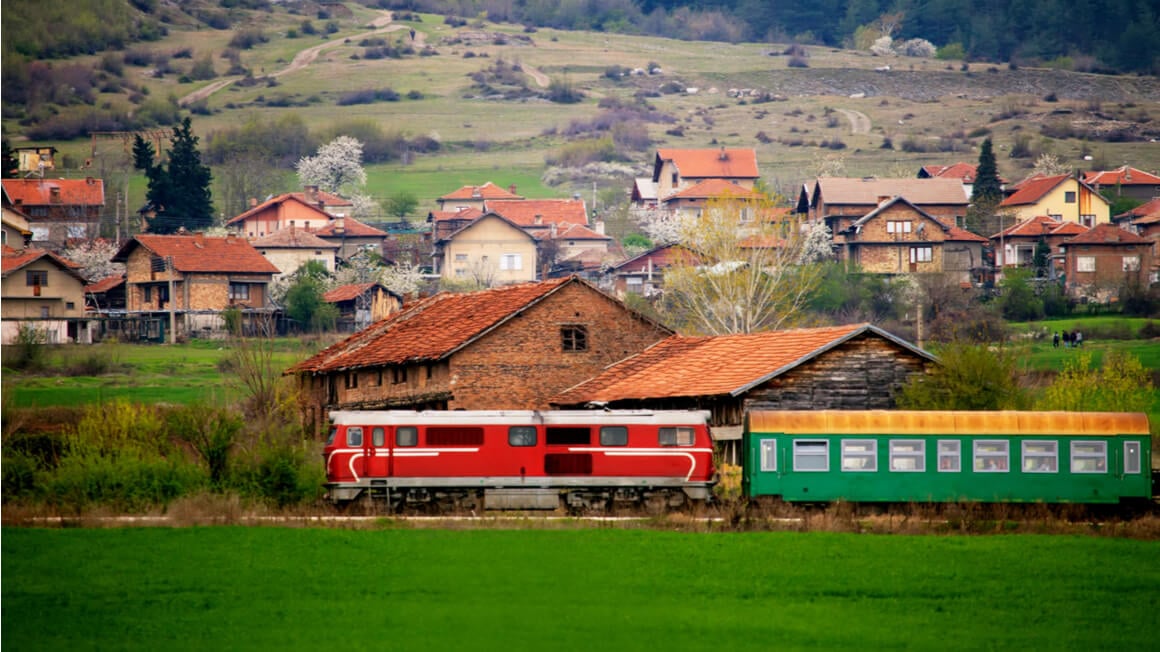
To Greece – Crossing overland to Kavala or Thessaloniki is super duper easy, and both are great gateways to all the spectacular sights of Greece. (Tourist tip: Northern Greece is nowhere as touristed as Athens or the islands.) Greece is part of both EU and Schengen.
To the Balkans – Western parts of Bulgaria also offer entry to the most under-rated, ultra-cheap, uber-cool Balkan destinations: North Macedonia and Serbia. You can easily find a bus from Sofia to Nis (Serbia) or Skopje (N-Macedonia), and neither country usually requires a visa to enter.
Backpacking Greece Travel Guide
Backpacking Turkey Travel Guide
Backpacking the Balkans Travel Guide
Working in Bulgaria is definitely possible although not the easiest thing. Bulgarian companies prefer to hire Bulgarian employees over foreign ones, but don’t lose hope yet! There are many international companies operating in Bulgaria, and there are some vacancies for foreigners – especially around the biggest cities.
Most foreigners work in IT, finance, or engineering, but there are also job opportunities in tourism.

The downside to working in Bulgaria is the salary. Even though Bulgaria’s economy is on the rise, it’s still one of the cheapest – ergo poorest – countries in the EU, and in general, salaries are not high.
Foreigners from EU or EEA countries don’t need a work visa to work in Bulgaria but anyone else does. If you get hired by a company in Bulgaria, your employer should be the one who gets the visa for you. So just focus on looking for jobs and don’t worry about the visa for now.

A new country, a new contract, a new piece of plastic – booooring. Instead, buy an eSIM!
An eSIM works just like an app: you buy it, you download it, and BOOM! You’re connected the minute you land. It’s that easy.
Is your phone eSIM ready? Read about how e-Sims work or click below to see one of the top eSIM providers on the market and ditch the plastic .
The Digital Nomad Scene in Bulgaria
Bulgaria is FANTASTIC for remote workers.
It checks off most of the items on the list of requirements that digital nomads have for their dream homes. Bulgaria is super cheap, interesting and entertaining, and has great wifi.
Is the weather in Bulgaria great? That can be debated.
The summer season is lovely but short. But then again, Bulgaria does draw in the snow crowd. The winter season can be even busier than the summer so digital nomads in Bulgaria will always have a community around.
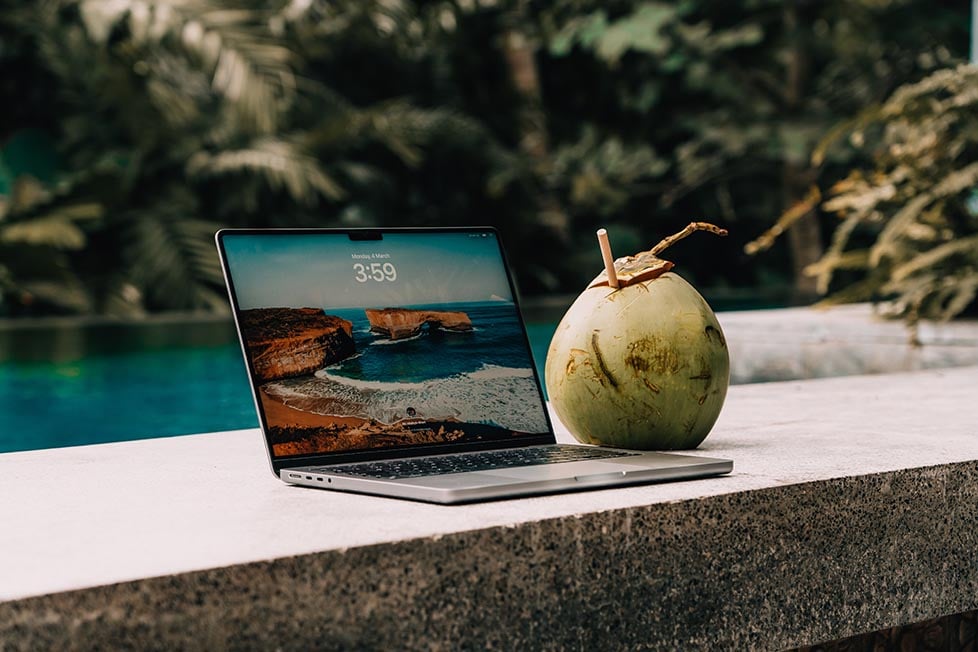
The big cities Sofia and Plovdiv have a decent crowd and some great co-working spaces. They’re kinda plagued with the problem of big cities though: you get lost among everyone else.
That’s why I’d recommend heading to Bansko as a nomad. I might be biased since I had such a blast there but mark my words, Bansko will be one of the best destinations for digital nomads in the world soon. The tiny town has multiple co-working spaces and heaps of nomads at any given time – honestly, it’s one of the best digital nomad communities I’ve experienced anywhere. Plus, there are some affordable hotels in Bansko that have apartments and suites for a good price.
Bansko is also home to an annual digital nomad festival which has been growing in numbers every year!
Teaching English in Bulgaria
Teaching English abroad is an awesome way to stay somewhere a bit longer. Since Bulgaria joined the EU, the demand for English teachers has been boomin’ and bloomin’. You’re needed!

However, it’s not quite as easy as hopping in front of a classroom to talk about pronouns and sentence structures. In Bulgaria, you’re required to have a work visa to teach English as well as a TEFL certificate and usually a Bachelor’s degree. The pay is not super high either – comfortable for living in Bulgaria but not much to save up.
Still, teaching English is a great way to find a way to stay in Bulgaria if you find yourself falling deeper and deeper in love with the country.
TEFL courses open up a huge range of opportunities and you can find teaching work all over the world with one! Broke Backpacker readers get a 50% discount on TEFL courses through MyTEFL (simply enter the code PACK50).
Volunteering in Bulgaria
If you’re not a digital nomad or an employee but would like to hang around still, there are definitely options to stay longer. One of the best ways to live somewhere long term is to volunteer. For the measly price of your time and labour a few hours a day, you get free accommodation and meals in exchange.
But freebies are just a bonus. The real reason you should consider volunteering on your next trip is to give back.
Volunteering attaches you to the local landscape more firmly than a regular backpacker just hastily flitting through. It is the more meaningful way to travel by creating connections and doing something good in exchange for all the awesome hospitality Bulgaria has shown you.
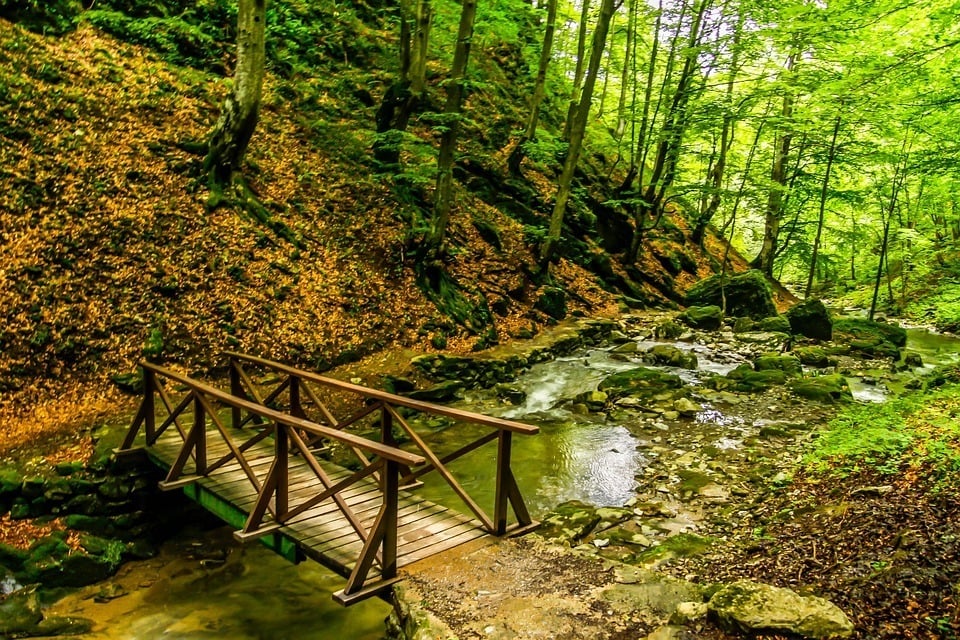
There are definitely plentiful volunteer opportunities offered around Bulgaria. Most of them are very normal volunteer gigs: gardening, helping build stuff, babysitting, animal-sitting, and just generally lending a helping hand around.
At The Broke Backpacker, we LOVE Worldpackers. It’s one of the best work exchange sites out there with great volunteer opportunities, a communal platform to share your experiences, and a company that actually cares about you.
Workaway is another great option and it’s worth checking out too, since Bulgaria might have limited volunteer opportunities.

Worldpackers: connecting travellers with meaningful travel experiences.
Bulgaria sits in the seam between Slavic stoicism and Ottoman hospitality; maybe that’s why its culture is such a funny hodgepodge of outwardly rude and actually lovely.
Walking in the street, you’d think this is a country of tough motherfuckers. Seriously, is smiling in public forbidden or something? Even me, a Finnish person, was blown away by the serious looks!
Once you actually start chatting with people though, you’ll realise they’re super helpful, friendly, and hospitable.
In the mountains, Bulgarian mountaineering groups always invited me to their table when they saw me sitting alone, offering a share of delicious Bulgarian sausages and crackers.
Most young Bulgarians I met spoke excellent English so I made a lot of friends and was able to get some insight into some baffling Bulgarian habits. For example, they shake their head when they mean yes, and vice versa. (Although not always… The truth is your best guess.)
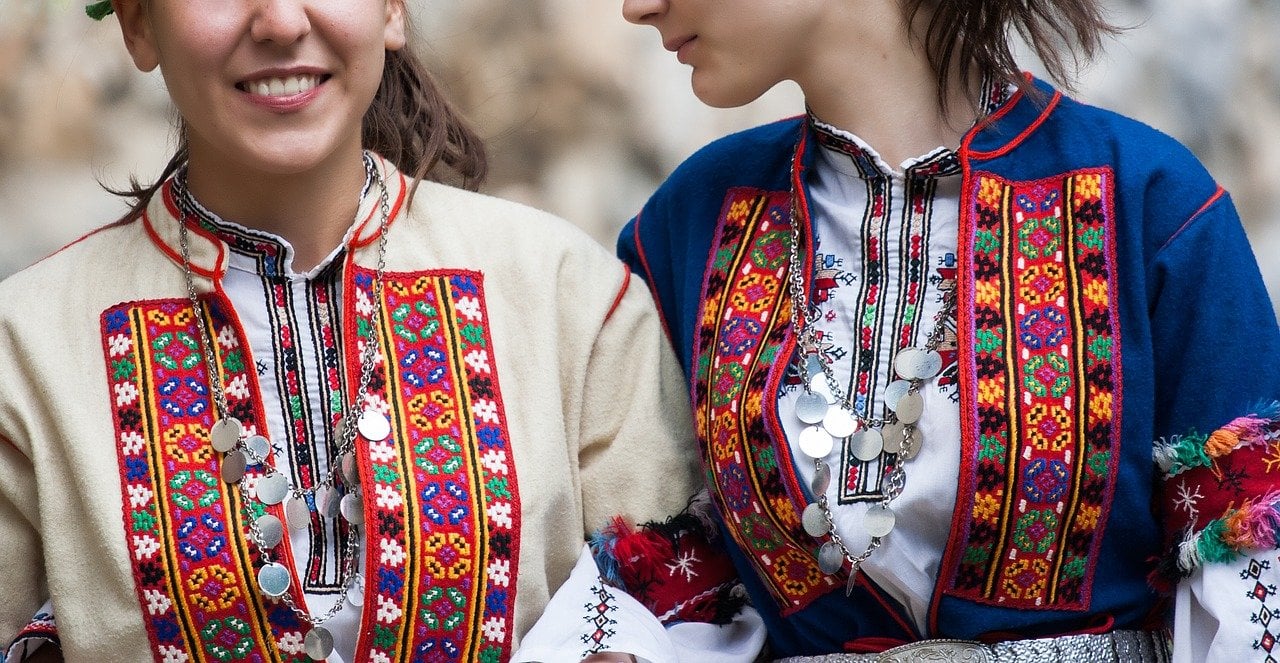
Customer service in Bulgaria is a notoriously hilarious experience. It’s a fifty-fifty chance of being absolutely great or confusingly bad.
In a mountain town, I went to grab a quick lunch before my bus. They gave me the menu, and I asked for baked potato with bacon.
‘Pasta with broccoli?’ the waiter asked.
‘No’, I said with a smile and pointed at the menu at the right item. ‘Baked potato with bacon.’
He bent to look and nodded (I should’ve known!). ‘Okay.’
‘Okay?’ I confirmed.
‘Okay’, he said. Fifteen minutes later, he brought me pasta with broccoli.
I didn’t have time to switch dishes and catch my bus so I ate it anyway. TBH, it was still delicious.
Then again, the owners of the restaurants where I was a regular during my few-month stint in Bansko were incredible. The lady at my favourite dinner spot was like a grandma – one that I didn’t share a language with – and the way she kept offering me bread, she was feeding me like one, too. And the owner of the place where I had lunch every day used to give me and my friends free baklava as dessert.
Useful Travel Phrases for Bulgaria
The main language spoken in Bulgaria is Bulgarian which is a Slavic language. What makes it even more fun is that Bulgaria has their own alphabet, because why not 😀
Google Translate is one of the most useful travel apps , but I found that the camera function dealt with the Bulgarian scribbles – eh, poorly. So I recommend that you try to learn the alphabet before you go. Or at least take a screenshot of the alphabet translated into Latin letters so that you won’t get caught in a pinch.
Russian is also pretty widely spoken. You can get by fine with English while talking to younger people and in bigger cities, but don’t take it as a given that people could understand you.
For this reason, learning the language (or, let’s be realistic, parts of it) is a good idea!
- Thank you – Blagodarya (or, if that’s tough, just merci)
- Hello – Dobar den
- Bye – Dovijdane (or, ciao , because even Bulgarians don’t want to deal with how difficult their language is)
- Yes – Da
- No – Ne
- Excuse me – Izvinete
- Cheers! – Nazdrave!
- Red/white wine – Cherveno/Byalo vino
- I am vegetarian – Az sam vegetarianets
- That was delicious – Beshe vkusno
- One big beer, please – Edna golyama bira, molya!
- Cool – Yako (As in, ‘ Oh, you’ve got a bottle of rakia? Cool! ’)
What to Eat in Bulgaria
Bulgarian food is DELICIOUS. I mean, for me it is. I’ve got a feeling that you’re not gonna like Bulgarian food much if you’re a health nut. The food there is filling and heavy, truly something made to get you through the harsh winter.
Picture this: deep-fried white cheese. Tender pork-neck steak with roasted potatoes. Peppers stuffed with minced meat and rice. Puff pastry stuffed with cheese. Moussaka – also stuffed with cheese? Probably.
But the menu isn’t completely devoid of vegetables, either. For some more refreshing grub, pick a salad, like the traditional shopska salad. It’s weird how they can make simple cut-up cucumbers and tomatoes taste so good but somehow they’ve done it.
There’s also tarator, a refreshing, cold cucumber soup. I’m not sure if that counts as a vegetable though, since it more resembles liquid tzatziki.
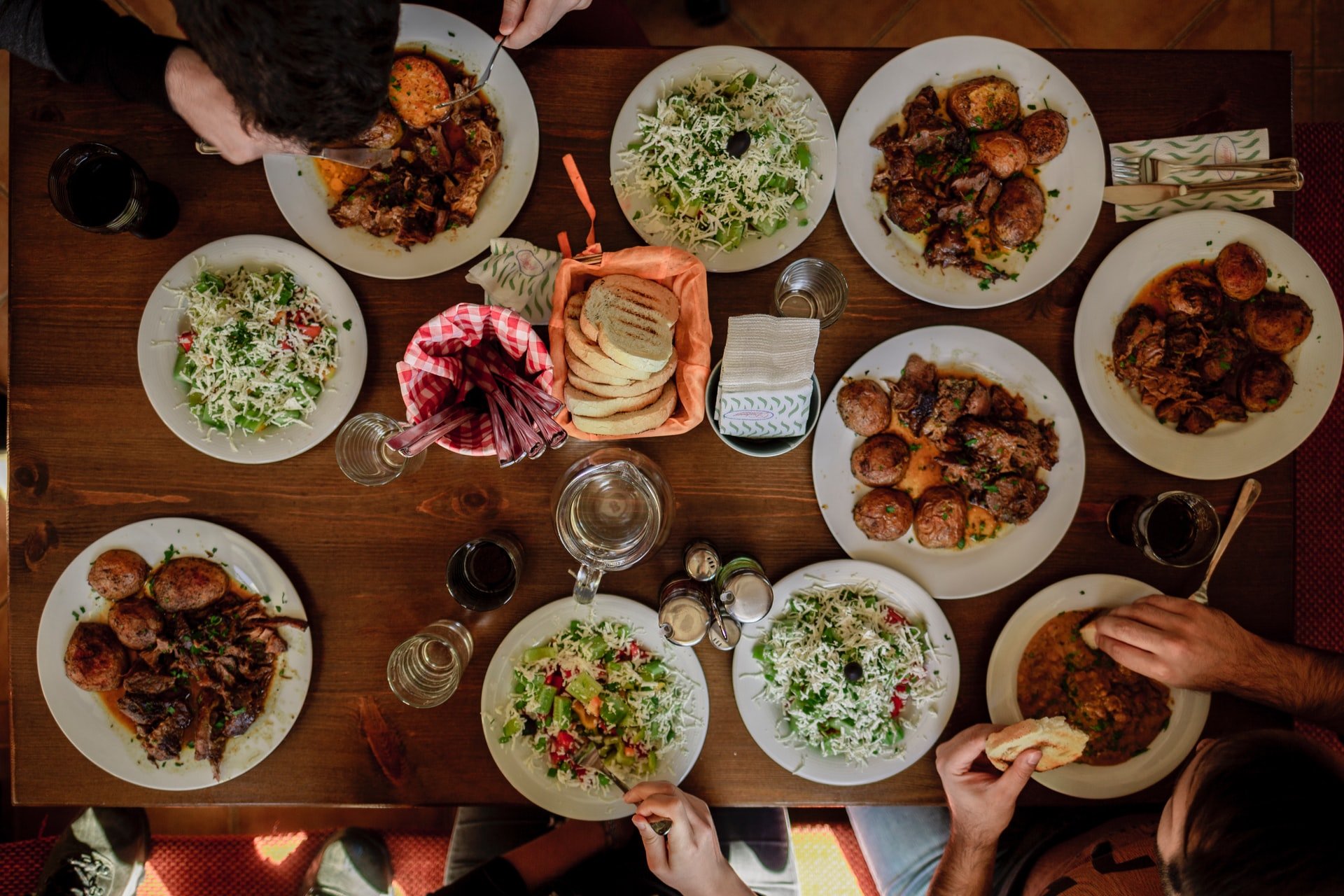
Just a word of condolences to my vegan friends: living da veggie life in the Balkans is not easy, and Bulgaria is no exception. In bigger cities, you’ll surely find some options. But in general, a vegan or vegetarian diet is a little trickier than omnivorousness.
And no Bulgaria trip would be complete without some wine tasting. Because GOD DAMN, Bulgarian wine!!! It’s cheap, it’s delicious, it’s absolutely everywhere. If you don’t care for wine, you can flush all the delicious dishes down with some ayran, which is a yoghurt-based cold drink. (A lot like Indian lassi!)
But no matter where you eat, aim for the local looking spots. The touristy restaurants have amazing service and are usually decorated beautifully, but the prices come with a 30-50% mark up. That’s the price you pay for a smile in Bulgaria, I guess (and it’s not necessary).
Must-Try Dishes in Bulgaria
- Banitza – pastry filled with Bulgarian cheese
- Shkembe – trip soup
- Tarator – cold cucumber soup (kinda like liquid tzatziki)
- Shopska salad – simple salad with cucumbers, tomatoes, onions, and peppers
- Kebapche – Bulgarian kebab (sometime served aflame)
- Meshana skara – mixed grill
- Moussaka – kinda like lasagne but with more veggies
- Ayran – sour yoghurt drink like Indian lassi
A Brief History of Bulgaria
Sitting so close to such huge influences as Turkey and Russia, Bulgarian history is a cocktail of cross-influence from those two with the country’s own unique elements tossed in for good measure.
The Bulgarian state was actually established as early as 681. For the next few centuries, Bulgaria had time to figure out who they were and create their own alphabet (cause why not?). In the early 1000s, it became a part of the Byzantine Empire before being conquered by the Ottoman Empire. They spent the next half a millenia chillin’ as a part of it.
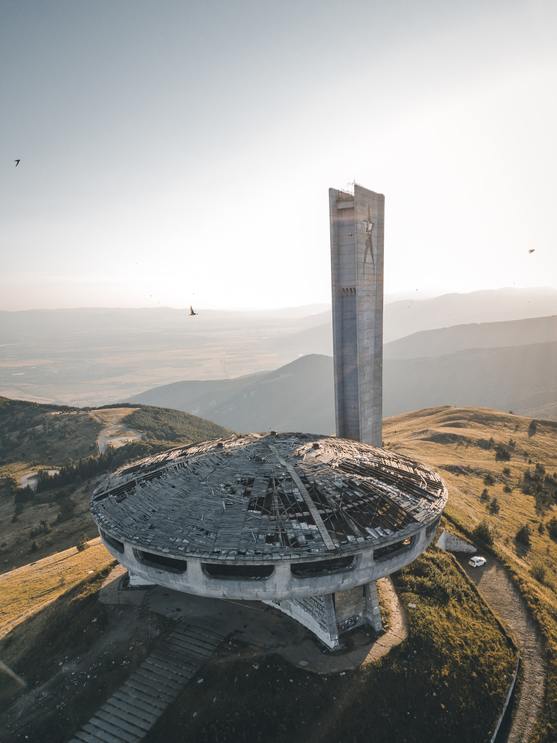
Well, Bulgaria likes doing their own thing, so a series of uprisings and wars in the late 19th century finally led to the establishment of the Bulgarian principality in 1878. (Fun fact, the Alexander Nevsky Cathedral in Sofia was built as a homage to the soldiers that died in the war that led to Bulgaria’s liberation.)
During World War II, Soviet troops invaded German-occupied Bulgaria. After the war – largely backed by Soviet Russia – Bulgaria became a communist republic. Bulgaria’s Soviet phase ended when the Soviet Union fell apart, and the 90s were coloured by shifts between socialism and parliamentary republic-ery as well as one economic crisis after another.
These days Bulgaria is a republic with a president. Since it joined NATO and EU in the 2000s, it’s also been embedding itself more cozily into the general European community.
Backpacking Bulgaria is anything but a boring time. Here are a few unique things to try while you’re travelling around this far-Balkan country.

Things go wrong on the road ALL THE TIME. Be prepared for what life throws at you.
Buy an AMK Travel Medical Kit before you head out on your next adventure – don’t be daft!
Hiking in Bulgaria
Bulgaria is a hikers’ PARADISE – planning a hiking trip here is easy peasy. No wonder when half the country is covered in extremely climbable and very pretty mountains.
Popular trails are well-marked, and there’s an extensive mountain hut network. I highly recommend hiking in Bulgaria with your own camping gear though; I found a lot of huts to be closed, and making reservations beforehand was really difficult.
There are 4 main mountain ranges in Bulgaria, each with its own, most awesome hikes.
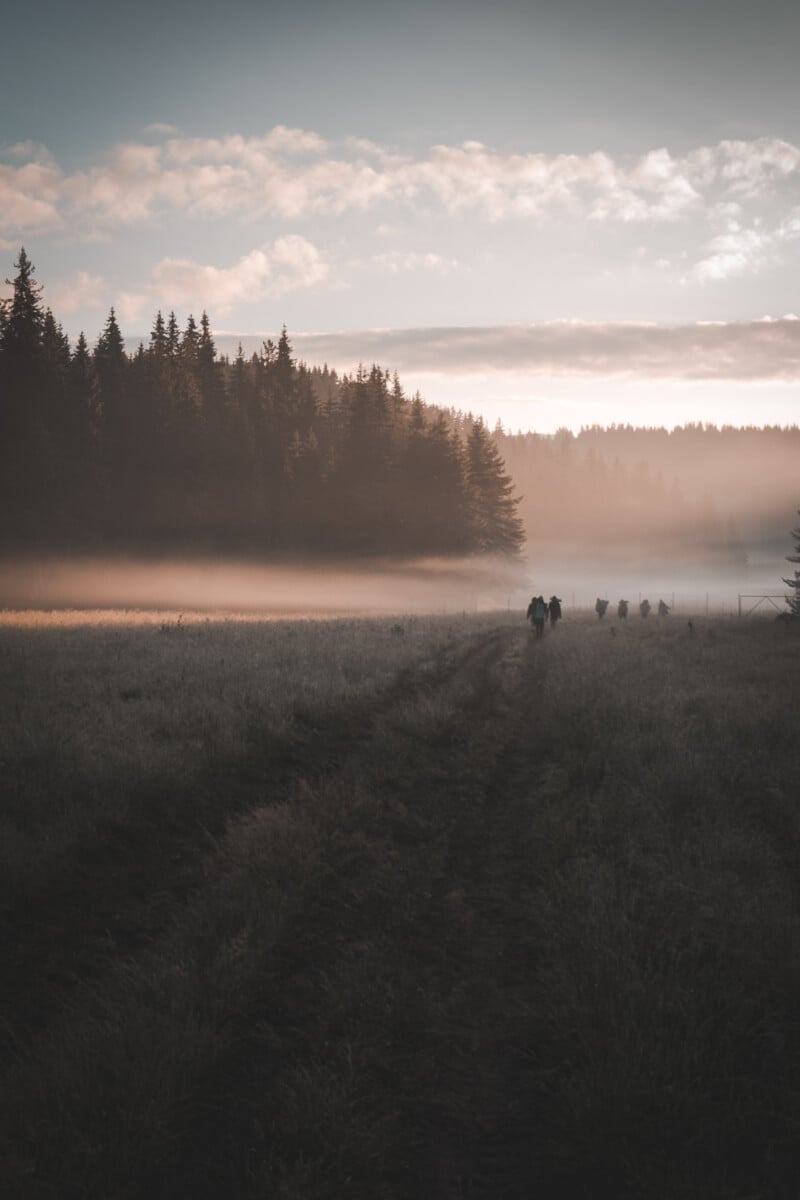
Pirin mountains: Most easily accessible from Bansko. Its main peak, Vihren , is the second-highest summit in the country. The best hike though, continues from Vihren peak to the Kocheto Ridge . It’s a long day of walking but one of the most gorgeous hikes I’ve ever done, AND one of the best hikes in Bulgaria fo sho.
A way easier hike is a 2-3 hour return trek to Muratovo Lake where you can chill with a picnic before heading back.
Rila mountains: Home to the most famous natural attraction in Bulgaria, the staggeringly pretty Seven Rila Lakes. You can spend the night at the mountain hut and extend the hike by walking to Malyovitsa peak the next day. The route between the lakes and the peak is fairly easy but the descend from the peak to Malyovitsa hut is gruelling – put aside 2-3 hours just for that!
It’s in the Rila mountains that you can also find the highest peak in Bulgaria and the whole Balkans. The hike to Musala takes about 5-6 hours return, and it’s only moderate difficulty, so it’s possible as a day trip.
Rhodope mountains: Rhodope mountains are awesome but I was really struggling to find the perfect multi-day trek between points there. I’d recommend getting a car so you can do day hikes around the area and check out its coolest attractions.
Balkan mountain (Stara Planina): The most popular hike is to Botev Peak . However, if you’re a seriously crazy hiker, you can tackle the longest trail in Bulgaria. Starting from the Kom Peak and ending in Emine on the Black Sea, the trail is about 700 km long and can be done in 20-25 days.
Winter Sports in Bulgaria
Bulgaria is also quickly becoming one of the new fav children of European snow tourists. Snowboarding and skiing in Bulgaria are big in the winter months, and they are the best things to do in Bulgaria in winter. Come get your share of the powdery goodness.
Eastern European mountains are better bang for your buck than the tired ole Alps. Skiing in Bulgaria is not exactly cheap either – what ski holiday ever is? – but the price of a Bulgarian ski holiday is about 2/3 of one in the Alps.
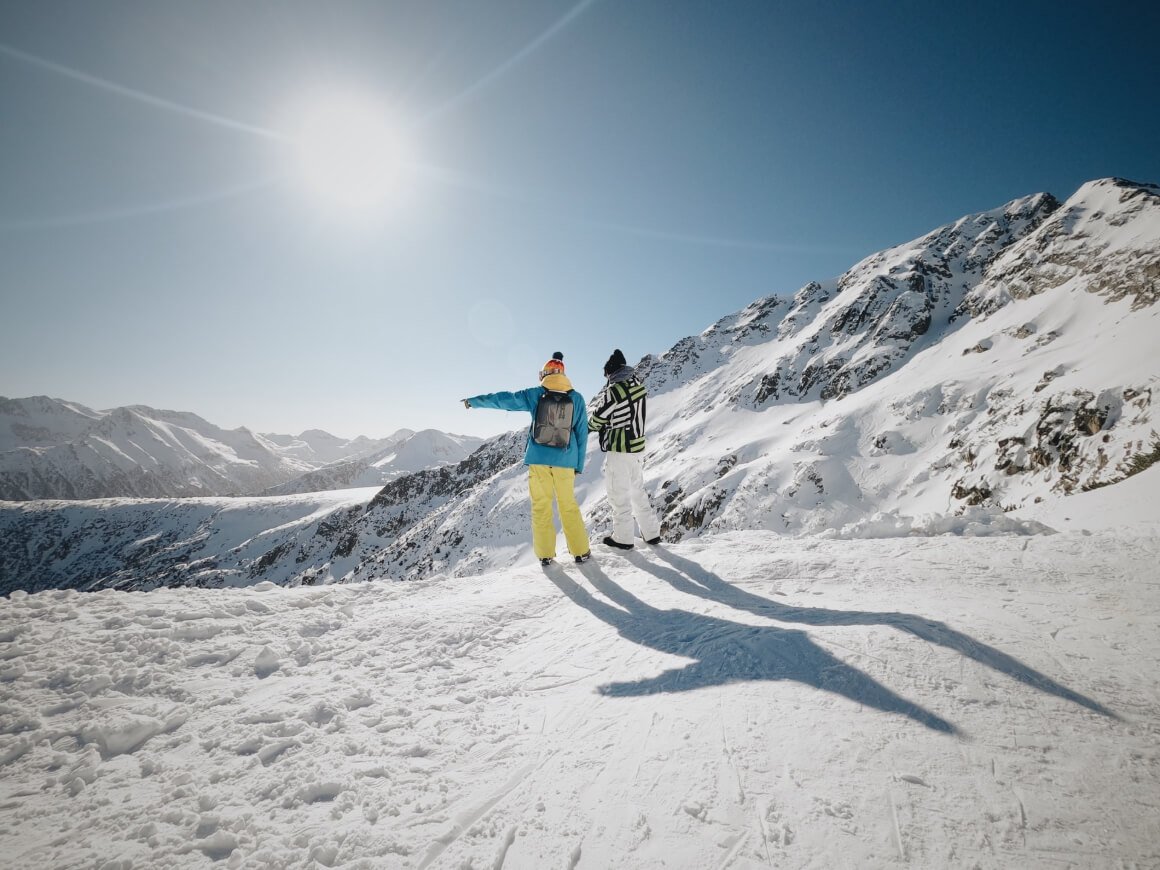
I was in Bulgaria in the summer so obviously, I didn’t do any skiing (unless you want to count that one time I had to ski down a really steep slope on my ass). But this is what my snow-lover friends said about the ski season in Bulgaria:
It’s great for first-time skiers and snowboarders since there are a lot of ski schools and tourism centred around snow sports.
There are also options for more pro slope fiends but the number of pistes is not huge; if you’re someone who gets bored easily, you might not want to spend the entire winter there.
Then again, there are also guided ski tours and off-piste options for the biggest daredevils.
Plus, Bulgaria gets busy around the snowy season: in places like the Pirin mountains, winter is actually the high season. This is great if you’re looking for some community and company. Cosy mountain huts and fellow skiers make Bulgaria one of the best places to spend Christmas in Europe if you’re looking for that wintery postcard experience!
Bansko probably has the best skiing in Bulgaria. It has the most (read: the cheapest) accommodation options – so it’s the best bet for broke backpackers! Borovets near Sofia is the country’s oldest ski resort and it’s awesome. Pamporovo near Plovdiv is also cool.
Is Bulgaria safe for tourists?
Yes! Bulgaria is extremely safe and ranks high on the Global Peace Index. Just keep an eye on your valuables and take all the normal precautions.
Is Bulgaria expensive to travel?
Nope! Bulgaria is one of the cheapest countries in Europe, and most likely the cheapest country in the EU. You can definitely spend some money if you try but if you’re a backpacker living da backpacker lyfe, you’ll save lots.
How long should I spend in Bulgaria?
A week or a couple is probably fine if you’re just wanting to check off the major destinations. During my couple of months in Bulgaria, I heard more than one story about someone who came to just check it out… and literally bought an apartment on their first week there. It’s OK if you want to just visit Bulgaria for now – that’s always a good starting point.
Do they speak English in Bulgaria?
Sometimes, yes. Young people and people in cities like Sofia and Plovdiv speak pretty good English. In the countryside and in small towns, English is not very commonly spoken.
Why Bulgaria is the best?
Because it’s absolutely STUNNING. It has beautiful cities, gorgeous mountainscapes, pristine lakes, and endless sunflower fields. You can stuff your face until you explode with incredible food for about 10 bucks. It’s convenient to visit, comfortable to stay in, and because it simply IS the best!

Our GREATEST Travel Secrets…
Pop your email here & get the original Broke Backpacker Bible for FREE.
On this very contested map of the world, in this day and age, it’s great to say how delightfully simple your visit to Bulgaria is. No super-dark past, no ultra-complicated present politics – just a nice country eagerly awaiting foreign tourists to come discover it the way that domestic ones have already done.
There are so many reasons to why visit Bulgaria. It is a backpacker’s paradise and even though it is super easy to get to, it’s still out of the way enough that it hasn’t become properly established on the main backpacking trail. Why?
Bulgaria is cheap, Bulgaria is hospitable, Bulgaria is awesome – in a word, Bulgaria is everything a shoestring traveller could hope for. On top of that, Bulgaria wants you there.
Whether it’s for hiking, snowboarding, or a couple of months of digital nomad work, I can guarantee that you’ll enjoy your time in this underrated Balkan gem.
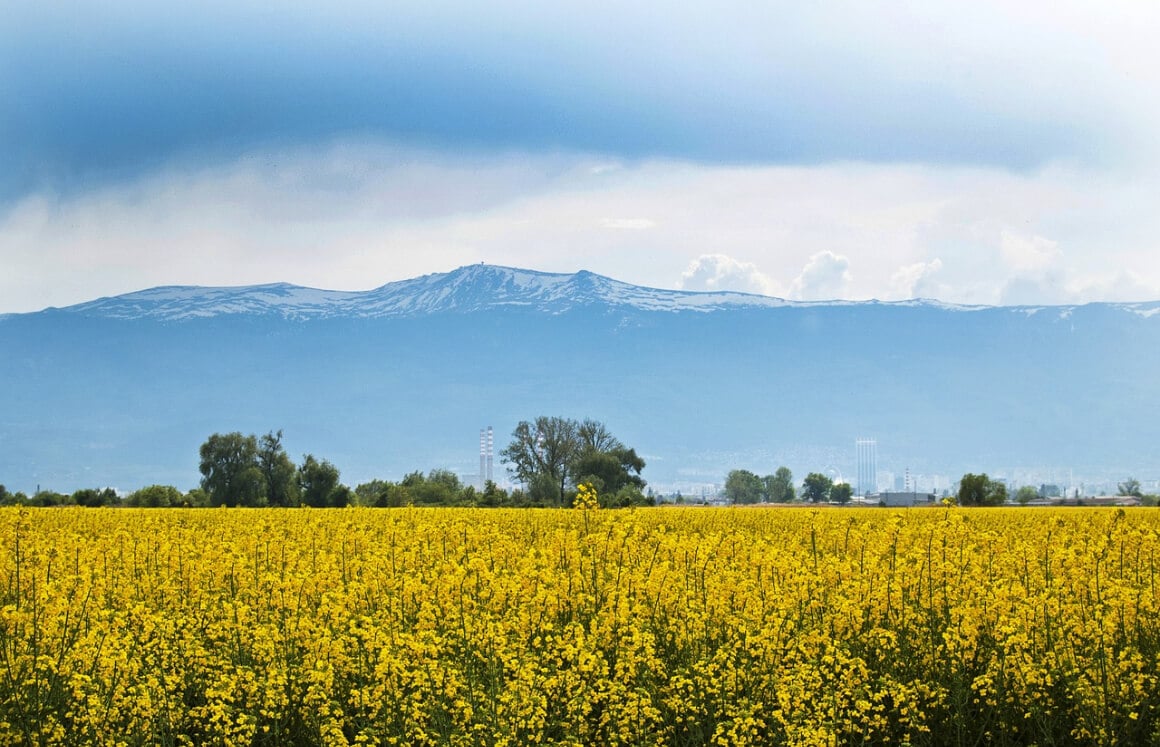
And for transparency’s sake, please know that some of the links in our content are affiliate links . That means that if you book your accommodation, buy your gear, or sort your insurance through our link, we earn a small commission (at no extra cost to you). That said, we only link to the gear we trust and never recommend services we don’t believe are up to scratch. Again, thank you!
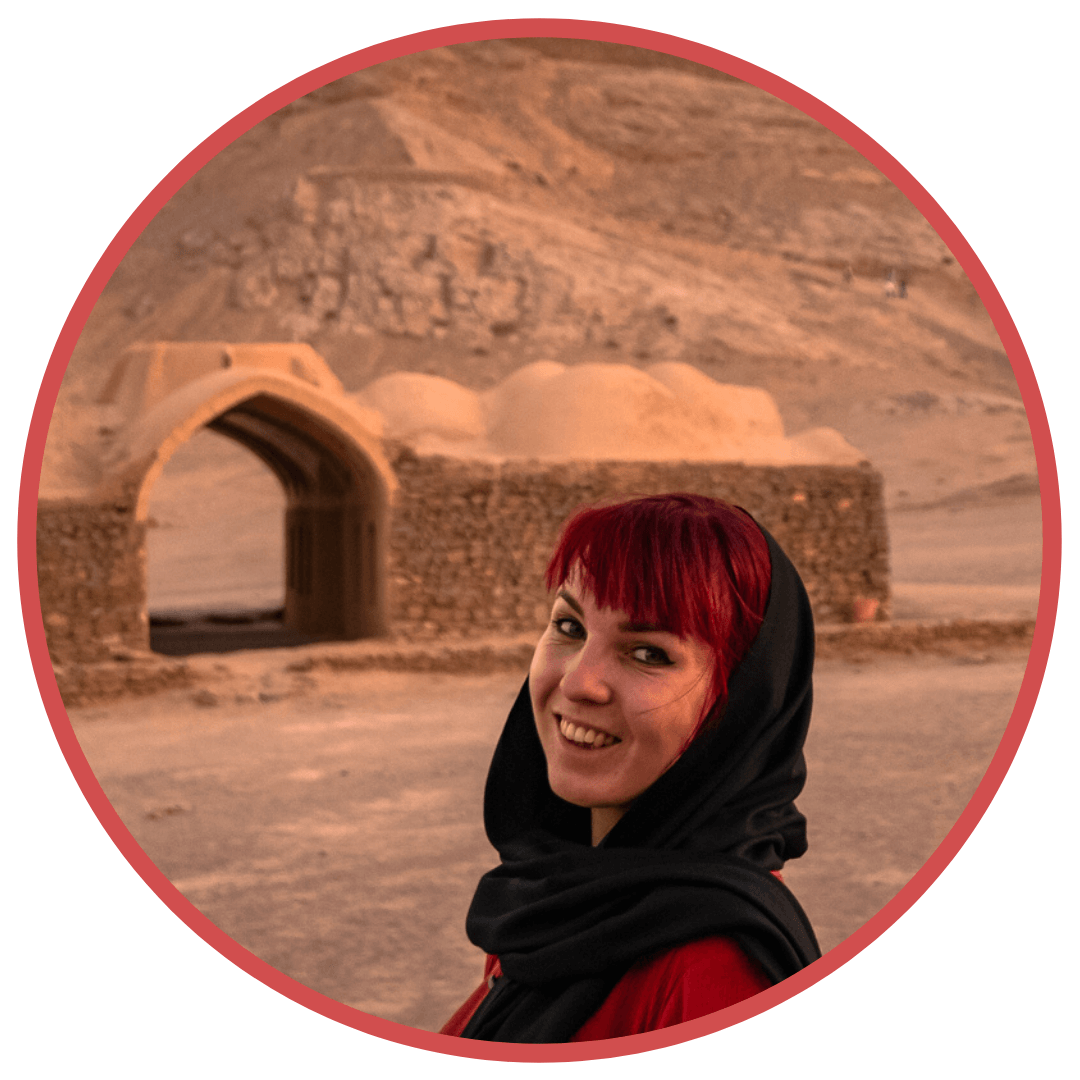
Elina Mattila
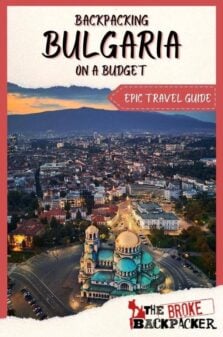
Share or save this post

Rila Monastery is a true gem nestled in the heart of Bulgaria’s majestic mountains, its vibrant colors and serene atmosphere offering a glimpse into centuries of rich history and spiritual devotion.
Leave a Reply Cancel reply
Your email address will not be published. Required fields are marked *
Save my name, email, and website in this browser for the next time I comment.
Notify me of followup comments via e-mail.
Top luxury hotels in Bulgaria

Flamingo Grand Hotel & Spa

Hilton Sofia
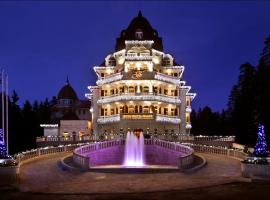
Festa Winter Palace Hotel
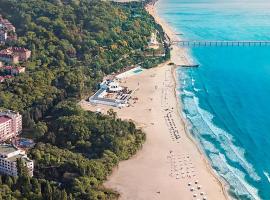
Primoretz Grand Hotel & Spa

Maritim Hotel Paradise Blue

Residence City Garden - The best city hotel for 2022-2023 at the Bulgarian Tourist awards
Bulgaria prices guide. how much does a trip to bulgaria cost the estimated travel expenses for food, public transport, attractions entrance and accommodation..
Currency in Bulgaria is Bulgarian Lev
If you are travelling alone to bulgaria, depending on your expectations, you will pay for an overnight stay from 34 usd (62 bgn) for a hostel to 162 usd (295 bgn) for a luxury hotel., the other daily costs you have to pay when travelling to bulgaria are:.
- Food 6.80 USD (12 BGN)
- Meals in restaurants 13 USD (24 BGN)
- Bottled water 0.65 USD (1.20 BGN)
- Local transportation 3.50 USD (6.40 BGN)
- Entrance tickets 25 USD (45 BGN)
- Alcoholic beverages 2.80 USD (5.10 BGN)
As you can see - a stay for a few days in Bulgaria can cost 202 USD (368 BGN) or 862 USD (1,500 BGN) , depending on whether you are a frugal tourist or you are planning to spend a luxurious holiday in Bulgaria.
How much Bulgarian Lev should I have for one week in Bulgaria?
If you want to spend a week in Bulgaria the cost of your stay will be:
- 471 USD (858 BGN) - a cheap stay for 7 days in Bulgaria
- 586 USD (1,000 BGN) - a budget travel for 7 days in Bulgaria
- 792 USD (1,400 BGN) for a one week of comfortable stay in Bulgaria
- 2,000 USD (3,600 BGN) for a week of luxury holidays in Bulgaria
How much money do I need per day to stay in Bulgaria?
If you are travelling alone to Bulgaria, 67 USD a day should be enough. If you choose a hotel for your stay in Bulgaria, the price will rise to 84 USD. A couple will have to pay around 150 USD for one day in Bulgaria. A family with two children should have 250 USD for one day stay in Bulgaria.
How to visit Bulgaria on a low budget? How to travel Bulgaria cheaply? How to save money while travelling in Bulgaria?
In order not to exceed reasonable expenses during a trip to Bulgaria, which we estimate at 84 USD (153 BGN) for a one day, you must comply with the following rules:
- Choose to stay in a hostel (34 USD (62 BGN) ) or in a cheap hotel (38 USD (70 BGN) ).
- Use public transport. The price for a one-way ticket is 0.88 USD (1.60 BGN) and for a monthly pass 27 USD (50 BGN) .
- Make your own breakfast and own dinner. Daily shopping cost in the shop is around 6.80 USD (12 BGN) in Bulgaria.
- Choose restaurants outside the city centre and close to tourist attractions. Meal in a cheap restaurant cost around 11 USD (20 BGN) in Bulgaria. McMeal at McDonalds (or equivalent meal in other fastfood restaurant) costs approximately 8.20 USD (15 BGN) .
Car-related costs are mainly fuel, road tolls and parking fees. Of course, the price depends on the purpose of the journey and energy efficiency of a vehicle.
In Bulgaria, you will pay for the fuel accordingly:
- Petrol price in Bulgaria is around: 1.50 USD (2.70 BGN)
- Diesel fuel price in Bulgaria is around: 1.40 USD (2.60 BGN)
- 1kg sausage: 12 USD (22 BGN)
- 0,5 kg bread: 0.98 USD (1.80 BGN)
- 10 eggs: 3.20 USD (5.90 BGN)
- 1kg cheese: 9.60 USD (17 BGN)
- 1 liter milk: 1.70 USD (3.10 BGN)
- 1 kg apples: 1.40 USD (2.60 BGN)
- Bottle of local beer (0,5 liter): 1.90 USD (3.50 BGN)
Car rental prices in Bulgaria
- What is the average price for a car rental in Bulgaria?
- How much does it typically cost to rent a car in Bulgaria?
- Is it cheaper to rent a car for a week in Bulgaria?
What is most famous in Bulgaria? How much does an average entrance to travel attractions in Bulgaria cost?
The most important tourist attractions in bulgaria that we recommend:, the museums worth a visit in bulgaria:, on warmer days, we recommend walking in parks in bulgaria. below is a list of the largest and most interesting parks in bulgaria. parks in bulgaria:, alcohol prices in bulgaria, bulgaria - whisky prices comparison, bulgaria - rum prices comparison, bulgaria - vodka prices comparison, bulgaria - gin prices comparison, book the best hotels in bulgaria - in partnership with booking.com, compare hotel rates in bulgaria and save up to 80%.

Amiral Hotel (former Best Western Park Hotel)

Hotel Imperial Plovdiv, a member of Radisson Individuals
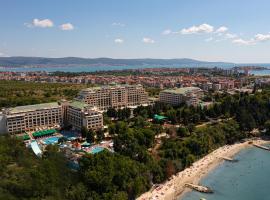
Sol Nessebar Palace All Inclusive
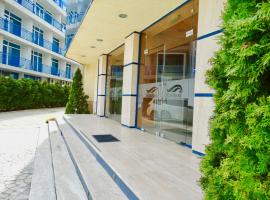
Rainbow 1 Holiday Complex
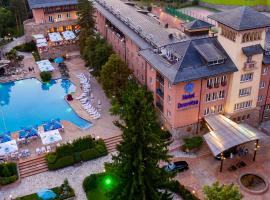
Spa Hotel Dvoretsa

Meg-Lozenetz Hotel
Compare travel cost and expenses in specific cities in bulgaria 2024.
Roamopedia.com

Budgeting for Bulgaria: Average Costs for Accommodation, Meals, and Activities
- Visa Requirements
- Connectivity
- Points of Interest
- Accommodation
- Local Cuisine
- Transportation
- Health concerns
- + - Font Size
COLORFUL SISTERS

5 Days in Bulgaria – Ultimate Itinerary for an Unforgettable Trip

Bulgaria. Vast, impressive, and beautiful. Incredible nature and diverse experiences. Although Bulgaria is not one of the most trending and popular tourist destinations, this undiscovered gem of a country has a lot to offer. From stunning mountain views to delicious coffee shops and restaurants, you are sure to have a memorable (and budget friendly) visit to this Balkan country with this unforgettable Bulgaria itinerary.

Is this Bulgaria Itinerary Right For You?
The ideal travel itinerary varies from person to person. Some people love adventure and crazy experiences while others love to relax and forget all of their troubles. Our trips tend to be very memorable, but also fairly busy. This Bulgaria itinerary is for you if you want….
- A memorable trip that is diverse and enables you to see a lot of the country in a short period of time
- The perfect combination of adventure and relaxation (everything is about balance)
- Lots of nature, while also dappling in Bulgaria’s cities.
- Some traveling around the country and long(ish) drives
- Fully packed days in order to see as much as you can on a somewhat short schedule
- LOTS of amazing memories
Things to Know Before You Travel to Bulgaria
Safety – In general Bulgaria is a very safe country with a low rime rate. Although there is always a risk for typical petty crimes such as pickpocketing or theft (is there any place in the world that you don’t have to worry about this?), Bulgaria is overall a very safe destination for tourists.
Attire – Bulgaria is a European country with typical Eastern European and Balkan countries’ style. There is no particular need for any special type of clothing while visiting Bulgaria.
Getting Around – Although Bulgaria does have a solid system of public transportation (busses, trains, etc), they can be difficult to maneuver and understand without speaking Bulgarian. Within Sofia and other major cities, they do have a very reliable metro system. However, if you are planning to travel around the country, intercity buses to small towns are less frequent and less reliable.
Costs – Bulgaria is overall a very affordable travel destination. Food, transportation, and hotel costs are very low in comparison to many other places. It is often listed as the most inexpensive travel destination in Europe . Although Bulgaria is a part of the European Union, they do not accept the Euro as a form of payment. The local currency is the Bulgarian Lev.

Language – Bulgarian is the official language of Bulgaria and is what is spoken by the majority of the country’s 6.8 million citizens. While you will most likely find locals who speak English in some of the bigger tourist destinations and restaurants (especially in the big cities), outside of the city and the touristy places, they usually do not understand more than a few words of English. I would strongly suggest downloading Bulgarian on Google Translate. It was needed many times for parking, transportation, directions, and bookings. And the locals are always excited to hear tourists trying to speak a little bit of the local language! Many of the countries road signs are also written only in Bulgaria (even at big tourist destinations like Seven Rila Lakes), so Google Translate with the camera feature is very handy!
Shaking the Head – Now this is a very random tip, but one of the most confusing things that we found on our trip to Bulgaria was that the sign of shaking your head from left to right, which typically means no in most countries, means the opposite in Bulgaria. If someone shakes their head from side to side that means yes!

5 Day Bulgaria Itinerary
Even though we only had a few days in Bulgaria, we packed the trip with exciting adventures in the cities and the countryside. We experienced some of the authentic culture in the smaller countryside towns while exploring the trending Sofia with its endless restaurant and café options. We managed to experience a little bit of everything in our fun 5 day Bulgaria itinerary.
One of the most exciting things about Bulgaria is that it is one of the cheapest travel destinations in Europe. Excluding our tickets, we spent about $500 per person for the entire trip (including food, accommodations, car rental, fun activities, etc). And keep in mind that we weren’t focused on budget-travel. If you choose to take public transport instead of renting a car and choosing hostels over Airbnb’s, you could keep the cost down much lower!
Day 1: Explore the Capital City of Sofia
Most people, when they arrive to Bulgaria, land in the capital city of Sofia. Sofia is the largest city in Bulgaria in terms of population, the second oldest city in Europe, and a wonderful place to explore, relax, and enjoy delicious food and historical sites. Whether you are looking to promenade, resting every now and then for a coffee, or to visit museums and learn about Bulgarian’s history, there is something for everyone.

We spent our first day exploring some of the fun things that the city has to offer. After grabbing something to eat from the delicious Rainbow Factory café, we walked down the main promenade – Vitosha Boulevard and enjoyed tea while people watching. Consider exploring some of the side roads as well to find very affordable second hand shops!
Top 3 Things To Do in Sofia City

1. Stroll Down Vitosha Boulevard – Vitosha Boulevard is the place to be. Lined with cafes, restaurants, pubs, bars, clubs, and bookshops, there is a little bit of something for everyone. This pedestrian street certainly has its fair share of tourist traps, but you can also find many gems and fun places to people watch and enjoy delicious food. And don’t forget to take in the lovely city views.
2. Check out the Sofia History Museum – What used to be Sofia’s bathhouse was turned into the Sofia History Museum. We happened upon this museum quite by accident and were attracted by the beautiful and stunning architecture. Upon a closer look, we found out that it was a history museum that cost just a few Euros for entry. You can learn about the ancient history and more modern history of Bulgaria in the wonderfully organized museum.

3. Enjoy the Historical Cathedrals and Gothic Architecture – Just walking through the streets of Sofia, you can find beautiful and historical cathedrals like the Alexander Nevsky Cathedral which is the top tourist attraction in Sofia. But even just walking down the streets, you can find smaller churches and beautiful architecture that dates back many years.

Check out this post for a complete list of things to do in Sofia: 10 Can’t-Miss Things to Do in Sofia | Exploring the Unique Things in Bulgaria’s Capital City
Where to Eat in Sofia
On our first day in Sofia, we were very impressed by the level of food. Everything we had was delicious (and of course very inexpensive). We ate at Rainbow Factory café and the beautiful and delicious Shtastlivetsa that is right on the main boulevard.

Check out this post for a more comprehensive list of the best places to eat in Sofia: Where to Eat in Sofia | 11 Best Cafes and Restaurants
Transportation
Although most of the best places to visit in Sofia are within walking distance, you can also take a taxi within the city. The taxis are very inexpensive to other cities and the drives are usually pretty short and traffic free. We had a rental car for the entirety of our trip, however, there were some difficulties paying for street parking without a Bulgaria SIM card and phone number. As a result, we were stuck using only parking lots while in the city. We were also warned that if you illegally park or overpark, you don’t just get a ticket, but your car will be blocked in by the police.
If you do want to take a taxi, be aware that there are plenty of scammers out there (as in any country). Two reputable taxi companies include Yellow! taxi or O.K. taxi. If you want to use an app to order a taxi (like Uber), Yellow is the one for you.
Where to Stay in Sofia
We stayed at a very cute Airbnb in a wonderful and very central (yet still quiet) location! We stayed there for all of the nights we spent in Sofia. Two nights in the beginning of the trip and one night at the end of the trip. It was clean and spacious, beautifully decorated, and the host was helpful and kind. It was on the 5th floor, with no elevator, so be prepared to get some extra steps in!
Day 2: Sofia and Surrounding Areas
On our second day in Bulgaria, we originally had planned to go for a hike to the Seven Rila Lakes, Bulgaria’s top tourist destination. However, the weather was not on our side and it appeared that there was a full day of rain ahead. We changed our plans slightly and looked for something fun to do in the area, switching our Bulgaria itinerary a bit. When in doubt, why not spend the day at a spa?

Infinity Spa
After a little bit of research we found that there was a lovely spa nearby with mineral-rich waters. Located in Pancharevo, just about a 20-minutes drive from Sofia, you will find a quaint little spa with a beautiful view of Pancharevo Lake, Infinity Spa . For just around $25 you can spend half the day at the spa, receiving drinks, access to multiple saunas, and of course the mineral-rich waters that come from the ground in the surrounding area.

Although it did start to thunder and rain while we were there, you could still stay in the covered section of the pool or venture to the uncovered area and feel the cold raindrops combined with the hot water. Smoothies and snacks are included in the price, but there are not full dishes offered, so consider eating before or after.

After our relaxing spa trip, we headed back to Sofia for some dinner and relaxation. We were waking up very early the nex day to continue our adventures. To get the full traditional Bulgarian experience, we went to The Hadjidragana Tavern which was complete with live music and performances.
Day 3 – Explore the Countryside
Although Sofia was fun, every trip needs to be balanced. We woke up early in the morning to start our adventure to the countryside. We found a small farm about two hours south of Sofia where we could go on long horseback riding treks in the mountains – Rusaliite Adventure House in Bachevo village. Before departing the city, we stopped back at Rainbow Factory café to grab some sandwiches for the drive. The scenery immediately changed to stunning landscapes and tall mountains. Small villages dotted the distances.

Horseback Riding in Bulgaria
The farm itself was beautiful. There were friendly dogs wandering all around with chickens and bunnies in the yard. And most importantly for us…there were dozens of beautiful horses and a stable. We checked in for the night, put our bags in our rooms, and started immediately on our first horse trek for the trip. They packed us all a small lunch, assigned us each a horse according to our experience, and we headed up the mountain.

Our guide was a local of a nearby village. Although he did not speak any English, he was extremely friendly and kind. He picked wild berries for us to eat and took us to beautiful viewpoints that overlooked mountains and incredible scenery. After about an hour and a half we took a break amongst the trees to have lunch. There was a water fountain with the coolest, most delicious water that we have ever tasted. It came right from the mountains…the purest purification process. Using Google Translate, we asked the guide what kind of animals were in the forest. We were shocked by some of his stories of bear encounters in the same spots we were riding. As we are experienced riders, we also got to gallop through the small paths. The experience was incredible and memorable and the views unforgettable.

Stay Overnight at the Farm
We slept one night at the farm itself. It was quiet and relaxing and we got to pet the horses and enjoy archery before heading to our rooms as it became dark and cold. The food at the farm was not the best and not very diverse and there is not much else in the area, as it is quite remote. So if you have food allergies or sensitivities, speak with the hosts before arriving.

Day 4 – Hiking 7 Rila Lakes
No trip to Bulgaria is complete without hiking the 7 Rila Lakes. Luckily for us, the lakes were more or less on the way back to Sofia, so we were able to fit in a trip to this awesome hike. Because we like to fill our trips to the fullest, we also went on a few hour horse trek at 6:00am. This was before driving to 7 Rila Lakes. It was a few hours of pure bliss as we saw incredible mountain views and ate more berries and fruit from the trees. Don’t worry, all approved by our local guide before consuming! We ate breakfast of local donuts with jam and cheese and omelets before beginning our journey to the lakes.
Hiking 7 Rila Lakes
If you are planning a trip to the Seven Rila Lakes, we would really recommend allowing for an entire day as it is an incredible experience. After driving a few hours from the farm, we approached some ominously tall mountains, which hid the seven lakes. It was a beautifully sunny day. As we drove through the town, we were surprised to see how few signs were written in English. Even though this is one of Bulgaria’s top tourist attractions, they were mostly written in Bulgarian only.

We followed the stream of cars that were also heading to the tourist attraction and asked some locals for help. In very broken English they happily showed us the way. The temperature dropped rapidly as we drove up the windy roads to the entrance of the park. Stunned by the views and the expanses around us, we were so happy that we did not skip this experience.
When we finally reached the entryway and the parking lot, we were greeted by a small line of vendors selling local goods and snacks as we approached the lift that would take you to the beginning of the hike. The lift was actually quite expensive for Bulgarian standards, costing about $12 per person. You can skip the lift all together, however, it will add hours to your hiking trip. It takes about 20 minutes to reach the top on the lift.

Tips for Hiking 7 Rila Lakes
BRING RAIN GEAR – No matter how sunny the day looks and how warm it is…bring a rain coat! I promise you, you will regret it if you don’t. We started our hiking trip and it was beautifully sunny and warm. By the time we reached the first lake, although the weather forecast was clear, it had already started raining. We reached the second lake and it was downpouring. Lighting and thunder as if all the gods were angry at mankind raged through the sky. It felt like doomsday. It would have been much more bearable if we had even a raincoat or an umbrella.
We ended up spending most of our visit to the lakes huddled with hundreds of other people in the small building at the top of the mountain, waiting for the rain to end. The worst part is that you have to wait in line, in the cold for the lift. It was another 20 minute journey back down the mountain in the cold rain, with no protection. A very simply solution is to bring proper rain gear.
Bring Food – Although there is a cafeteria at the top of the lift, the food is very army style and served as a sort of buffet. We would highly recommend bringing sandwiches or snacks.
Transportation and Where to Stay
We highly recommend renting a car if you want to visit the 7 Rila Lakes. It is not so easily accessible via public transport. Additionally, you want to be flexible with your timing and account for potential rain or inclement weather. After we finished the hike, we headed back to Sofia to our original AirBnb to dry off and have some edible food! We ate dinner at a delicious Mexican restaurant Mangia Station right near our place. After grabbing some snacks at the grocery store for our flight out the next day, we went home for a few hours of sleep.
Day 5 – Explore Other Towns
Unfortunately, we had an early morning flight out the next day, so that was essentially the end of our Bulgaria trip. We managed to dry most of our clothes by blasting the heat in our AirBnb so that we wouldn’t weight down on bags on the flight. However, all of us had semi wet shoes the next morning.
If you do have a little extra time, it is definitely worth visiting the nearby town of Plovdiv. It is the second largest city in Bulgaria and is known as the heart of Bulgaria’s cultural experience. Opera houses and music events combine with art in this quaint and memorable city. It is located only an hour and a half outside of Sofia. So, if you have a flight later in the day, you can still manage to visit this historic place!
Looking for a Longer Trip? Additional Amazing Things to Do in Bulgaria
1. explore the coast -varna and burgas.
Although this Bulgaria itinerary stayed mostly in the western part of Bulgaria, it is a pretty large country that also offers a beautiful coast along the Black Sea. Varna and Burgas are lovely destinations if you are looking to have more of a seaside vacation… However, keep in mind that they are quite far from the area of Sofia (about a 4 hour drive). If you have the time or are willing to take a short flight, it is definitely worth the trip and diversity of landscapes!
3. Visit Bulgarian Wineries
Explore the countryside outside Sofia and find some of the incredible wineries that Bulgaria has to offer. Set to the backdrop of beautiful nature and stunning views, you can taste the uniqueness of Bulgarian wine.
Looking for other amazing trip itineraries? Check out this Turkey Itinerary: The Perfect 12 Day Turkey Itinerary
Lots of Love and Safe Travels,
Danielle and Brooke, Colorful Sisters
Colorful Sisters
15 comments.
viewfromoverthehill
Have never been to Bulgaria so really enjoyed this post. Thank you. Muriel
Thank you! I’m happy that you could get a glimpse into what it’s like visiting there 🙂
ReBlogging ‘5 Days in Bulgaria – Ultimate Itinerary for an Unforgettable Trip’ – Link Below | Relationship Insights by Yernasia Quorelios
[…] 5 Days in Bulgaria – Ultimate Itinerary for an Unforgettable Trip […]
disturbedByVoices
Looks like a lot of fun!
It was really amazing!
Never considered Bulgaria. But now I will!
Amazing! I hope you enjoy it as much as us if you visit!
YOu’ve opened my eyes to what Bulgaria is like – it’s good to see you both posting again 🙂
Thanks so much and I’m so happy that you are enjoying the posts!
Thank you 🙂
I have a friend who is an international worker living in Sophia since 1998! Have been there to visit a couple of times, and always a fascinating place. 🤠
How fun! It’s really a lovely place to visit 🙂
10 Can't-Miss Things to Do in Sofia | Exploring Bulgaria's Capital
[…] And for a full itinerary check out: 5 Days in Bulgaria – Ultimate Itinerary for an Unforgettable Trip […]
Isabel Alexander
What a wonderful itinerary and useful additional information! I may include a link in my upcoming post about Bulgaria. 🙂
Very informative, thanks for sharing. The end part regarding Bulgarian wines indeed sparked my curiosity.
Leave a Reply Cancel reply
This site uses Akismet to reduce spam. Learn how your comment data is processed .
You May Also Like

Tel Aviv Fashion with Boho Handmade Pants

10 Spectacular Cities to Visit in Romania | From Big Cities to Quaint Villages

18 Amazing Things You Can’t Miss on Your Trip to Zanzibar | Things to Do
Please go to the Instagram Feed settings page to create a feed.
Discover more from COLORFUL SISTERS
Subscribe now to keep reading and get access to the full archive.
Type your email…
Continue reading
- South Africa
- Nagorno Karabakh
- Cook Island
- Easter Island
- French Polynesia
- New Zealand
- Northern Macedonia
- Transnistria
- Privacy policy

Bulgaria – Budget Guide
Old Lada, on the way to Melnik, Bulgaria, Europe
For this trip we chose a far more comfortable way of travelling than usual – first of all we stayed only 17 days, secondly the temperatures were oppressing and above all, the prices incredible cheap. So we rented a car, stayed in mid-range and sometimes even at Boutique Hotels. And of course, we tested the Bulgarian food to the limits, usually accompanied by local wine.
The car rental, only 22 Euros per day, proved a great way to discover more remote areas of the country and start early, before it got too hot to visit places. On the other hand, we spent a hefty 19 Euros per day on gasoline, which is not cheap in Bulgaria. This large amount also due to an unfortunate upgrade at the airport: instead of a small compact car, we got some kind of SUV which gulped down about 11 liters per 100 kilometers. Not a good deal after all, considering that we drove 2.650 kilometers…
Mid-range hotels with comfortable rooms, good level of service, swimming pool outside of major cities and air-conditioning are in the range of 30 to 50 Euros for a double room. A bargain for Europe! Both in Plovdiv and Sofia, we treated ourselves with a nice Boutique Hotel to escape the unbearable heat, for about 70 to 75 Euros. So on average we spent 45 Euros for accommodation per night.
Anna Kristina Hotel
Hotel Wine Palace became our all time favorite in Bulgaria
Food is incredibly cheap, so we just enjoyed life: we ate at nice local restaurants, sampled Bulgarian specialties, tasted local wines, often stopped in the afternoon for a refreshing Café Frappé… And only spent 19 Euros per person per day!
At the Hotel Rozhen
Altogether, we spent 73 Euros per person per day, including the car rental & gasoline. Without transport, it comes down to 51 Euros per day. And this for an upper mid-range type of travel! So yes, Bulgaria is a cheap destination in Europe.
Share with:
- Click to share on Facebook (Opens in new window)
- Click to share on Twitter (Opens in new window)
- Click to share on Tumblr (Opens in new window)
- Click to share on Pinterest (Opens in new window)
budget , Bulgaria , Travel Costs
No comments yet.
Leave a reply click here to cancel reply..
Name (required)
Email (will not be published) (required)
Notify me of follow-up comments by email.
Notify me of new posts by email.
Protect Your Trip »
How much does a cruise cost in 2024.
Use this guide to learn more about cruise pricing and how to figure out the total cost of a cruise.
How Much Does a Cruise Cost?

Getty Images
With the rising cost of everything, cruise fares – some even as low as $27 per person per night based on double occupancy – seem like an incredible bargain. And they certainly can be, but the fares you see advertised online often don't include extras like taxes, fees, port expenses, gratuities, shore excursions, specialty dining, alcoholic beverages, specialty coffees, room service fees and more.
Cruise pricing can be confusing with so many variables. Unless you're sailing with a smaller luxury line that is all-inclusive , your bill on the day of disembarkation may be unexpected or even shocking. Small things like buying bottled water or renting noodles for floating in the ocean at a cruise line's private island can add up quickly. To help you plan better for a cruise vacation , U.S. News has broken down some of the costs and add-ons you need to take into consideration before booking your next getaway on the high seas.
Find your perfect cruise
How much does a one-week cruise cost?
A cruise can cost anywhere from about $109 per person in an interior cabin for a four-night Bahamas cruise up to $101,199 per person for an entry-level suite on a 168-night world cruise – and anywhere in between. Cruise fares vary based on itinerary, number of nights, cabin type, amenities and cruise line. Here are a few examples of base cruise cost ranges on larger cruise lines for various regions:
- A seven-night Caribbean cruise in November ranges from approximately $270 to $2,600 per person.
- A seven-night Alaska cruise in May ranges from approximately $250 to $1,700 per person.
- A seven-night Mediterranean cruise in June ranges from approximately $620 to $2,300 per person.
- A seven-night Mexico cruise on the Pacific Coast in January ranges from approximately $470 to $700 per person.
- A seven-night Canada and New England cruise in October ranges from approximately $490 to $1,100 per person.
What's included in the base fare with a larger cruise line?

Mass market cruise lines such as Royal Caribbean International , Norwegian Cruise Line , MSC Cruises and Carnival Cruise Line – and more upscale lines like Celebrity Cruises , Holland America Line , Cunard Line , Disney Cruise Line and Princess Cruises – advertise "starting from" base fares, which are for inside cabins. These are the least expensive staterooms on the ship, and they do not have windows. Staying in these accommodations still gives you access to all the complimentary dining venues and several types of nonalcoholic beverages (such as nonbottled water, iced tea, juices, hot coffee and tea), as well as the ship's pools, gym facilities, kids clubs and onboard entertainment.
If you want a room with a view – or a larger stateroom – consider booking an ocean view room with a window, or a cabin with a balcony or veranda. With these rooms, you'll have access to all the ship's included amenities and typically more spacious accommodations for the week. Of course, this option will come at a higher price point.
No matter which room category you choose, port expenses, taxes and fees are not included in the base fares, and they're automatically added to the cost of your cruise. The amount of these charges will depend on the length of your cruise and where you're sailing. Gratuities for the staff and crew are also additional.
Ready to plan a cruise? Find the best value sailings on GoToSea , a service of U.S. News.
What if you want more amenities and perks?
For more perks, you can splurge on a suite or a higher room category. With Celebrity's Concierge Class, for example, you'll be treated to amenities such as a welcome lunch, a complimentary bottle of sparkling wine, personalized concierge service, an exclusive destination seminar, pillow selection upon request, laundry service and more.
With Disney Cruise Line's Concierge Staterooms and Suites, guests have a dedicated concierge agent offering personalized assistance for pre-arrival planning for port adventures, dining reservations, other onboard activities and special requests. You'll also get priority check-in and boarding, a private welcome reception, free Basic Surf Wi-Fi, access to a private lounge with complimentary food and beverages (alcoholic and nonalcoholic) served throughout the day, and other perks.
You may opt to stay within an exclusive area of the ship, such as the MSC Yacht Club, The Haven by Norwegian or Celebrity's The Retreat. These high-end private retreats offer a mostly all-inclusive experience with additional features, while still including access to all the entertainment, dining venues and more on board. The accommodations can cost hundreds more dollars per day, but you'll have an experience similar to sailing on a small luxury vessel.
For example, the MSC Yacht Club offers an intimate all-inclusive space within its larger ships. The private area is accessible with a key card and features luxurious suites, a dedicated concierge, 24-hour butler service, a private restaurant and lounge, a secluded pool deck, priority reservations for specialty dining, VIP seating for entertainment, and other amenities. There are also additional dining and snack options throughout the day at the pool and lounge.
You'll find similar amenities in Norwegian's and Celebrity's private retreats, including priority boarding and disembarkation, exclusive sun deck areas, and priority access when boarding tenders for going ashore.
Guests of MSC's Yacht Club receive the line's Premium Extra Beverage Package, which covers premium liquors, fine wines and Champagne in the Yacht Club and at most other venues on the ship. Accommodations in The Retreat on Celebrity also include premium beverages throughout the ship. If you're staying in The Haven by Norwegian, a beverage package is not covered in the pricing, but Norwegian frequently advertises its "Free at Sea" package, which includes free unlimited bar, free specialty dining, complimentary Wi-Fi, discounts on excursions and other perks.
What factors determine pricing?
Base pricing and the additional components vary greatly among the cruise lines, so you'll need to determine what your budget is for the trip – and what you can and can't live without when it comes to accommodations and amenities. Travelers may also find that one cruise line has a deal or promotion with reduced pricing that covers airfare, specialty dining, a beverage package, free Wi-Fi or other perks in the advertised rate (such as the Norwegian package mentioned above), while another line isn't running any specials for a similar itinerary.
Voyages on older cruise ships tend to be less expensive, so if you're on a tight budget, consider a ship with fewer bells and whistles. If you're sailing on a short itinerary in the Bahamas and plan to lounge by the pool or on the beach all day, you may not be concerned about having high-tech onboard amenities, martini bars and several specialty restaurants.
Save the money to splurge on more expensive fares when you're planning to sail on longer voyages on larger and newer ships . You'll want several days at sea to enjoy the onboard amenities on some vessels, such as a three-level racetrack and a 10-story-tall slide on Norwegian Viva . It would take a full week (or more) to explore all the entertainment options aboard Royal Caribbean International's newest ship, Icon of the Seas – or all the new entertainment offerings and attractions on Princess Cruises' latest addition to its fleet: Sun Princess.
Another significant factor to consider is the time of year you want to travel. Better deals are available in the offseason, but the offseason varies depending on what part of the world you're traveling to. For example, May is a great time to find a deal in the Caribbean. The offseason – or shoulder season – in that market typically runs from May to November. However, keep in mind this period overlaps with hurricane season .
You also may be able to find last-minute deals in many other destinations if you're flexible. Working with a travel agent is an excellent way to learn of last-minute specials and cruise deals that offer add-ons like beverage packages, specialty dining inclusions, shore excursions and other perks. You can also check out the online specials that change frequently.
Solo travelers may pay more

If you're traveling alone, you may also need to factor in a single supplement, which can add up to as much as 100% of the cruise fare. To save money, bring a friend so you can access the lower double occupancy fare or consider lines that feature rooms for solo travelers; select Royal Caribbean, Norwegian and Celebrity ships offer solo staterooms, as do other cruise lines. Check out our guide to the best solo cruises with no supplement fare .
These smaller accommodations – typically ranging from around 100 to more than 200 square feet in size – are priced and designed for solo travelers. Key card access to Norwegian's Studio Lounge is included with the line's solo cabins and offers a place to relax and mix and mingle with other cruisers. Other lines that offer solo cabins include Holland America, MSC, Cunard and Virgin Voyages . While the price may not be as inexpensive as the double occupancy fare when traveling with someone else, these accommodations offer some savings over a typical solo fare.
Some lines often feature special deals on select sailings where the single supplement is waived or reduced. A knowledgeable travel agent specializing in cruises can assist in finding the best offers for solo travelers.
'Kids cruise free' promotions can help families save

If you're traveling with kids, many cruise lines – such as Holland America, MSC, Norwegian, Royal Caribbean, Disney and Princess – offer "kids sail free" promotions periodically throughout the year. You can also find discounted fares for children on select sailings.
Regent Seven Seas Cruises has fares as low as $999 for children 17 and younger on a variety of select voyages. Regent's regular fares typically start at around $3,600 per person for a seven-night cruise, so this is a significant savings. This fare also includes unlimited complimentary shore excursions and all the benefits and perks of sailing with an all-inclusive luxury cruise line. Regent even has a current promotion where kids sail free on a selection of seven- to 20-night itineraries in Europe and the U.K.
Food and beverages are another expense to consider

Once you determine your total cruise fare with the taxes, fees, port charges and gratuities, you'll need to budget for the additional expenses you'll have on the ship – and these extras can add up quickly. Meals at specialty dining venues, alcoholic drinks and other beverages may not be covered in the basic cruise fare. You'll also have to pay for room service on many ships.
You can purchase specialty dining, beverage and Wi-Fi packages before or during your cruise. These packages offer savings over purchasing everything individually – and it's best to buy them once you book your cruise, as they're typically cheaper to purchase before you board the ship.
For an example of the savings with a food package, Royal Caribbean offers up to a 40% discount with a dining package. This package includes reduced pricing for children ages 6 to 12, while kids 5 and younger eat for free. The cruise line's unlimited dining package also offers discounts on bottles of wine.
In addition to specialty dining venues that charge a flat fee – usually between $30 and $50 – there are also restaurants that charge as much as $135 or more for dinner, such as the adult venues on Disney Cruise Line's ships. Other restaurants feature a la carte menus with sushi, bar food and even steakhouses that price out individual courses. Some of these venues may not include gratuities, so that's another add-on. If you decide to dine at any of these spots – and they're not included in your package – you'll have to budget for them in the total cruise price.
Enticing dessert items in the gelato and ice cream shops on some ships also come with a price, including Coco's and Dolce Gelato on Norwegian or MSC's Venchi Gelati and Chocolate.
There are endless options when considering beverage packages, too, so you need choose what fits best with your interests and budget. Some of the package options are only for nonalcoholic drinks like fountain sodas, sparkling waters and coffees, while premium or deluxe beverage packages cover beer, wine and cocktails, so they are more expensive.
Depending on the cruise line, most premium packages will usually cover drinks up to $15, but many craft cocktails on cruise ships can be quite expensive, costing much more, especially if you request a specific brand for the liquor. If you have the premium package and want to splurge on the fancy beverage, you'll have to pay the difference.
It's important to know that there are a few select venues and bars on some ships that do not accept a beverage package, so you'll have to pay extra for drinks at those places. For example, MSC's ships have several signature venues that do not accept drink packages, such as Hola! Tacos & Cantina, Lavazza coffee shops and Venchi 1878.
Norwegian offers a package that covers top-shelf beverages and select bottles of wine and Champagne, Starbucks coffee, bottled water, soda, specialty drinks and other beverages. You'll need to budget around $138 per person per day for this option – and an additional 20% gratuity. This type of package can add up to quite a bit of money on a seven-day cruise or longer. For more information, consult our guide on the drink package options for major cruise lines .
Bundle pricing
For additional savings, look into bundle pricing that includes specialty dining, Wi-Fi, photos and more. Purchasing them together may be more cost-effective. For example, Holland America offers the "Have It All" package, which encompasses a $100 shore excursion credit, the Signature Beverage Package (including the service charge), one evening of specialty dining and the Surf Wi-Fi package for a six- to nine-day cruise. If you're sailing for 10 to 20 days or even longer, the benefits increase. The line estimates savings of 50% when you purchase this bundle.
While these packages may not always work out in your favor, you'll at least know what your dining, imbibing, excursions, Wi-Fi and even additional activities on the cruise will cost.
Tips on Trips and Expert Picks Newsletter
Travel tips, vacation ideas and more to make your next vacation stellar.
Sign up to receive the latest updates from U.S News & World Report and our trusted partners and sponsors. By clicking submit, you are agreeing to our Terms and Conditions & Privacy Policy .
Additional costs on a cruise ship

Cruisers will also incur additional fees from excursions, fitness classes, spa treatments, access to thermal spa rooms, babysitting services, ship tours, wine tastings, cocktail demonstrations, cooking classes, laundry services, and some entertainment venues and activities on the ship. Examples include Norwegian's racetrack, Viva Speedway; high-tech attractions like the Robotron thrill ride and the XD cinema on MSC Seascape ; and Carnival's first roller coaster at sea, BOLT.
See some of the more popular added costs you'll want to consider below.
Wi-Fi access
If you need Wi-Fi during the cruise, that's another cost to factor into the total price. Here are two examples of pricing for internet plans for two cruise lines.
Carnival offers three options for Wi-Fi, using Starlink. The basic Social Wi-Fi Plan gives you access to certain social media channels like Facebook Messenger, Instagram, Twitter, WhatsApp and more, starting at about $15 per person per day. The cost increases to roughly $20 per person per day with the Value Wi-Fi Plan. This option gives you access to your email and to sites for weather, news, finance and more. It does not support Skype or music and video streaming services like Spotify and Netflix during your cruise.
The last option, Carnival's Premium Wi-Fi Plan, starts at around $19 per person per day and offers speeds up to three times faster than the Value plan. With this plan you can make Zoom calls and use Skype. For all three of these plans, you can save 15% off the total price if you book in advance of your trip.
Celebrity also uses Starlink. The line's "All Included" fare includes basic internet and a classic drink package, which the line says can save you potentially hundreds of dollars. If you don't book that fare, Wi-Fi plans range from around $20 per day for basic service to premium Wi-Fi at $35 per day.
- Shore excursions
If you're traveling to far-flung or new destinations, you'll want to book shore excursions. Cruise lines recommend that you book excursions directly with them rather than hiring an independent tour company or operator, but it can be more expensive to book tours through the cruise line.
However, if you experienced a delay on an independent tour and couldn't get back to the ship on time, there's a chance you could get left behind if you're not on a ship-sponsored tour. If you decide to go with a private tour guide, be sure to book an excursion that will allow you to arrive back at the ship with plenty of time to spare before the vessel departs for the next destination. Most tour operators in busy cruise ports work with the cruise ship schedules all the time, so you should be fine with a reputable independent guide.
Some trips last an entire day or are once-in-a-lifetime adventures like dog-sledding on a glacier in Alaska or taking a helicopter ride over the active volcanoes and waterfalls in Iceland. These types of excursions can be costly, ranging anywhere from hundreds to even thousands of dollars. If these types of experiences are not in your budget, look for historic walking or panoramic driving tours. These activities are shorter in duration and typically the least expensive tours available on the cruise. Many of these types of tours will cost less than $100. And, of course, there are always other options available that range between the lower and higher price range of excursions.
If your ship is docked directly in the town or city, then you'll be able to explore off the ship on your own for free. Some cruise lines also offer complimentary shuttle buses into town or a round-trip ride for a nominal fee if it's not within walking distance of the ship. That's another less expensive option for you to sightsee, shop or grab lunch in town.
Transportation
Transportation is another expense that's often overlooked in the total cost of a cruise. Consider if you'll be driving or flying to the cruise port. If you're driving, you'll have to pay for gas and parking at the port – and maybe a hotel the night before the cruise, depending on when you arrive and when your ship is scheduled to set sail. Don't forget the meals or beverages you'll purchase on the way.
If you're flying to the port, especially on a long-distance flight, it's best to come in a day early. In that case, you'll also have to pay for a hotel, transfers from the airport to the hotel and then a transfer (private hire, Uber or cab) to the ship's terminal. There will also be meals to budget for while you're in town before the cruise and a ride back to the airport after the cruise.
Souvenirs or forgotten items
Don't forget to account for purchases on the ship. Items that you forgot to bring from home will be more expensive on board. It's also easy to run up the bill when buying souvenirs for yourself or the kids. It's a good idea to periodically check your bill online or with guest services to see the current balance. You can keep a running tab of what you've billed to your stateroom – and also make sure that the charges are correct.
Cruise pricing checklist

To sum it up, here's a checklist of major items that will help you to compare costs across cruise lines and tally up the total cost of a cruise:
- Base cruise price
- Taxes, fees, gratuities and port expenses
- Specialty dining
- Food and beverage packages
- Optional activities (such as spa treatments or extra-fee entertainment on the ship)
- Miscellaneous expenses (such as meals and beverages ashore)
- Air or ground travel to the port
- Hotel prior to embarking
If you don't want to budget for all the individual expenses related to a cruise – and you don't need the over-the-top entertainment of a larger cruise ship – consider booking a mostly all-inclusive or fully all-inclusive cruise with a luxury cruise line . These cruise lines include almost everything in your cruise fare.
Mostly all-inclusive cruises
One option for a mostly all-inclusive cruise is Viking Ocean Cruises . The line's 12 all-veranda ocean-going vessels accommodate between 930 to 998 guests based on double occupancy – and all of Viking's ships feature the same categories of staterooms and suites, dining, lounges, and entertainment venues across the fleet. The ships offer an immersive cultural curriculum on board with regional dishes, destination performances and enrichment lectures.
Viking's fares include veranda accommodations, port taxes and fees, free Wi-Fi, access to the spa and fitness center, 24-hour room service, ground transportation (if you book airfare with Viking), and one complimentary excursion in each port. You'll also have alternative dining options at no extra charge, plus free beer, wine and soft drinks with lunch and dinner on board the ship. Specialty coffees, teas and bottled water are available 24 hours a day at no extra charge.
If you like to have an aperitif before your evening meal or an after-dinner cocktail, those beverages will be at an additional cost. You'll also need to budget for any optional shore excursions that are not included in the fare.
Keep in mind that Viking is an adults-only cruise line , so children younger than 18 are not permitted.
All-inclusive cruises

Regent Seven Seas, Silversea Cruises and Seabourn Cruise Line boast all-inclusive luxury experiences with shipwide amenities such as ocean-facing suites, butlers, premium spirits, fully stocked in-suite bars, no tipping and complimentary dining at world-class restaurants.
Additional perks with Regent Seven Seas include complimentary unlimited shore excursions, free two- or three-night land programs, a free one-night hotel stay before the cruise departure, transfers from the airport to the ship, and business class or economy airfare (depending on the destination).
Silversea offers door-to-door arrangements where everything is handled by the cruise line. You can also opt for a port-to-port all-inclusive rate if you prefer to make your own travel arrangements. If you're on one of the cruise line's expedition cruises, fares will include a pre- or post-cruise hotel stay. All door-to-door and port-to-port Silversea fares cover a selection of complimentary shore excursions in each port.
If you're interested in an even smaller ship – and are sailing to the Caribbean or Mediterranean – SeaDream Yacht Club features an intimate luxury experience on its two 56-stateroom yachts. The fares include top-notch cuisine, an open bar, gratuities, complimentary daily yoga, access to water sports and movies under the stars.
How much does a luxury cruise cost for two?
If you want to go on a mostly adults-only luxury ship, what can you expect to pay for two people? This will depend on the ship, where you want to sail and for how long – and what amenities are included in the fare.
For a seven-night cruise in the Caribbean in December 2024 round-trip from Miami with Regent Seven Seas, an all-inclusive cruise fare with suite accommodations starts at $7,398 ($3,699 per person). There are additional perks and savings available, depending on the level of accommodations you book and if you combine this cruise with another voyage. You can also check with a travel agent specializing in cruises to see if they have access to other promotions.
For a Silversea cruise in December 2025 that sails round-trip from Bridgetown, Barbados, the all-inclusive port-to-port cruise fare starts at $9,800 for two people ($4,900 per person) in suite accommodations. Contact a travel agent before booking to see if they can offer upgrades or additional amenities.
While the price tag may seem high, compare the total cost with the base fare on a larger cruise ship and then add in all the extras.
See the top cruises on GoToSea .
The bottom line
The average cost of a cruise is all over the map – and there are many variables to consider. Hiring a cruise specialist to navigate the rough waters may be your best option. Cruise specialists are also privy to special deals and incentives that you may not be able to access on your own. Travel agents can also advise you of promotions that may include free specialty dining, beverage packages, complimentary Wi-Fi, shore excursions, discounts on solo and family travel, and more. This approach will save you the hassle of searching online or calling the individual cruise companies to check on what specials are available.
If you'd rather have one price with everything included so there's little room for surprises at the end of the trip, consider a mostly or fully all-inclusive cruise fare. If you don't need waterslides for the kids, big Broadway shows and high-tech entertainment, a cruise on a small luxury line may suit you well.
When doing the math and comparing the costs, you might be surprised how similar in price cruising with a larger mass market cruise line and a smaller luxury line can be. In the end, your decision will come down to your personal preferences and what you value most for your cruise vacation.
Why Trust U.S. News Travel
Gwen Pratesi has been an avid cruiser since her early 20s. She has sailed to destinations around the globe on nearly every type of cruise ship built, including the newest megaships, luxury yachts, expedition vessels and traditional masted sailing ships. Cruising is one of her favorite ways to travel and she hopes to book an extended cruise to see the rest of the world someday soon. She covers the travel and culinary industries for major publications, including U.S. News & World Report.
You might also be interested in:
- Cruise Packing List: Essentials for Your Cruise
- How Much Does an Alaska Cruise Cost?
- Royal Caribbean vs. Carnival: Which Is Right for You?
- The Top Cruise Insurance Plans
- Is Travel Insurance Worth It?
Cheap Tropical Vacations

Tags: Travel , Cruises
World's Best Places To Visit
- # 1 South Island, New Zealand
- # 4 Bora Bora
If you make a purchase from our site, we may earn a commission. This does not affect the quality or independence of our editorial content.
You May Also Like
The best whale watching in cape cod.
Lyn Mettler April 24, 2024

Best Whale Watching Tours in Maine
Marisa Méndez April 23, 2024

The Best Wineries in Napa Valley
April 23, 2024

The Best East Coast Beaches
April 19, 2024

The Best Luggage Brands
Rachael Hood April 17, 2024

The Best Carry-on Luggage
Erin Evans , Rachael Hood , Catriona Kendall , Amanda Norcross and Leilani Osmundson April 17, 2024

The Best Hard-sided Luggage Picks

The Best Yellowstone National Park Tours
John Rodwan April 17, 2024

The Best Rome Colosseum Tours
Laura Itzkowitz April 17, 2024

Best Alaska Tours
Lyn Mettler April 16, 2024

- Travel Planning Guide
The Best Affordable Budget Tours to Bulgaria

Looking for incredible experiences on a shoestring budget? Look no further than these exciting budget tours to Bulgaria. We've conducted in-depth analysis of tours from highly reviewed companies, ensuring that you get the most bang for your buck in Bulgaria. With affordable prices, rave guest ratings, excellent service, captivating destinations, and engaging activities, these handpicked tours prove that you don't have to break the bank to have an amazing adventure. So get ready to explore and roam without financial worries as you embark on an unforgettable journey of discovery.
- Rila-Pirin Mountain Trek (Bulgaria), guaranteed departures 8 Days, $616.52
- Peaks & Lakes of the Pirin and Rila Mountains 8 Days, $997.63
- Summits and lakes of the Rila and Pirin Mountains (self-guided walking tour; all ground transfers included) 8 Days, $885.54
What are budget and low-cost tours like in Bulgaria?
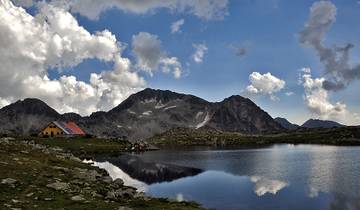
Here are the important factors:
- 12 trip options analyzed
- $110 average price per day (USD)
- 4 to 11 days in length
- 4.55 of 5 average rating
- 30 people or less on average
You'll be surprised at the array of budget tours in Bulgaria, as there is something for everyone. It's no wonder that visitors can't get enough of these tours, boasting an impressive average guest rating of 4.55 out of 5 stars. Picture yourself joining a group of like-minded adventurers, with an average maximum size of 30 people, ensuring a fantastic blend of social and personalized experiences. The average tour length spans 8 days, with tours ranging from 4 to 11 days long. For physical activity , the tours are marked as easy, moderate, and serious, with a prevalent number on easy tours. When it comes to transportation , tour options are organized as coach / bus and self drive, with a majority being coach / bus tours. With our thorough analysis of 12 budget tours, we've found the best. So rest assured that Bulgaria has something to captivate every kind of traveler.
(All tour prices are in US Dollars before taxes, and come from a base price that is reported by TourRadar. Peak season prices can vary significantly, particularly in destinations where seasonal travel fluctuates dramatically.)
So, let's get to it and see...
The 10 Best Budget Tours in Bulgaria
Rila-pirin mountain trek (bulgaria), guaranteed departures.
- On Sale: 10% Off See Prices
- Great Value: the daily price is lower than average for budget tours.
- High Quality: guest ratings are higher than average.
This 8-day journey is ideal for guests from 10 to 79 years old. And priced at only $83 per day, it's a great value, too. Get ready to fully embrace hiking and mountain hikes. Experience a trip that takes you to 8 remarkable destinations, including Malyovitsa, Seven Lakes National Reserve, Rila, and Bansko. You'll start and end your journey in beautiful Sofia. It's offered by Penguin Travel , a very popular company with rave reviews and knowledgeable guides.
- Hiking & Trekking
- Mountain Hikes
Peaks & Lakes of the Pirin and Rila Mountains
Priced at just $125 per day, this terrific 8-day voyage is ideal for guests from 13 to 70 years old. Explore 9 incredible locations on this trip, including Pirin National Park, Mount Vihren, Rila, and Seven Lakes National Reserve. Sofia kicks off your expedition, serving as both the starting and finishing point. Organized by the reputable Traventuria , this is one of the best tours on this list.
- In-depth Cultural
- Winter Walks
Summits and lakes of the Rila and Pirin Mountains (self-guided walking tour; all ground transfers included)
Check out this incredible trip that has received a 5 out of 5 rating from previous guests. With a duration of 8 days, this journey ensures an intimate group size of 12 people, and is good for guests from 12 to 70 years old. Discover a journey that spans 9 destinations, with notable stops in Seven Lakes National Reserve, Rila, Bansko, and Gotse Delchev. You'll start and end this amazing trip in Sofia. This fantastic option, organized by Traventuria , presents an unbeatable value at just $111 per day.
- Walking Tour
In the Footsteps of Orpheus (self-guided walking tour)
Spanning over 8 days, this journey has a maximum size of 8 individuals. Welcoming guests from 12 to 70 years old, it is organized by Traventuria , a very popular company with plenty of great reviews. This trip takes you on an adventure to 8 destinations, including Bachkovo, Devin, Trigrad, and Beden. Sofia will be both the start and end of your journey. Available at an unbeatable price of only $111 per day, this option also has a rating of 5 out of 5 stars from previous guests.
Rodopi Road Cycling (Bulgaria)
Here's your chance to take off on an exceptional voyage that has garnered a 4 out of 5 rating. With a duration of 8 days, this jouney will have 7 participants, and it warmly welcomes guests from 2 to 7 years old. This extraordinary adventure also revolves around cycling and family-friendly activities. Expertly organized by Penguin Travel , this amazing trip is an incredible value at just $99 per day.
- Road Cycling
Balkan Village Trek (8 days progressive ride in Teteven Balkan area)
This memorable journey is offered by Penguin Travel which has received plenty of positive reviews. The trip itself has a guest rating of 4.8 out of 5 stars, and is priced affordably at $115 per day. Along the way, this journey encompasses 5 destinations, including Goliam Izvor, Glozhene, and Cherni Vit. Sofia will be the beginning and end of your trip. The maximum group size is 6 people, welcoming guests from 10 to 70 years old.
Go Local: Best of Bulgaria, Self-Drive
Set off on an extraordinary journey that has been awarded a 5 out of 5 stars by previous guests. With a duration of 11 days, this journey offers an intimate group setting, accommodating 40 individuals, while extending a warm welcome to guests from 2 and up. This itinerary covers 10 captivating destinations, with stops in Burgas, Kazanlak, Plovdiv, and Bansko, among others. Begin and conclude your remarkable journey in the gorgeous destination of Sofia. Brought to you by Destination Services Bulgaria , this exceptional deal is an incredible steal at a mere $114 per day.
Discover Bulgaria
With this option you can experience an unparalleled journey for 8 unforgettable days. It ensures an intimate group setting with 16 participants at most. Immerse yourself in a travel experience that includes 9 destinations, featuring Rila, Melnik, Devin, and Plovdiv. You'll start and end your journey in beautiful Sofia. Penguin Travel , the organizer of this journey, extends a warm invitation to guests guests from 12 to 90 years old. This extraordinary opportunity offers exceptional value at only $126 per day.
IRON GATES CRUISE, 4 days, MS Fidelio
- On Sale: 50% Off See Prices
This fantastic voyage has a rating of 4.5 out of 5 stars, visiting Serbia, Bulgaria, and Romania. Your journey will begin in Belgrade and end in Bucharest. Lasting 4 days, the maximum group size is 154 people, and it's good for guests from 1 to 105 years old. Organized by Crucemundo , this is a great deal because it's only $73 per day.
- River Cruise
Best of Bulgaria Roundtrip
With a stellar 4.3 out of 5 rating, this extraordinary journey is the perfect choice. And since the priority is on local culture and family-friendly activities, this tour is a great choice. Traverse through 7 enchanting destinations, with Plovdiv, Veliko Tarnovo, Rila, and Melnik among the must-see stops along the route. You'll start and end this amazing trip in Sofia. Spanning across 8 days, the journey accommodates 10 individuals, and is suitable for guests from 6 to 85 years old. Offered by Penguin Travel , this remarkable journey is priced at just $97 per day. Don't miss out on this incredible experience.
- Coach / Bus
See also The Best Family-Friendly Tours to Bulgaria , The Best Hiking & Trekking Tours in Bulgaria , The Best Historical Tours in Bulgaria , The Best 10-Day Tours in Bulgaria , Tours for Outdoor and Nature Lovers in Bulgaria , The Best Christmas & New Years Tours in Bulgaria , The Best Adventure Tours to Bulgaria , The Best Eco Tours in Bulgaria , The Best Sightseeing Tours in Bulgaria , The Best Cultural Tours in Bulgaria , The Best Romantic Tours for Couples in Bulgaria , The Best Walking Tours in Bulgaria , The Best Tours Under $1000 in Bulgaria , or The Best Tours for Seniors to Bulgaria for more tour ideas. With so many options, there's a guided tour or vacation package for every type of traveler.
Also, if you're departing from a specific destination, see The Best One-Week (7-Day) Tours from Sofia or The Best 10-Day Tours from Sofia for more package tour options.
How much do budget tours cost in Bulgaria?
Travelers to Bulgaria will have a large number of terrific options for budget tours at a variety of great prices. The price of budget tours here can vary by type, destinations, length, and travel style. Based on thorough data from 12 budget tours, their average daily price is a very reasonable $110 per day. If you're interested in more information about tours here, see our guide to tour prices in Bulgaria .
And for more information on Bulgaria, see Bulgaria Travel Costs and Bulgaria Hotel Costs .
Subscribe to our Newsletter
By signing up for our email newsletter, you will receive occasional updates from us with sales and discounts from major travel companies , plus tips and advice from experienced budget travelers!
Budget Your Trip

Some of the links on this website are sponsored or affiliate links which help to financially support this site. By clicking the link and making a purchase, we may receive a small commission, but this does not affect the price of your purchase.
- Privacy / Terms of Use
- Activities, Day Trips, Things To Do, and Excursions

IMAGES
VIDEO
COMMENTS
Food Budget in Bulgaria Average Daily Costs. Calculated from travelers like you. While meal prices in Bulgaria can vary, the average cost of food in Bulgaria is $17 (ư30) per day. Based on the spending habits of previous travelers, when dining out an average meal in Bulgaria should cost around $6.61 (ư12) per person.
Europe / Bulgaria /. For a trip to Bulgaria, you should plan for daily costs anywhere between $28 to $162. If there's two of you traveling, your daily expenses could range from $57 to $323. These price ranges are based on the average daily spending of $69 (ư125) per person which comes from the travel expenses of other visitors.
As evidenced above, it is incredibly possible to travel in Bulgaria on even the tightest of budgets and still have your money go a very long way. These costs are listed per person per day and assuming that some costs (like accommodation or a car hire) are split between two people. Accommodation: €10-70 / night. Transportation: €5-15 / day
The average cost for one person to visit Bulgaria for a week is $690-$1,332 ($99-$190 per day) Food, Travel, and Sightseeing: $27 to $54 per day for one person's daily expenses. Flights: $261 to $612 for economy. Lodging: $40 to $55 per night for one 2 or 3-star hotel room. or $46 to $57 per night for a 1-bed vacation rental
Bulgaria Travel Costs. Accommodation - Hostel dorms with 5-8 beds cost between 15-25 BGN per night. Private hostel rooms cost 30-60 BGN per night. ... On a "luxury" budget of 200 BGN per day or more, you can stay in a hotel, eat out for all your meals, drink more, rent a car or take more taxis, and do whatever tours and activities you ...
On this budget, you can have a fantastic time in Sofia for $50-70 USD per day, and that range largely has to do with whether you are traveling solo or with a travel partner (solo will be more expensive) and just how much exactly your accommodation costs. However, it is possible to do Bulgaria in absolute luxury and not spend too much money ...
The bus from Sofia to Bansko cost us 16lev (£6.50) each and from Bansko to Plovdiv cost 14lev (£5.70). The Total Cost to Travel in Bulgaria. After totting up our expenses, the total cost to travel in Bulgaria worked out at £23 per person per day, not including flights.
On average, the cost of living in Bulgaria in 2024 is 39% less than in the United States (USA). The graphic below shows the percentage of variation between prices United States in in the United States (USA) and United States by types of expenses: % Price variation between Bulgaria and United States in 2024 Restaurant Hotel Food Transport ...
The cost of renting or buying an apartment in Bulgaria varies according to its location. On average, renting an apartment with one bedroom and a living room outside the city center costs approximately 658 BGN (358 USD) per month, while the same type of apartment in the city center can cost around 854 BGN (465 USD) per month.
Budgeting Accommodation. Budget - You can find prices for a hostel for about 18-22 leva.Enjoy dorm-styled or private rooms, free breakfast, storage lockers, and great locations in the city. Mid Range - For mid-range hotels, expect to pay between 60-80 leva per night.Stay in private rooms, workout at the fitness center, dine at the hotel restaurant and bar, and swim in the pool (indoor or ...
Sofia Travel Costs. Hostel prices - A bed in a hostel dorm with 4-6 beds costs between 12-25 BGN per night. For a private room in a hostel, expect to pay between 35-75 BGN per night. Free Wi-Fi is standard and most hostels also have self-catering facilities.
Average Solo Traveler. The average cost for one person to visit Sofia for a week is $740-$1,618 ($106-$231 per day). Food, Travel, and Sightseeing: $21 to $47 per day for one person's daily expenses. Flights: $407 to $983 for economy. Lodging: $31 to $51 per night for one 2 or 3-star hotel room. or $33 to $41 per night for a 1-bed vacation rental
Budget: $40-$50 per person per day. This is assuming you are eating from casual to-go places and grocery stores and staying in a cheap Airbnb or hostel. Mid Range: $60-$80 per person per day. With $60-$80 you should be able to eat at least one nice sit down meal per day and stay in a nice Airbnb or cheap hotel.
Thracian Tomb, Things to know before traveling to Bulgaria. #11 Bulgaria is the biggest producer of Rose oil in the World. In fact, it produces more than 80% of the world's Rose Oil and Rose Water. All the oil is produced in only one region, called Rose Valley, and it is regarded as the best in the world.
Bulgaria travel costs are incredibly cheap - which shouldn't be surprising, considering it's located deep in Eastern Europe. However, it is also in the European Union. ... Total Per Day: $26: $80: $170: Money in Bulgaria. Bulgaria hasn't got around to adopting the euros yet, so you'll still be operating in levas.
If you want to spend a week in Bulgaria the cost of your stay will be: 471 USD (864 BGN) - a cheap stay for 7 days in Bulgaria. 586 USD (1,000 BGN) - a budget travel for 7 days in Bulgaria. 792 USD (1,400 BGN) for a one week of comfortable stay in Bulgaria. 2,000 USD (3,600 BGN) for a week of luxury holidays in Bulgaria.
Accommodation: The average cost for a budget hotel room in Bulgaria is around 40-50 BGN (23-29 USD) per night, while mid-range hotels can cost around 70-100 BGN (41-58 USD) per night. Hostels are also available for around 20-30 BGN (12-17 USD) per night. ... Budgeting for Bulgaria: Average Costs for Accommodation, Meals, and Activities
Costs - Bulgaria is overall a very affordable travel destination. Food, transportation, and hotel costs are very low in comparison to many other places. ... 5 Day Bulgaria Itinerary. ... Excluding our tickets, we spent about $500 per person for the entire trip (including food, accommodations, car rental, fun activities, etc). And keep in mind ...
August 2010 in Bulgaria, Travel Budget Old Lada, on the way to Melnik, Bulgaria, Europe For this trip we chose a far more comfortable way of travelling than usual - first of all we stayed only 17 days, secondly the temperatures were oppressing and above all, the prices incredible cheap.
The average daily price for luxury tours to Bulgaria is a remarkably economical $155 per day, with the overall average cost of all tours being $1,233 (based on data from 18 tours). The cheapest tour is $300, and the most expensive tour is $3,823. ... And for more information on Bulgaria, see Bulgaria Travel Costs and Bulgaria Hotel Costs ...
Here is a quick summary of my 5-day Bulgaria itinerary: Day 1-2: Sofia. Day 3: Day trip to Rila Monastery or Seven Rila Lakes. Day 4-5: Plovdiv. For 10 days in Bulgaria, follow Day 1 to 5 itinerary and add these destinations: Day 6: Burgas. Day 7: Sozopol. Day 8: Nessebar.
For a seven-night cruise in the Caribbean in December 2024 round-trip from Miami with Regent Seven Seas, an all-inclusive cruise fare with suite accommodations starts at $7,398 ($3,699 per person).
Here are the important factors: 12 trip options analyzed. $111 average price per day (USD) 4 to 11 days in length. 4.55 of 5 average rating. 30 people or less on average. You'll be surprised at the array of budget tours in Bulgaria, as there is something for everyone. It's no wonder that visitors can't get enough of these tours, boasting an ...